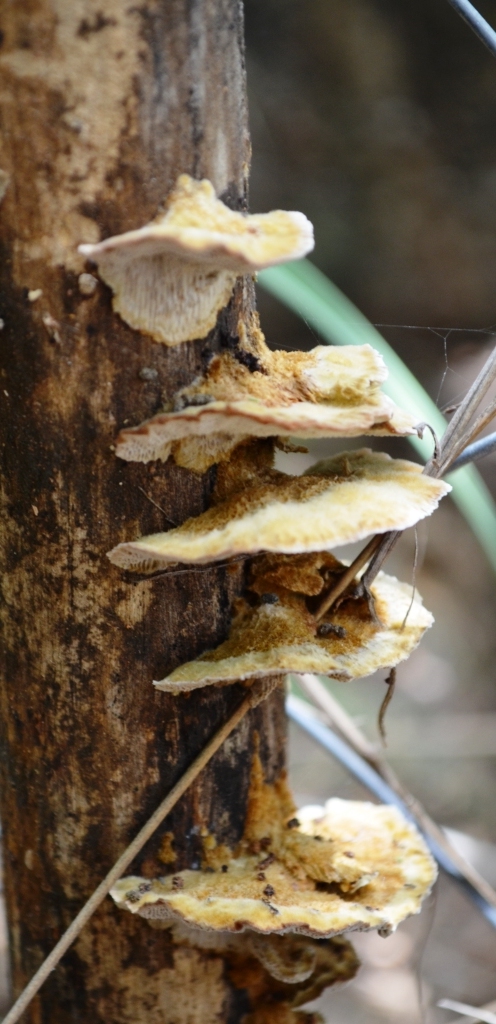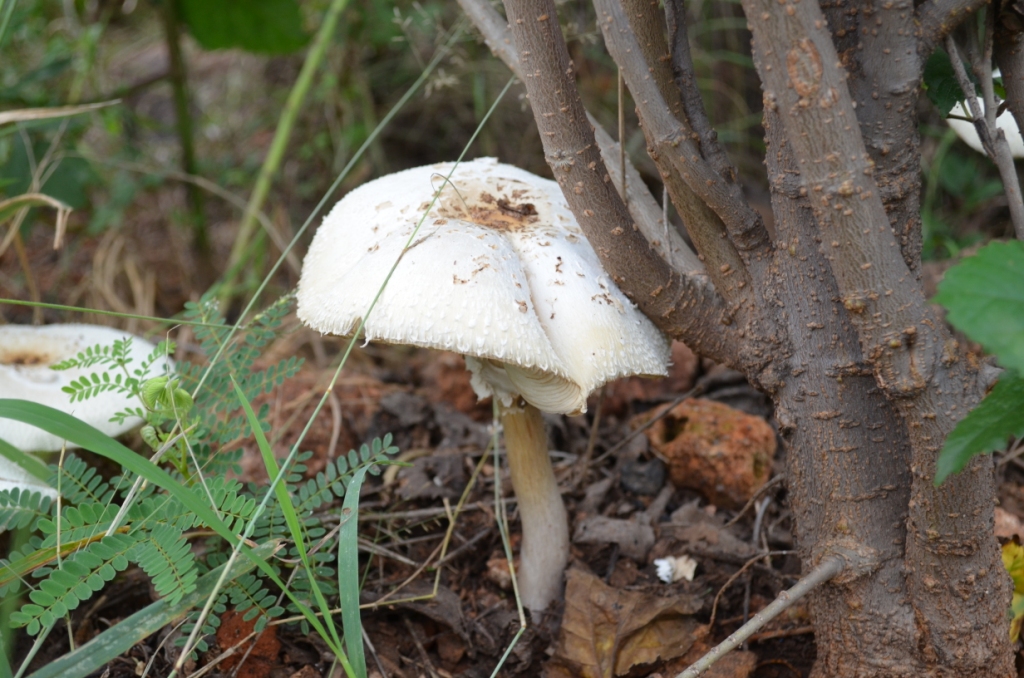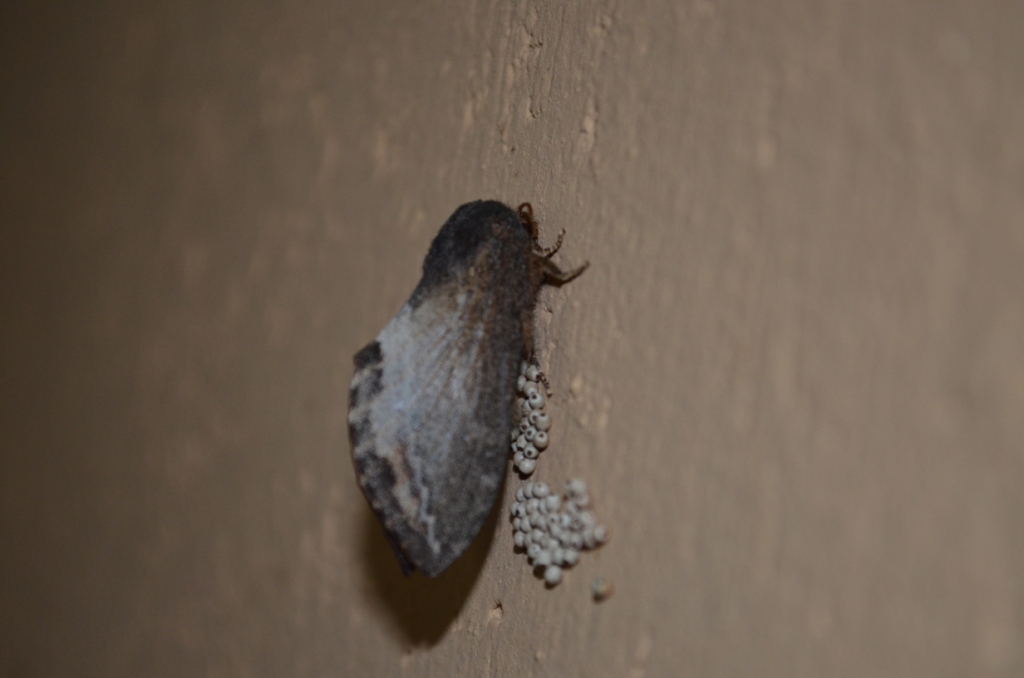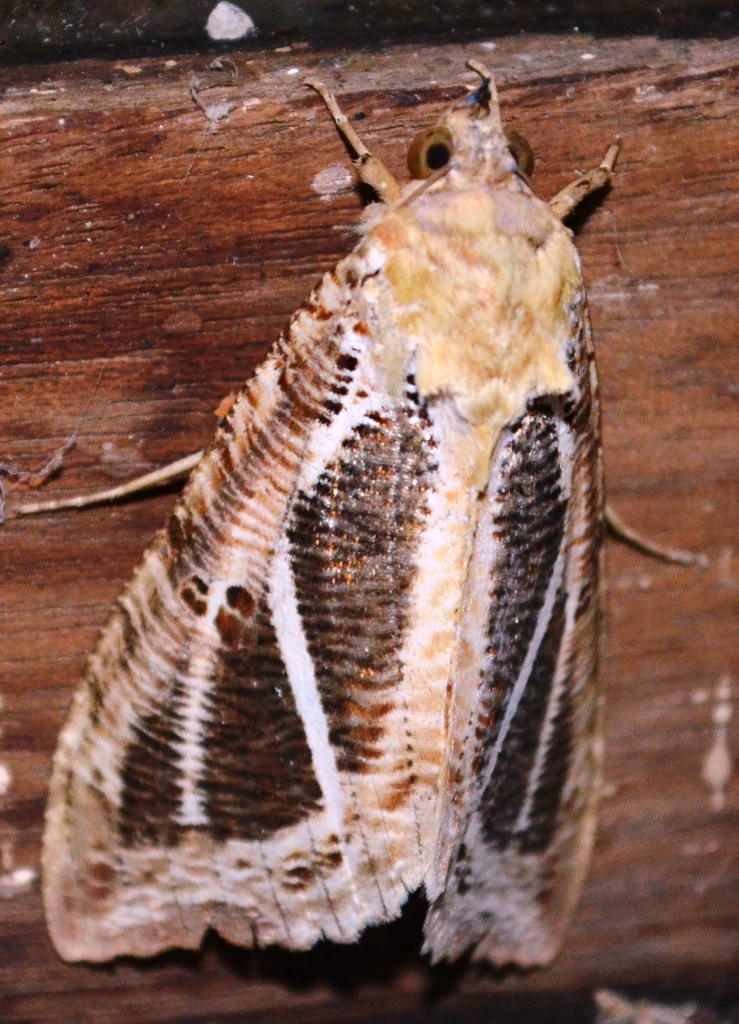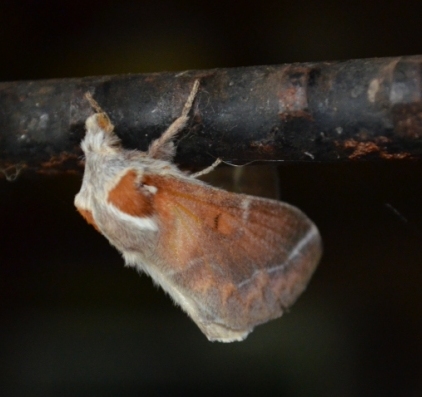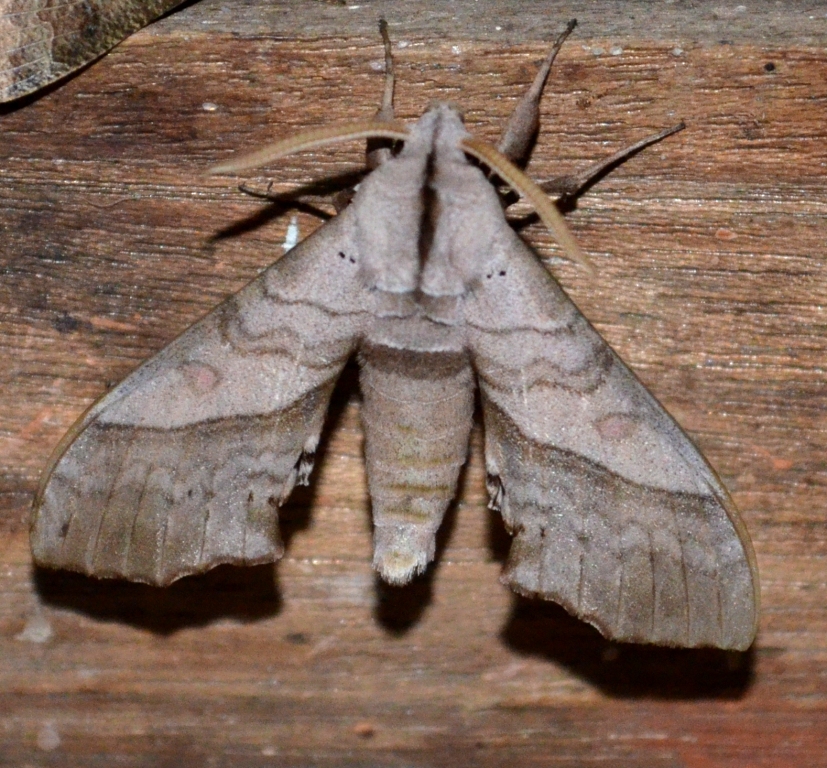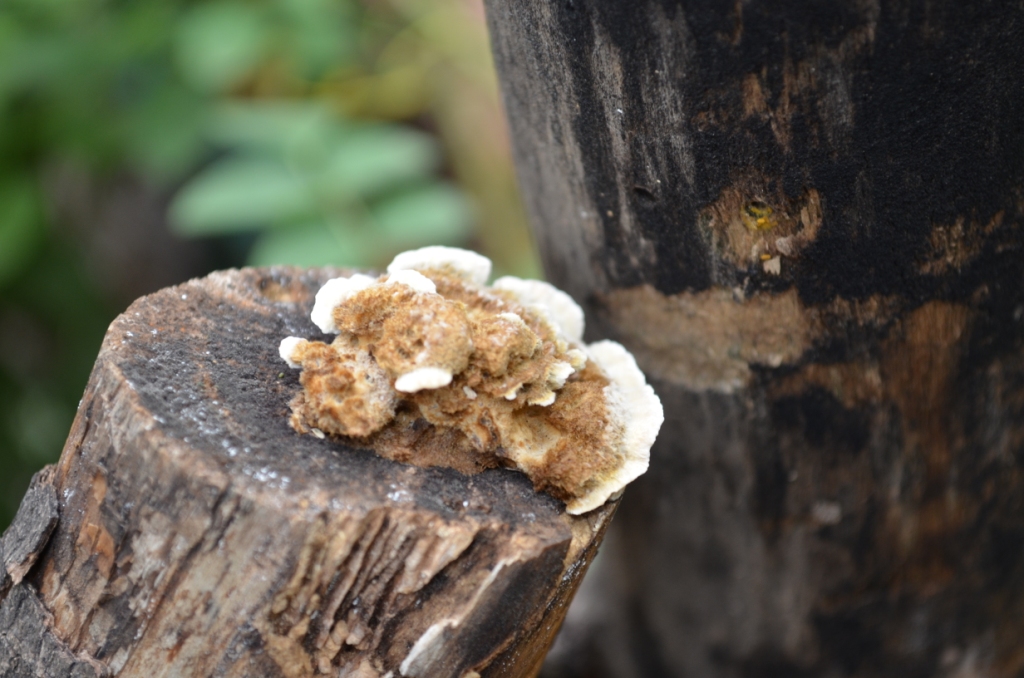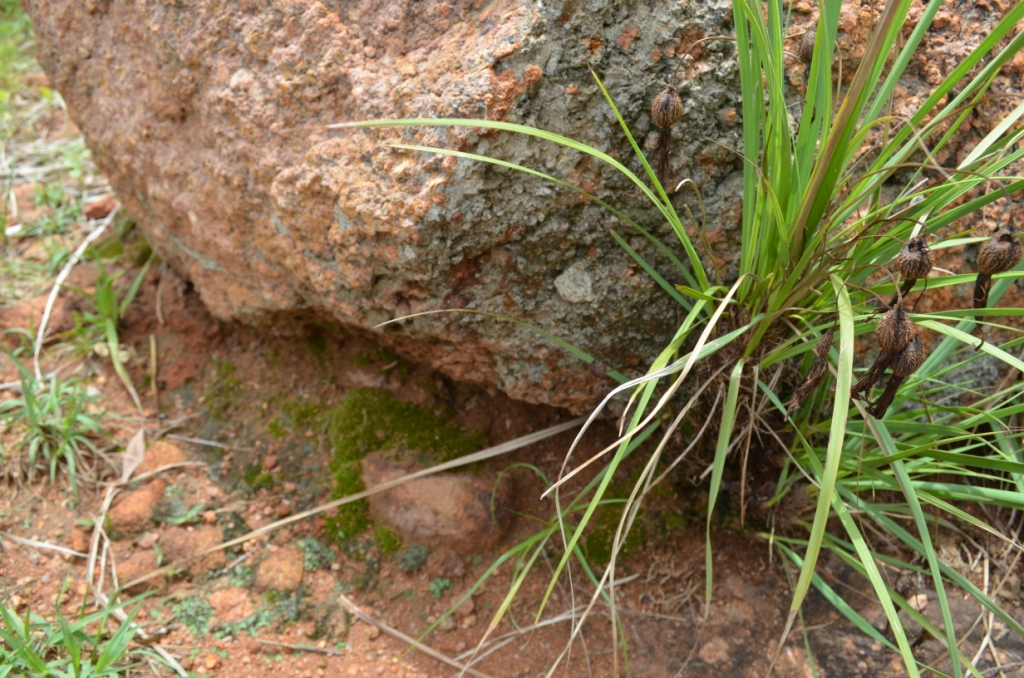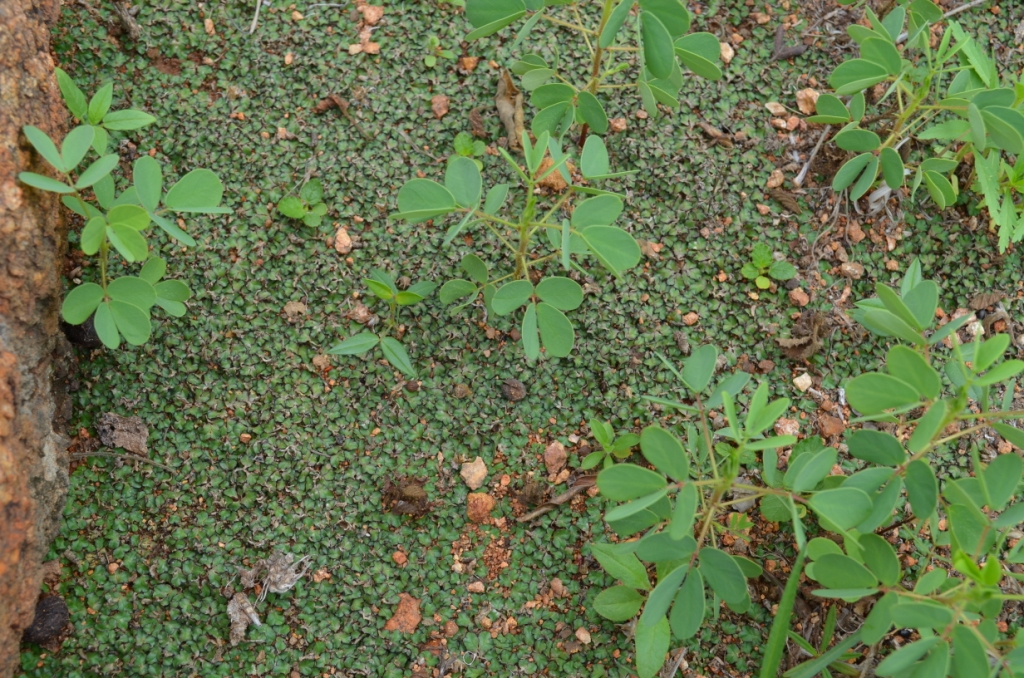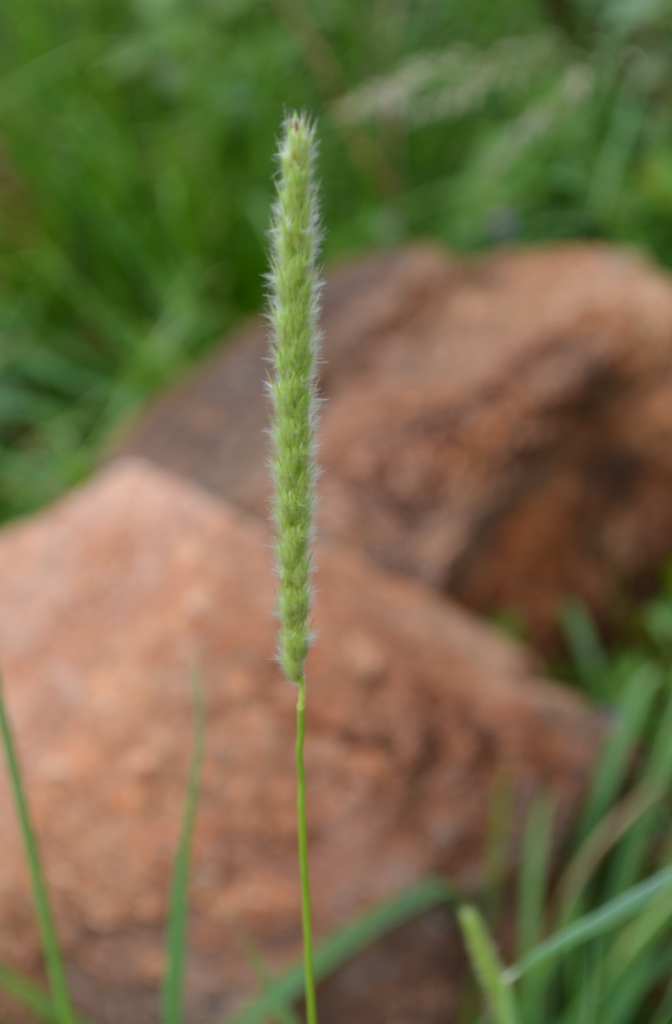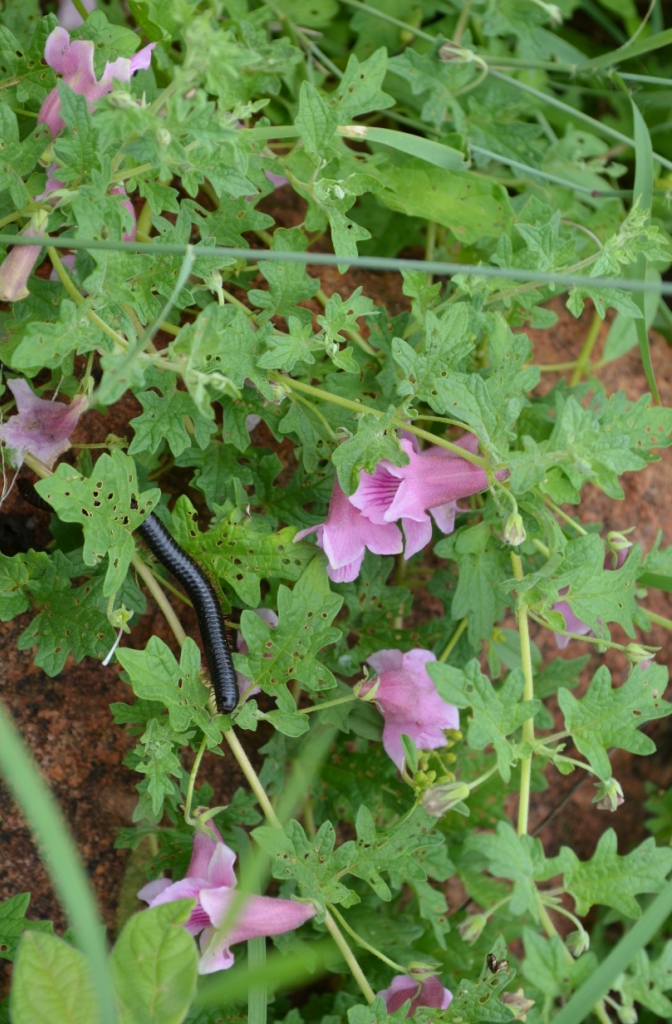Tag Archives: Botswana
March 2021
After all the rains, March has started to a beautiful cool spell of overcast weather with spells of sunshine, and a light drizzle the other morning. You can almost feel winter in the air, the mornings are cooler and with all the greenery everywhere I find this month magical.
In the Indigenous garden, almost everything has finished fruiting, and remaining Mmilos are drying on the branches. All except for the Grewias, Morojwas and Bridelia mollis. They are about to come into their own now, and will bring a deluge of barbets, bulbuls, mousebirds and a variety of others too. This morning a lovely White Breasted Robin Chat sang from in the branches of an African wattle and its moments like these that really transform the garden into a place of delight and discovery. Commelinas, Tephrosias, Hibiscus, Hermbstaedtias, Chamaecrista, Grasses, Waltherias, Oxalis and Lantana are all flowering at the moment. Weavers have put their nest for the first time in a Weeping Boer Bean, and most trees are doing really well, although they have to fend off a deluge of grasshoppers and locusts this year.
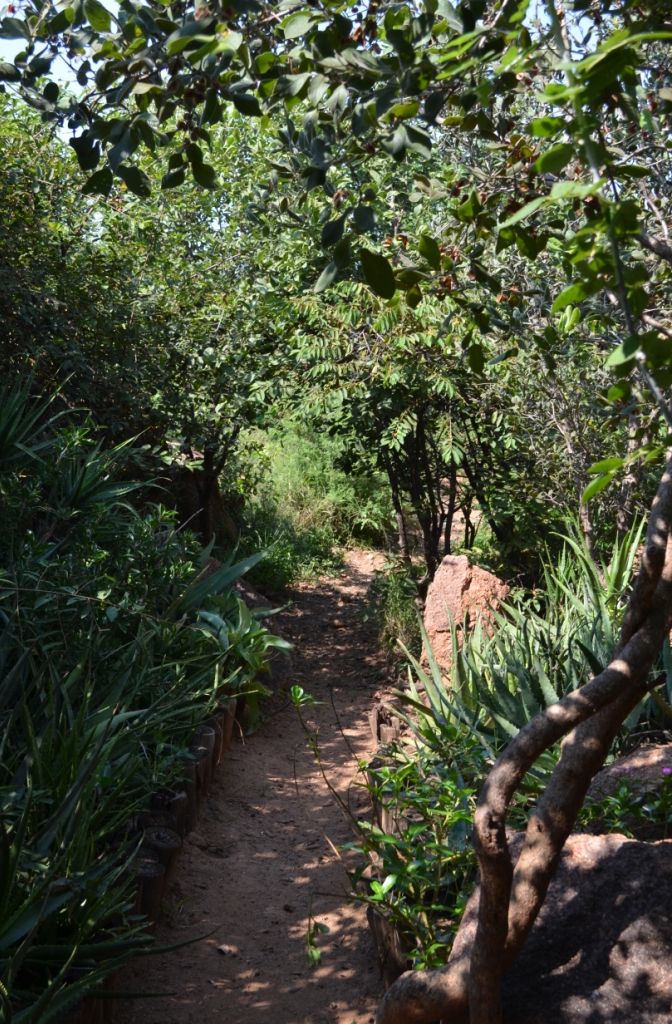
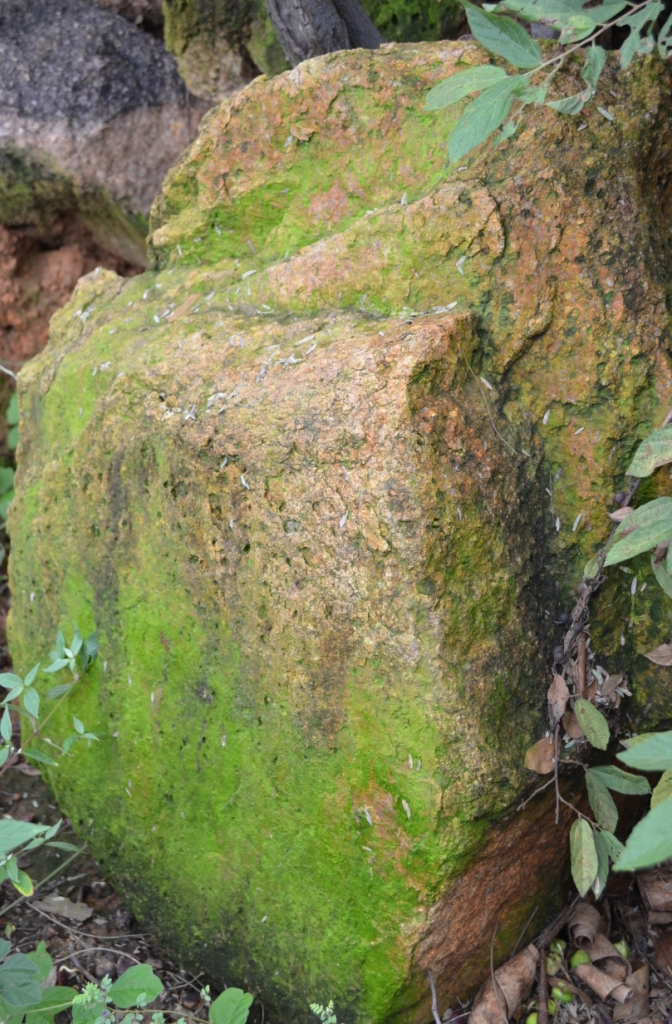
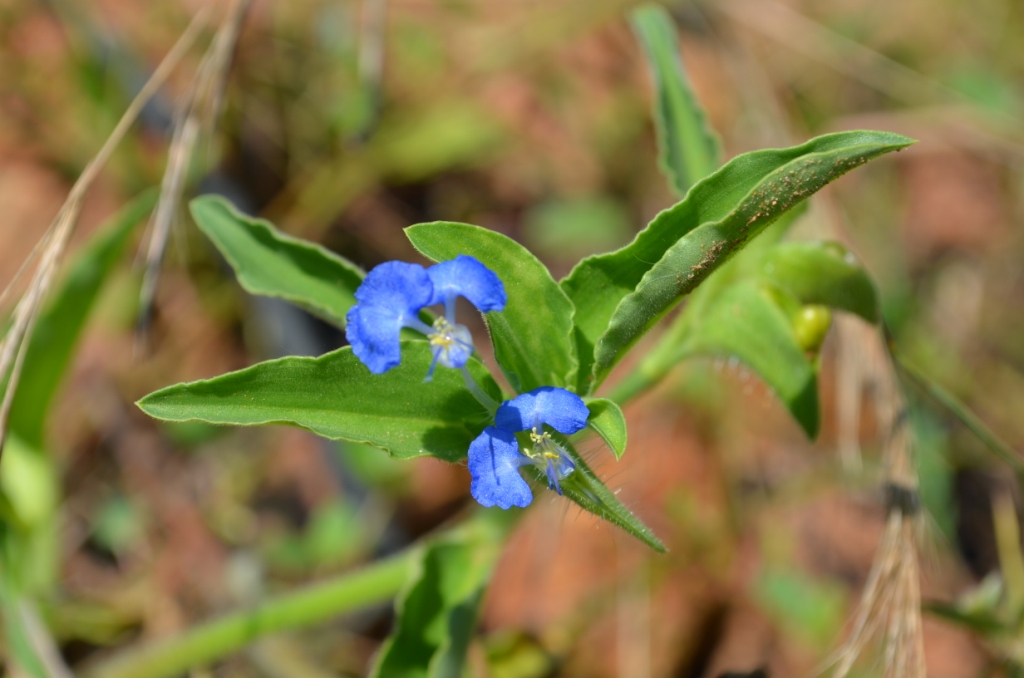
Commelina 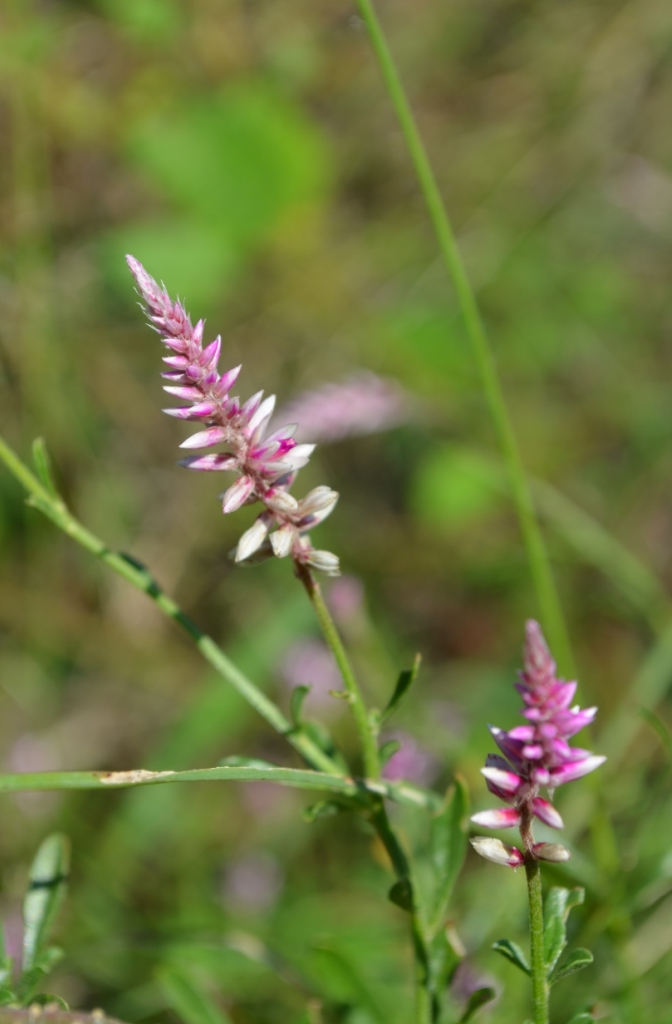
Hermbstaedtia 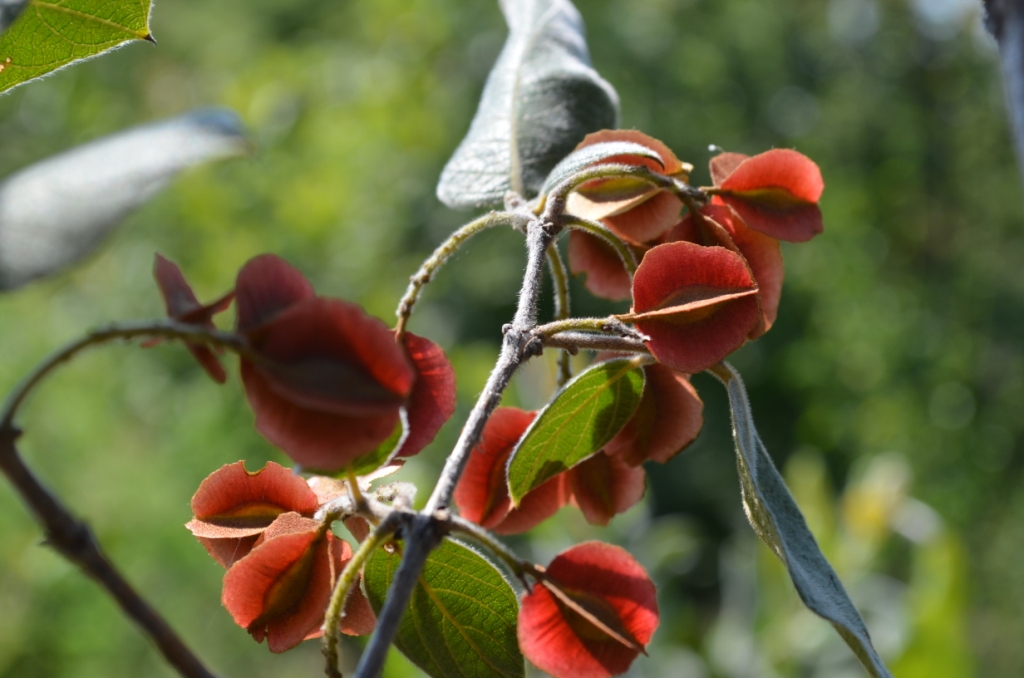
Combretum pods 
Chamaecrista 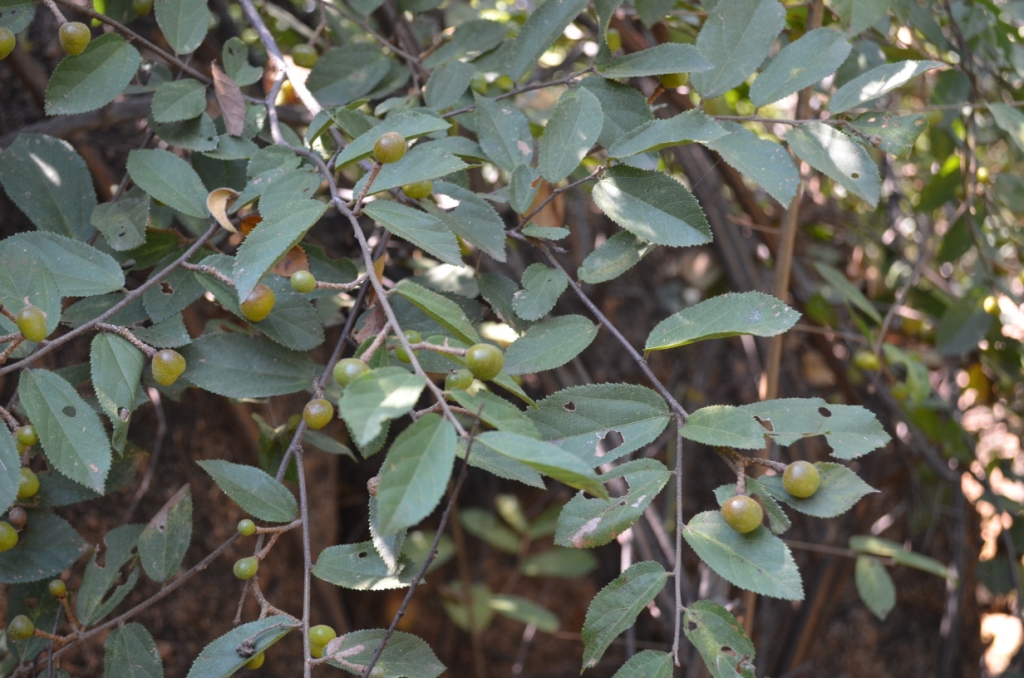
Grewia berries 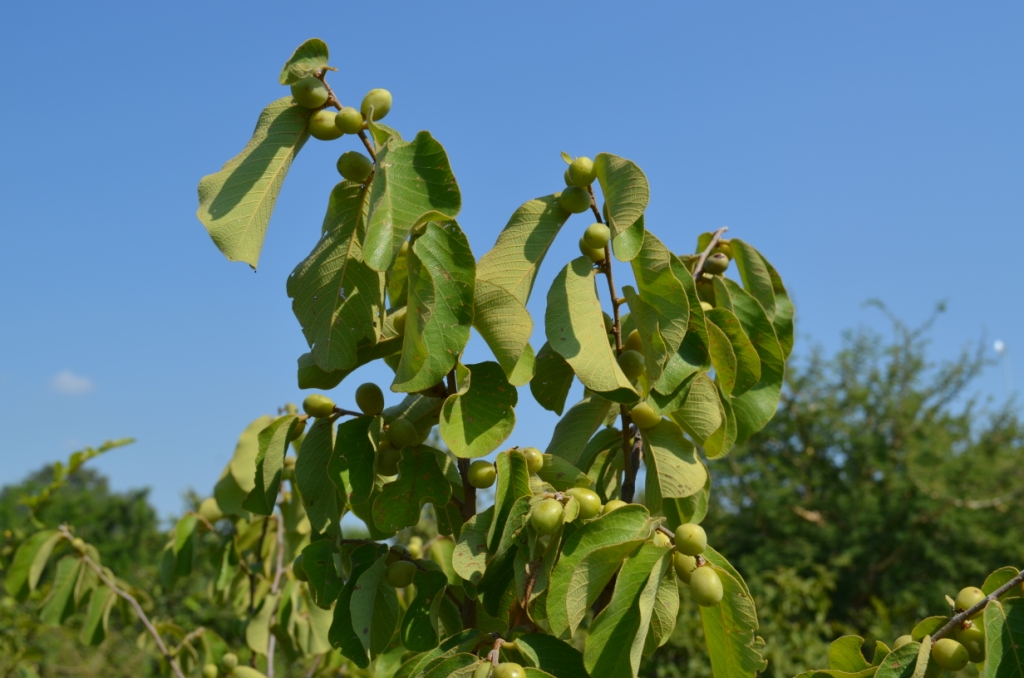
Bridelia fruit 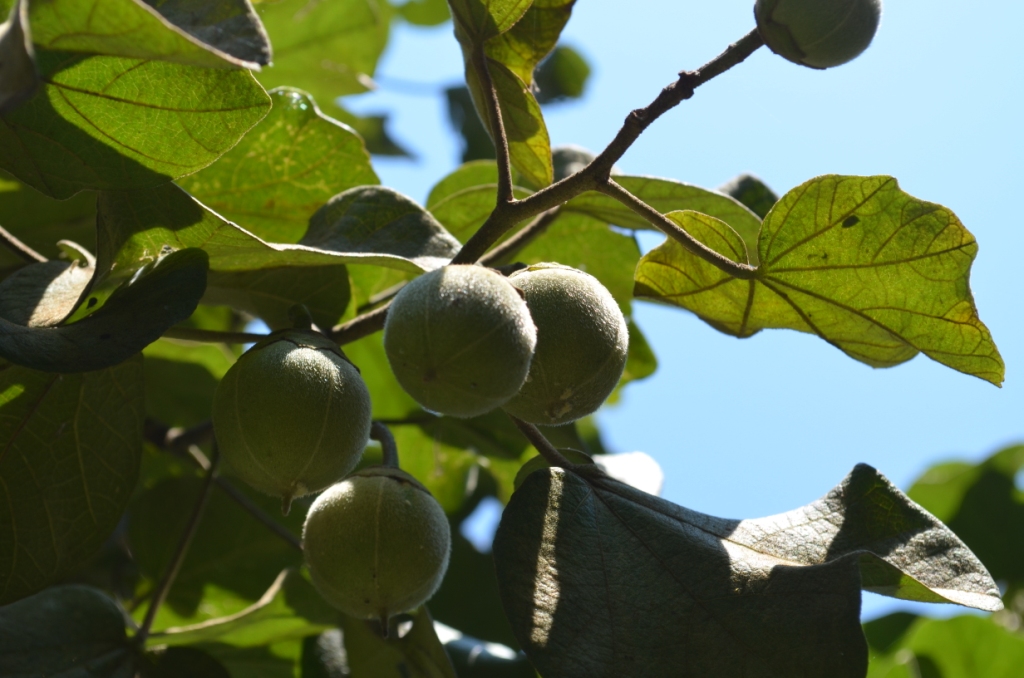
Snot Apple/Morojwa
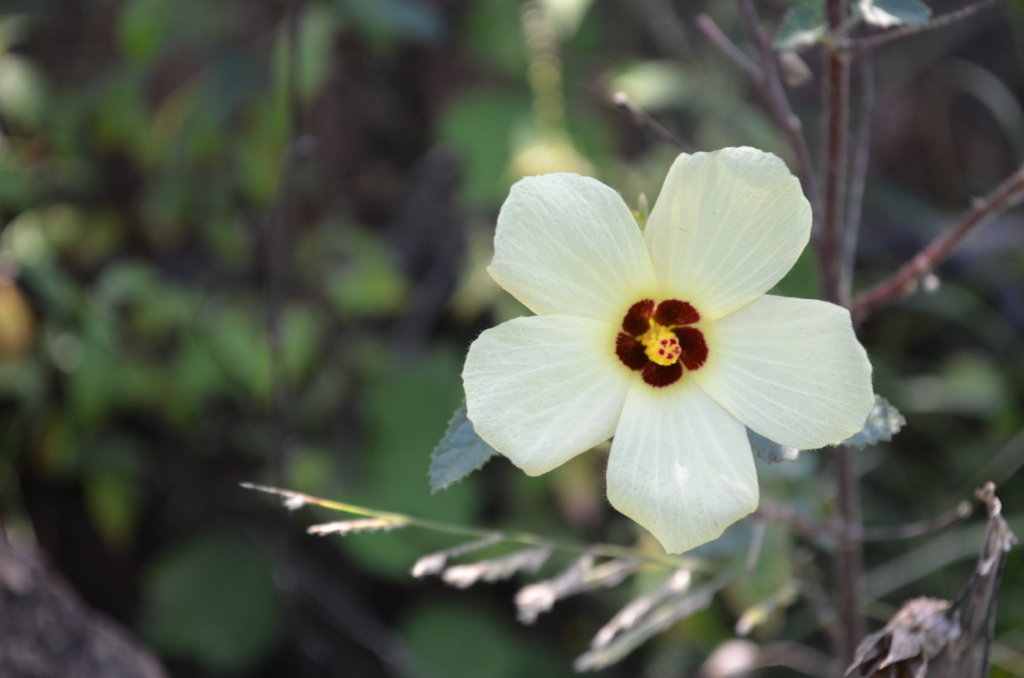
Hibiscus engleri
In the Garden, some new Phalaenopsis orchids are flowering, Verbena, Impatiens, Canna, Clerodendron, Odontonema strictum, Dutchman’s pipe, Aloes and Ruellia brittoniana.

Hibiscus 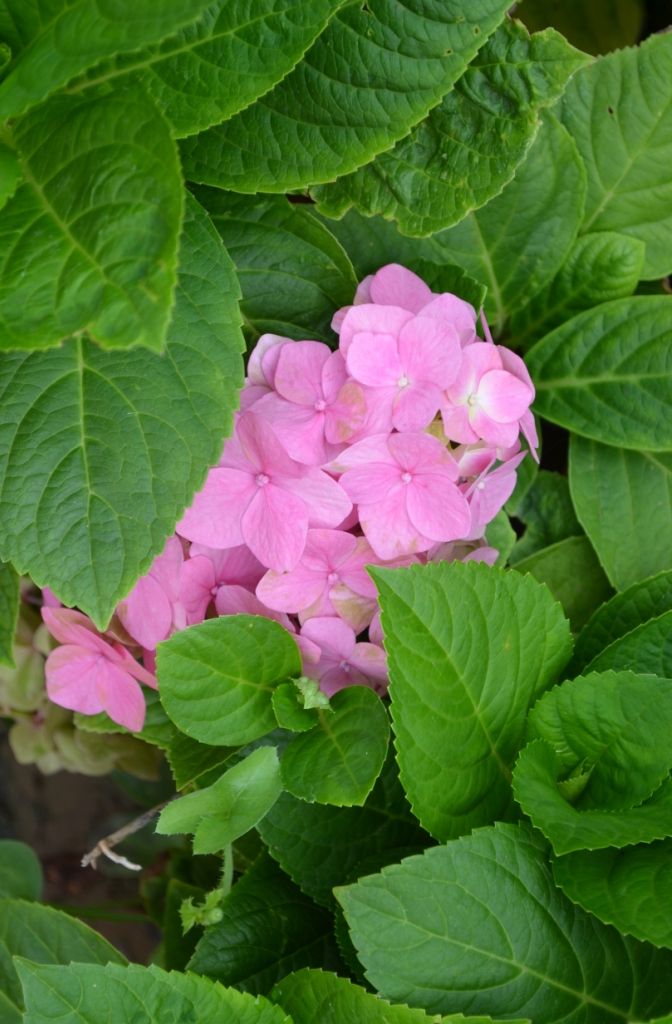
Hydrangea 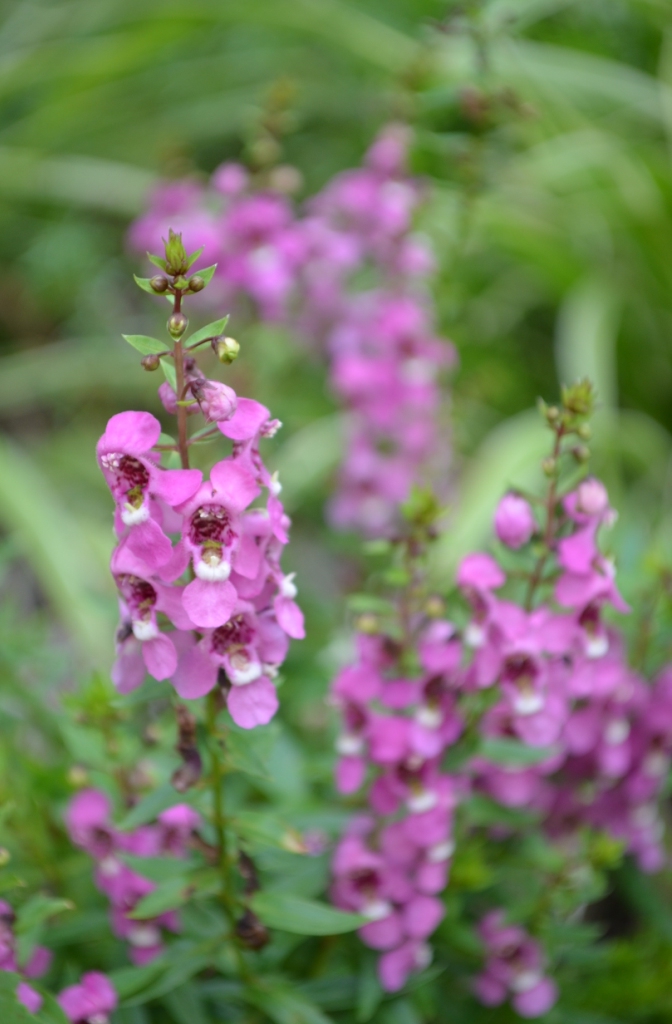
Penstemon 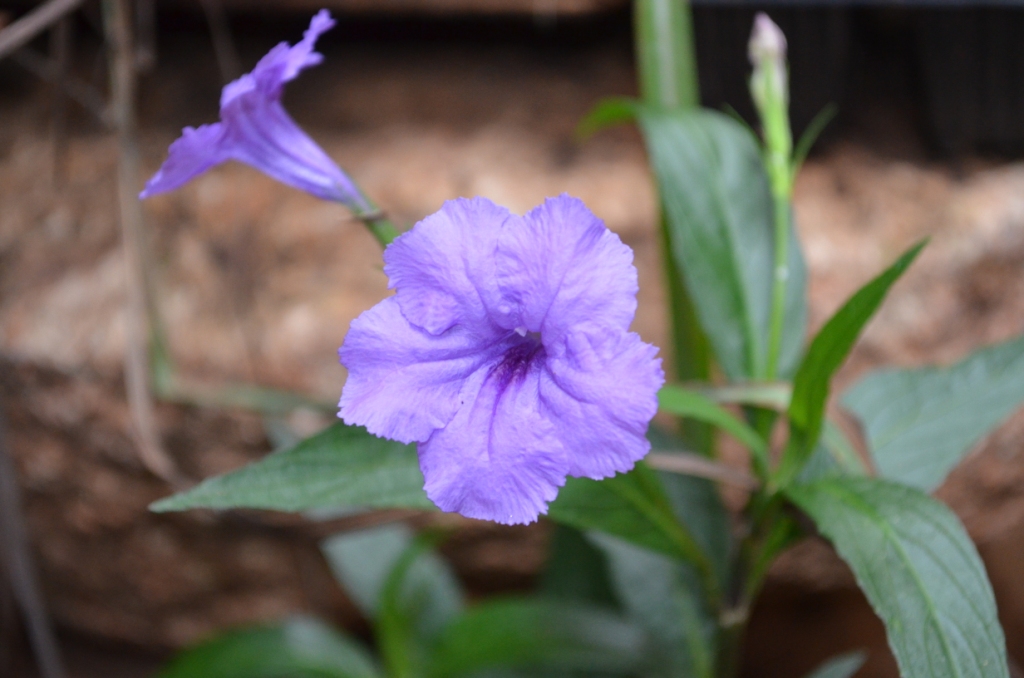
Ruellia brittoniana 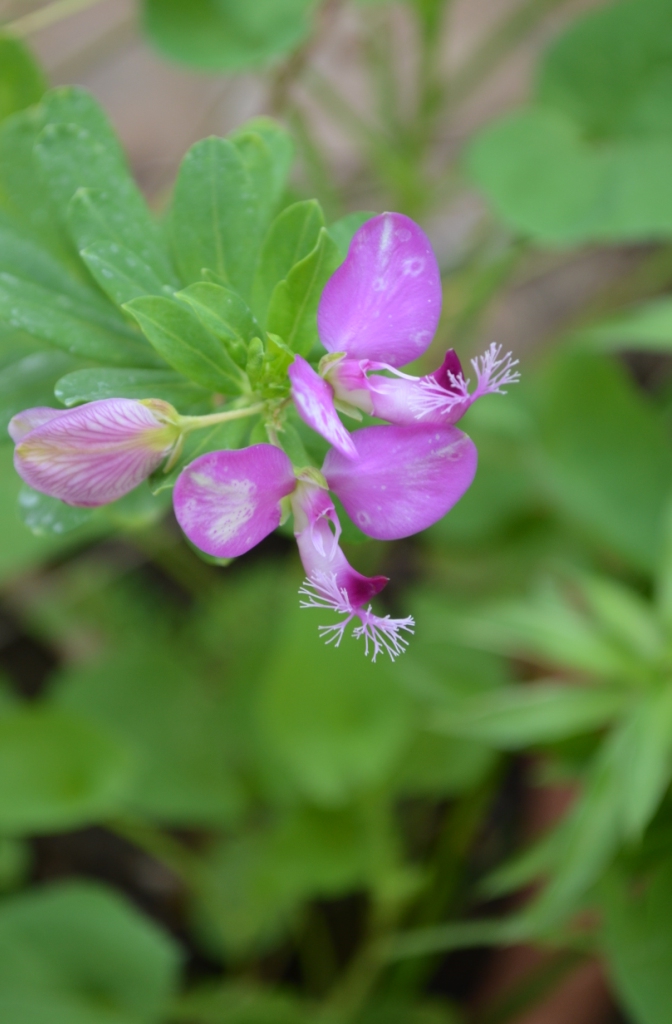
Polygala 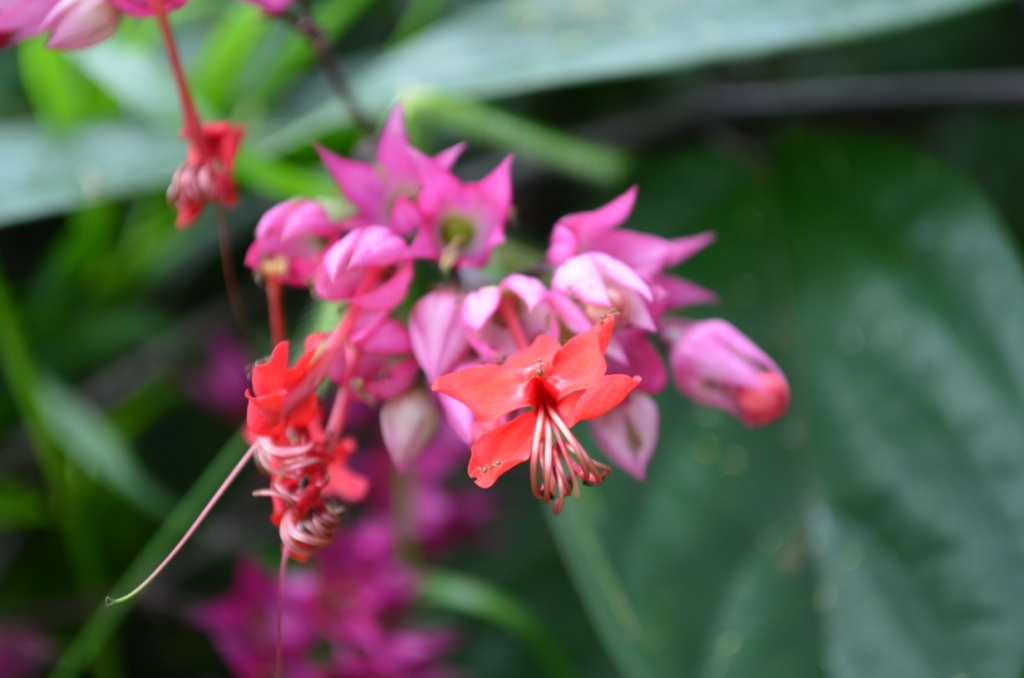
Clerodendron 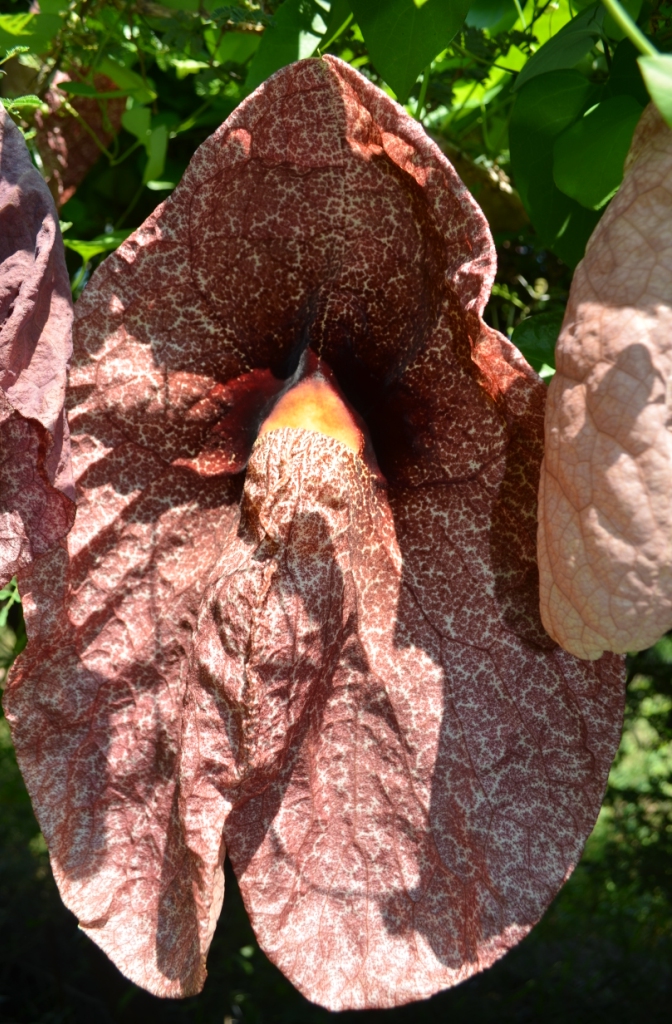
Dutchman’s pipe 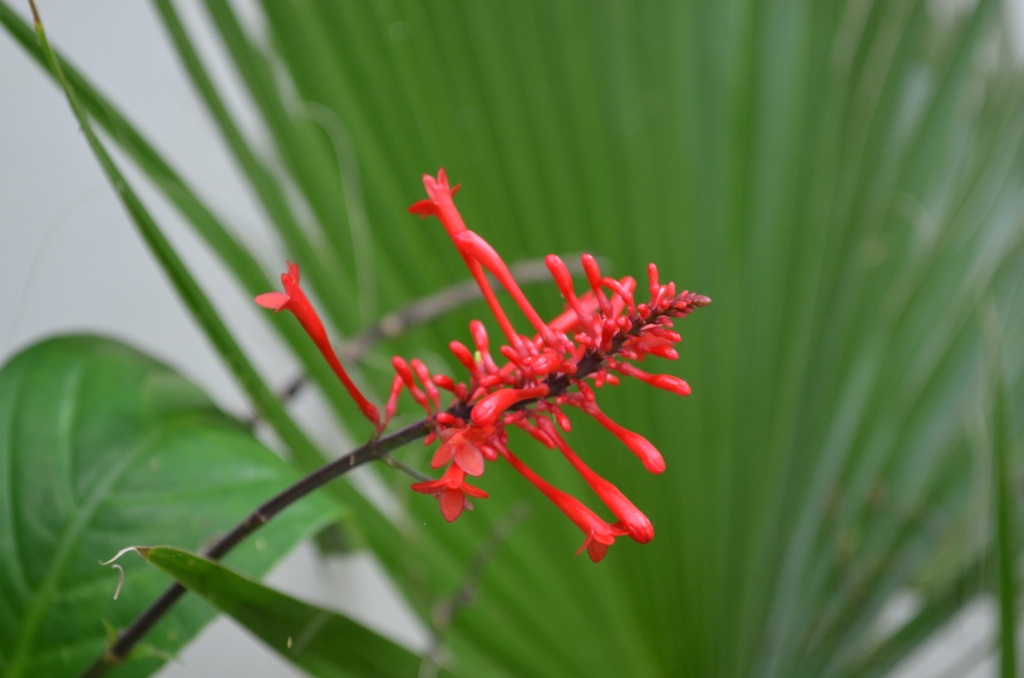
Odontonema strictum
In the Veg garden the sweet potatoes are doing well, Sorrel, Fennel, Peanuts, Maize, Sunflower, and wild Okra are all doing well.
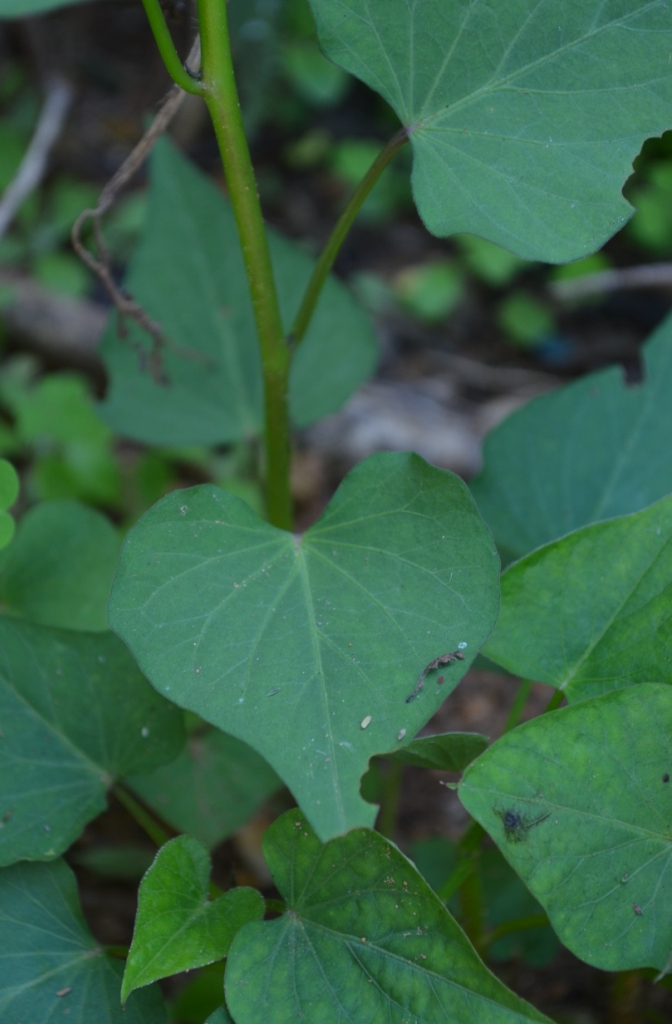
Sweet Potato 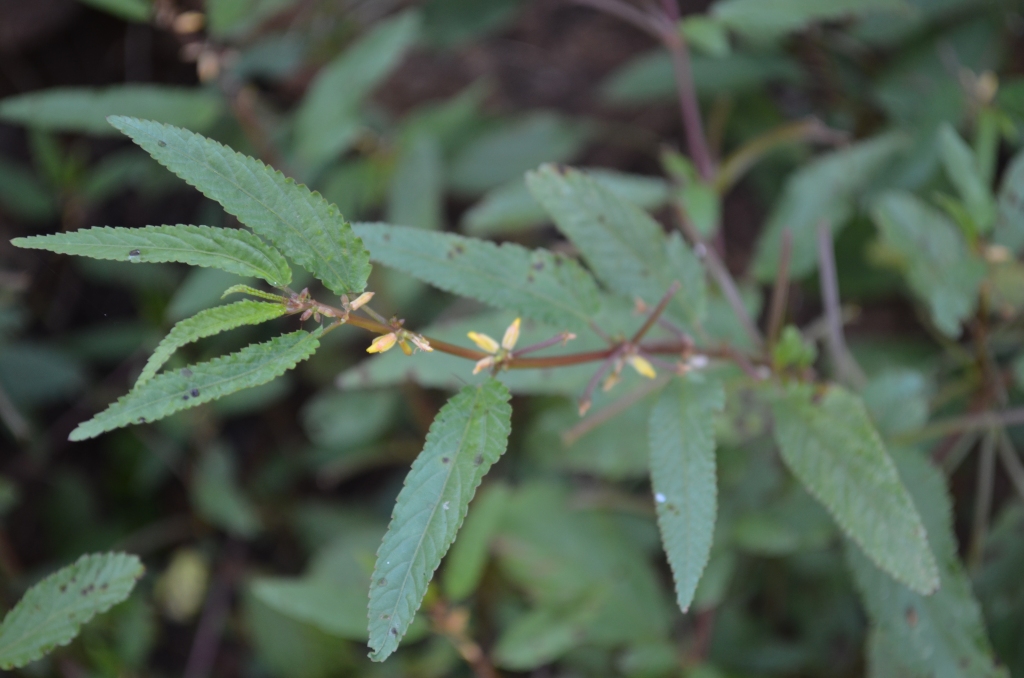
Wild Okra
In the Fruit garden, the Custard apples have fully recovered from the frost setback last winter, all prunus – plums peach etc are doing really well, the White Sapote trees, Mulberries, Elderberry, Natal plum, Kei Apple, and Pachira nuts have all grown inches higher in the wet weather. Mangos and Avos too. The lemon tree has about 20 lemons ripening on it at the moment, and the Pepinos have fended off the spider mites and mealybugs that had started in the drier weather. Marulas are ripe and causing a frenzy around the neighbourhood. When I have time I make a bunch into jelly – it’s really easy and tastes delicious!
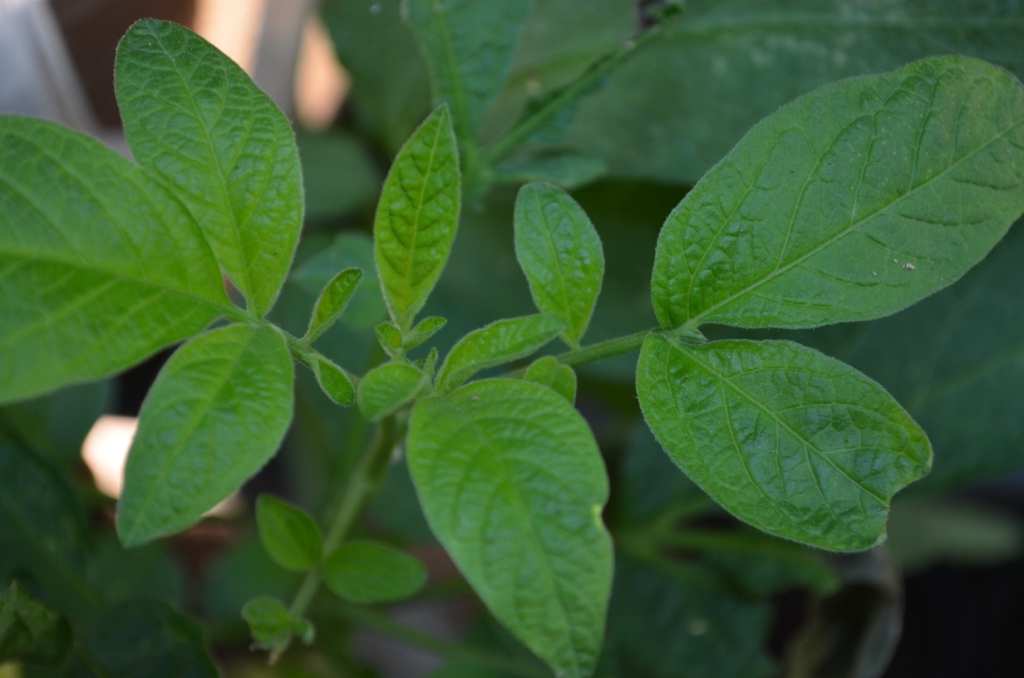
Pepino
In the Herb garden the feverfew is flowering, the oregano, gotu kola, nasturtiums are all still thriving.

Feverfew
February 2021
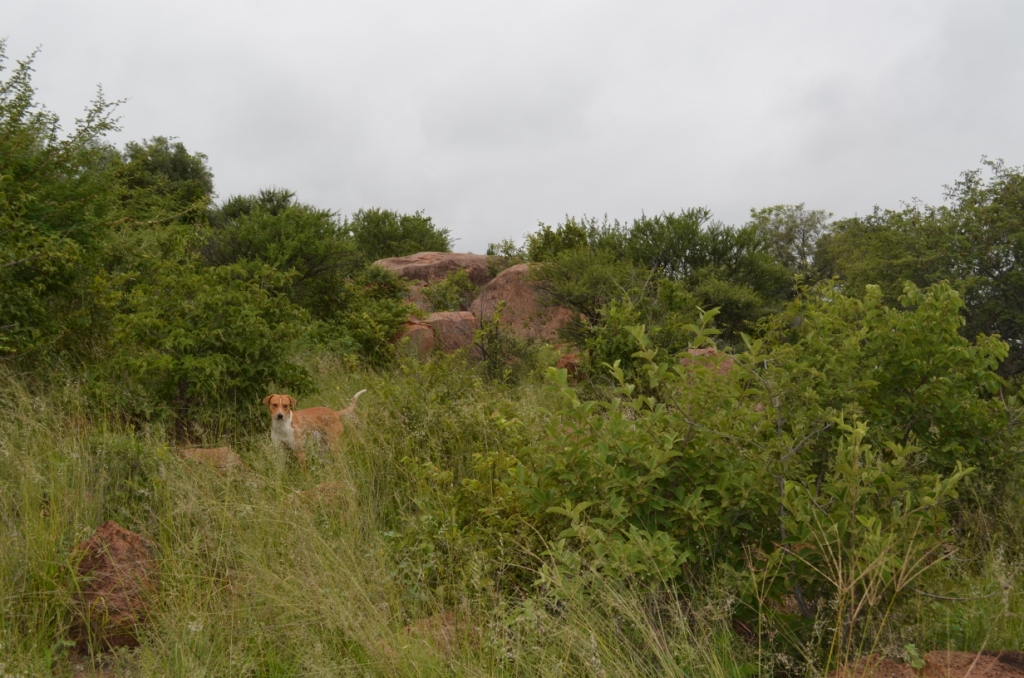
That lovely rain at the beginning of this month (33mm, 12mm, 35mm, 15mm, 24mm, 12mm) has caused a million mushrooms and fungi to sprout around the yard, old wood has brackets of fungi and bright orange polyps appearing, and I’ve been torn as to whether I should harvest some of the mushrooms, but time races by, and I’ve missed my chance. The birds that have started visiting the garden are as uncommon to this yard as the weather, carmine bee-eaters, woodland kingfishers, and I thought I even heard some parrots. This brings the rainy season’s total so far (28/2) to 648.5mm. Wow!
In the Indigenous garden, almost everything has taken a pause on flowering during the prolific rains, except for Nerine bulbs that have just started flowering, and Waltherias, Spermacoces, Indigoferas, and Tephrosias. Grasses have all put seed and most have already shed their seed too.

Nerine 
Indigofera 
Indigofera 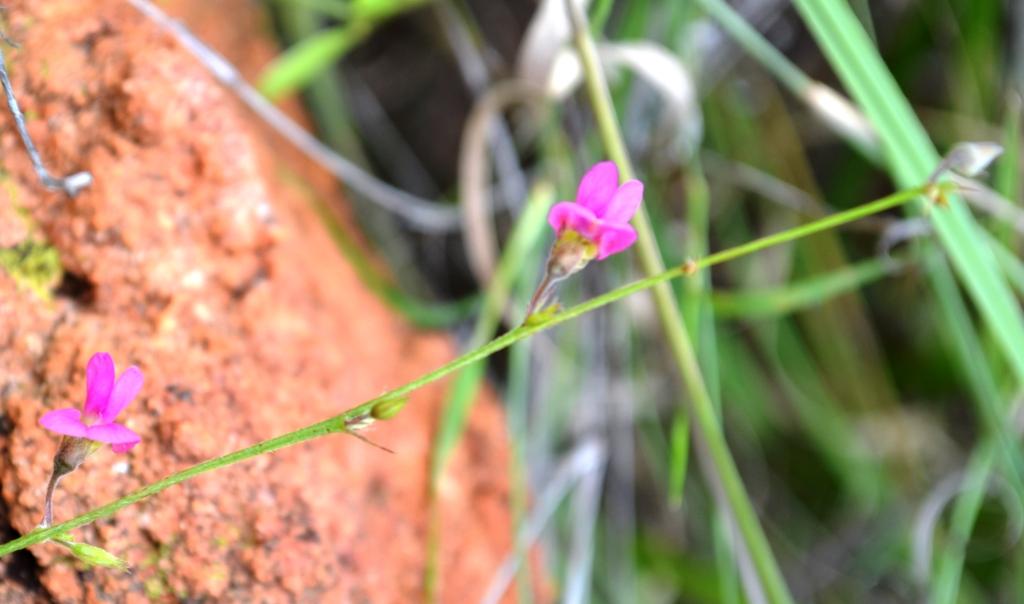
Tephrosia 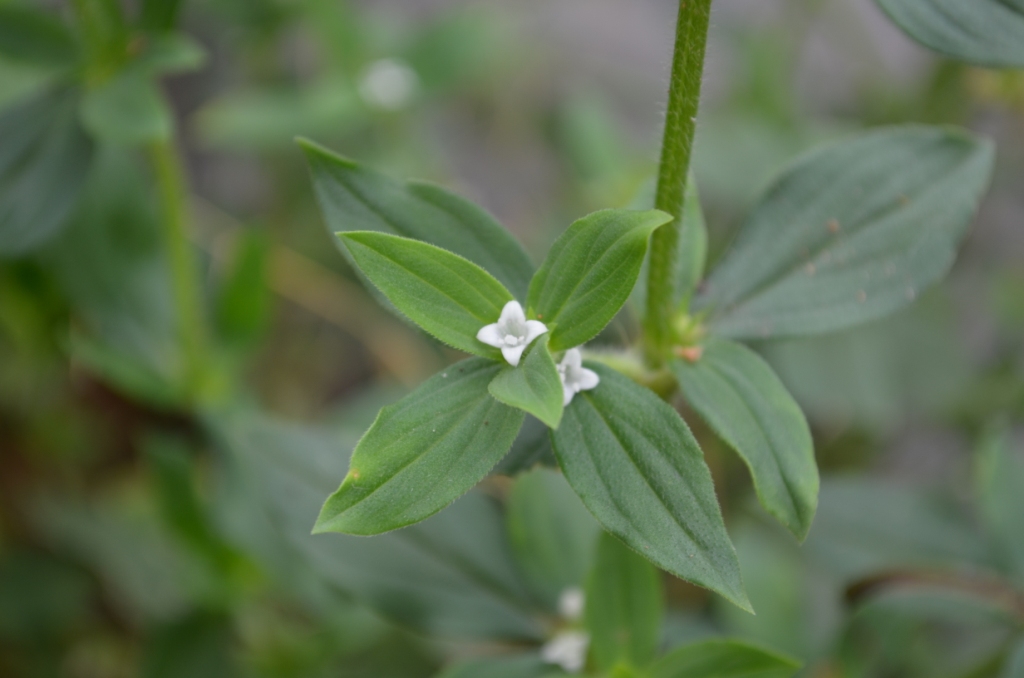
Spermacoce 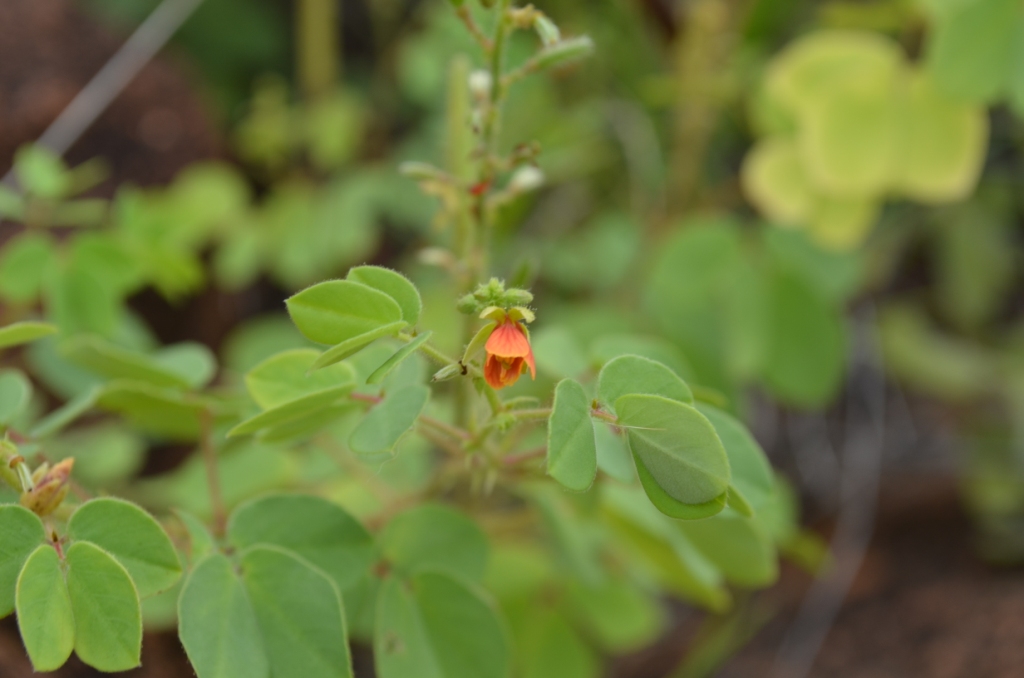
Chamaecrista
The Mmilo trees (Vangueria infausta) are still in the middle of fruiting, luckily trees are ripening at different times. The Pavetta zeyheri bushes (small bride’s bush) is also fruiting, small green bobbles, and the Vitex zeyheri too. Psydrax livida, has large bunches of fruit, and it is such a lovely tree, that I think I’m going to collect the seeds and see if I can grow a few more to put around the yard. Bridelia mollis fruits are still green at the moment, just waiting for them to turn black. Combretum seeds are turning beautiful russet oranges and reds.
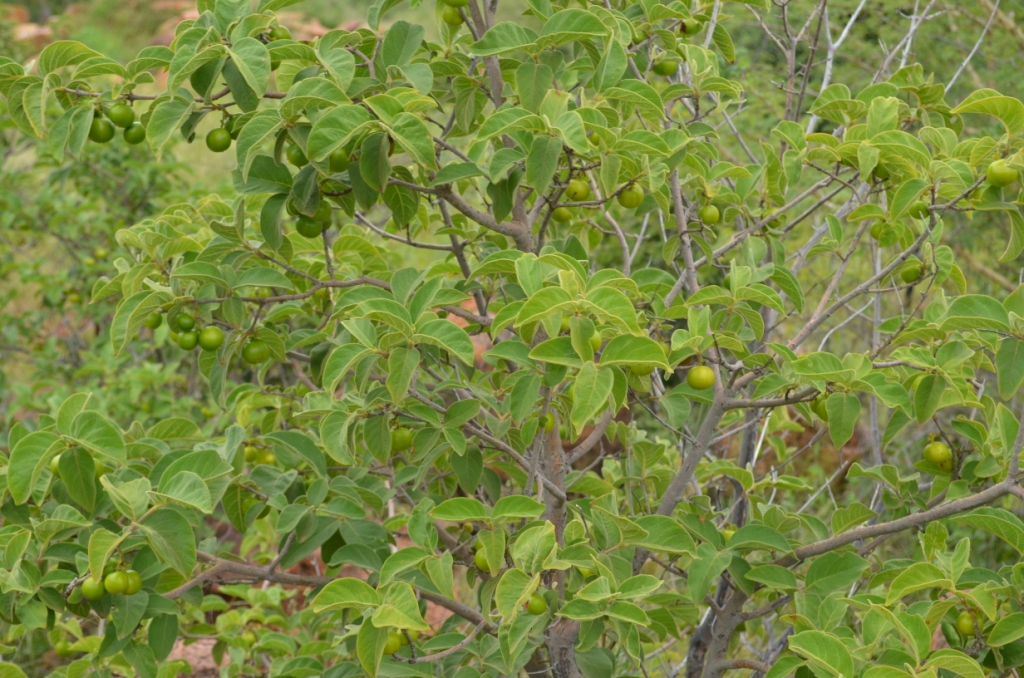
Vangueria infausta 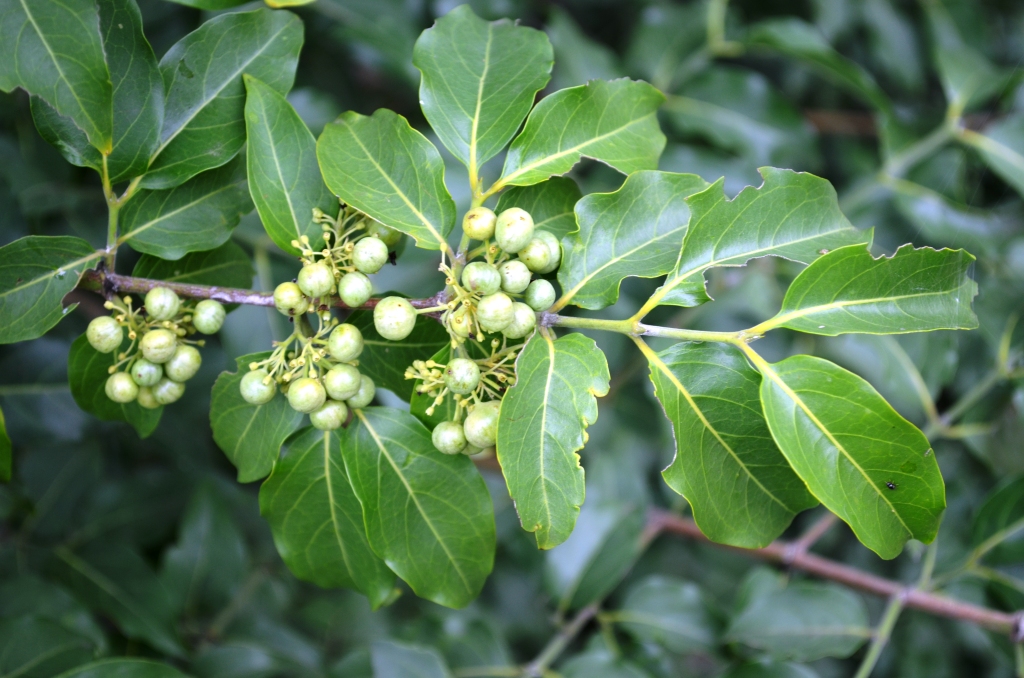
Psydrax livida 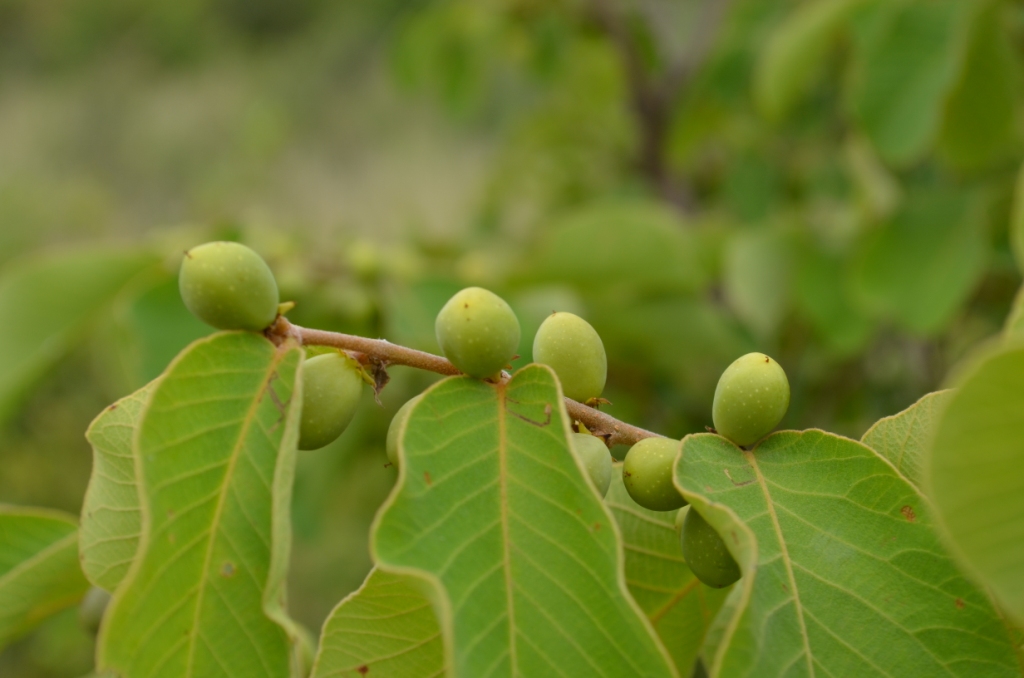
Bridelia mollis 
Pappea capensis flowers 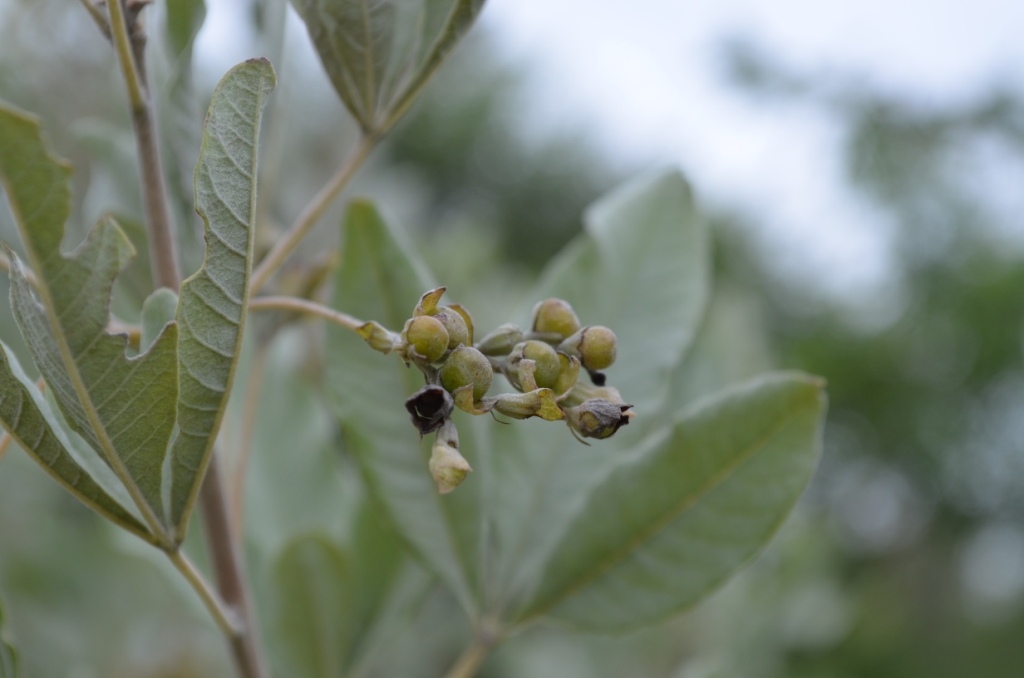
Vitex zeyheri 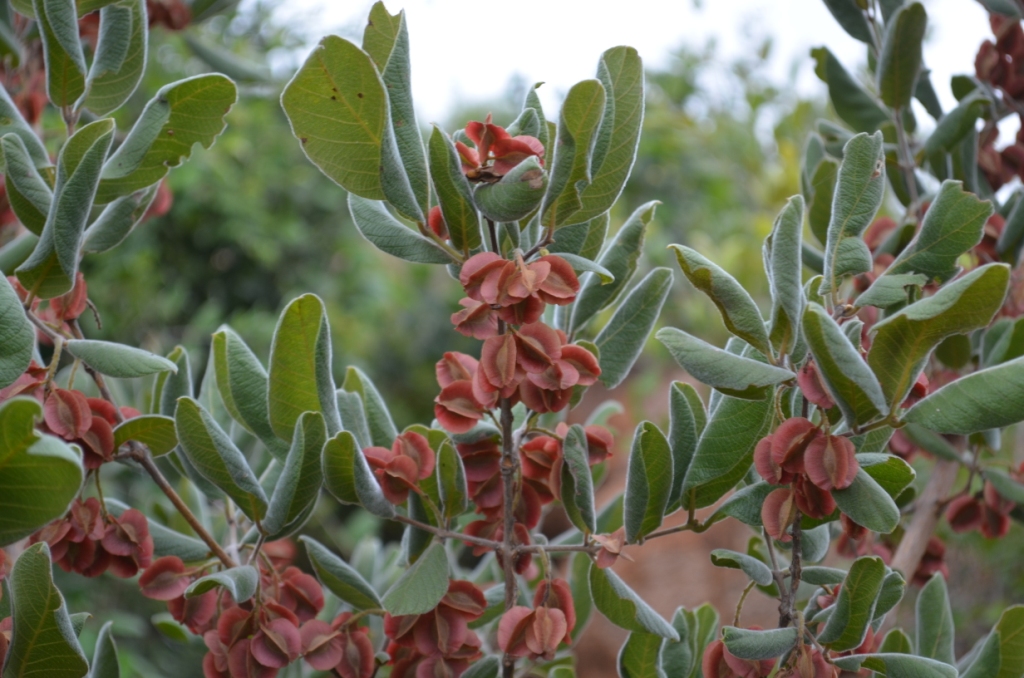
Combretum seeds
In the Fruit garden, the lemons are still ripening, the pomegranates are ready, cape gooseberries are following their own weird schedule and are fruiting non-stop. The peaches have all finished, and tomatoes are also almost done. The banana trees have shot up, and obviously loved the rains!

Banana 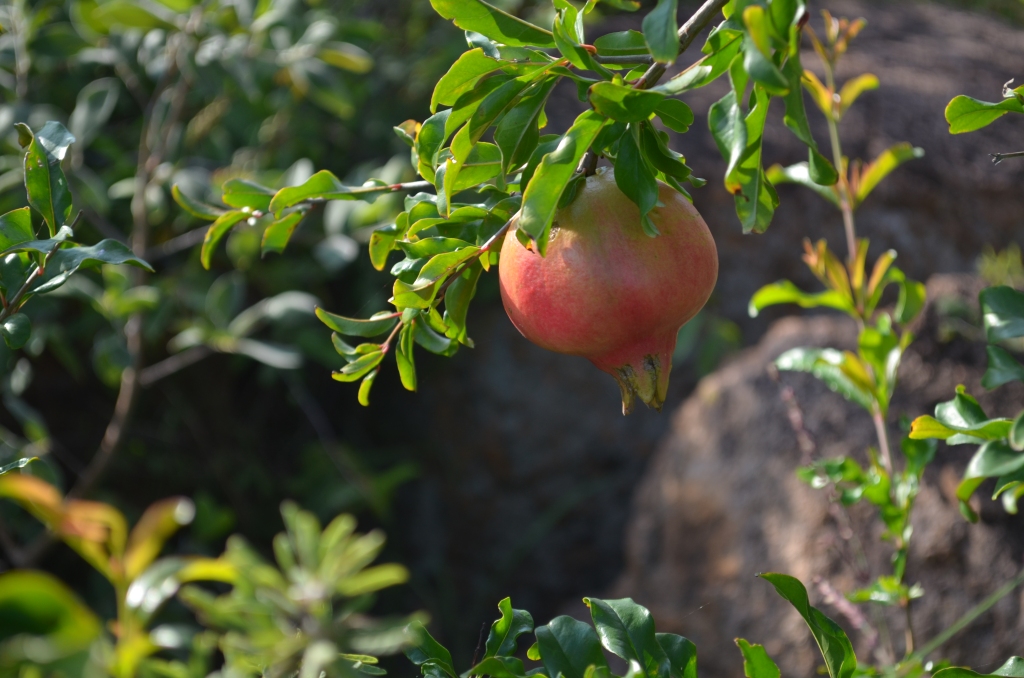
Pomegranate
In the Herb garden, the Tulsi is flowering, and I have an unknown that has the most pungent smelling leaves – like camphor. I’ve tried my best to find out what it is, but until it flowers I don’t think I’ll have much luck. It has single, peltate leaves, hairy and green when young, but they are now becoming reddish and smooth. It has a woody stem, so it could even be a tree, anyway if anyone has an idea, please do let me know.

Basil 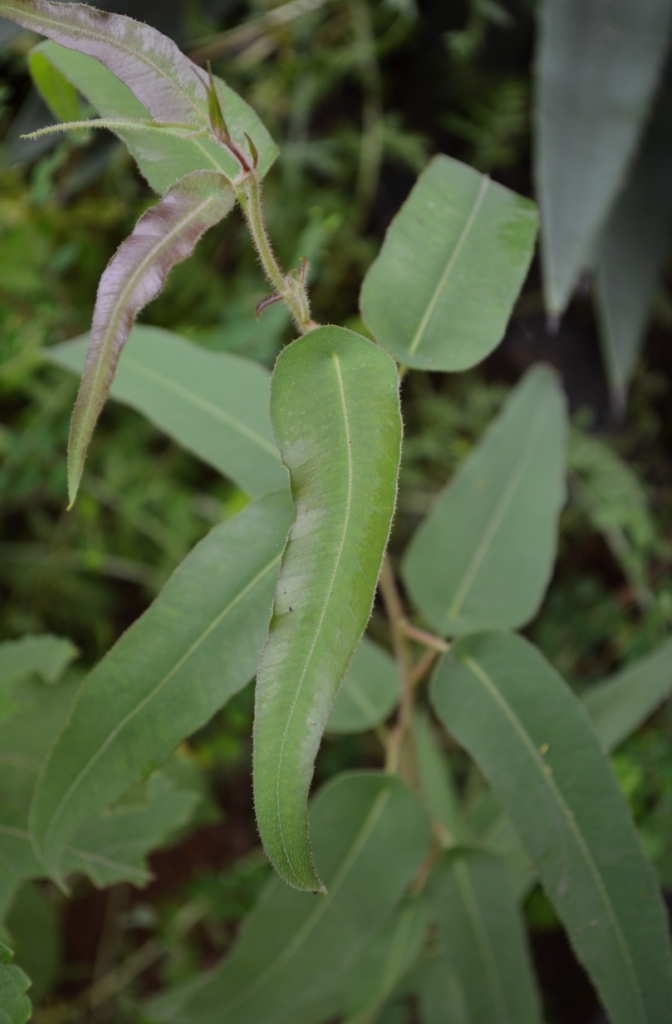
Unknown
In the Garden, everything is flourishing after the rains, the jasmines, cannas, salvias, roses, tecomarias all full of flowers. The potato shrub especially, and the spider lily (Hymenocallis littoralis) has done splendidly, and is full of flowers. However with the rains a horde of aphids have descended on weaker plants, and so the Verbena bonariensis is struggling, along with the Leonotis.
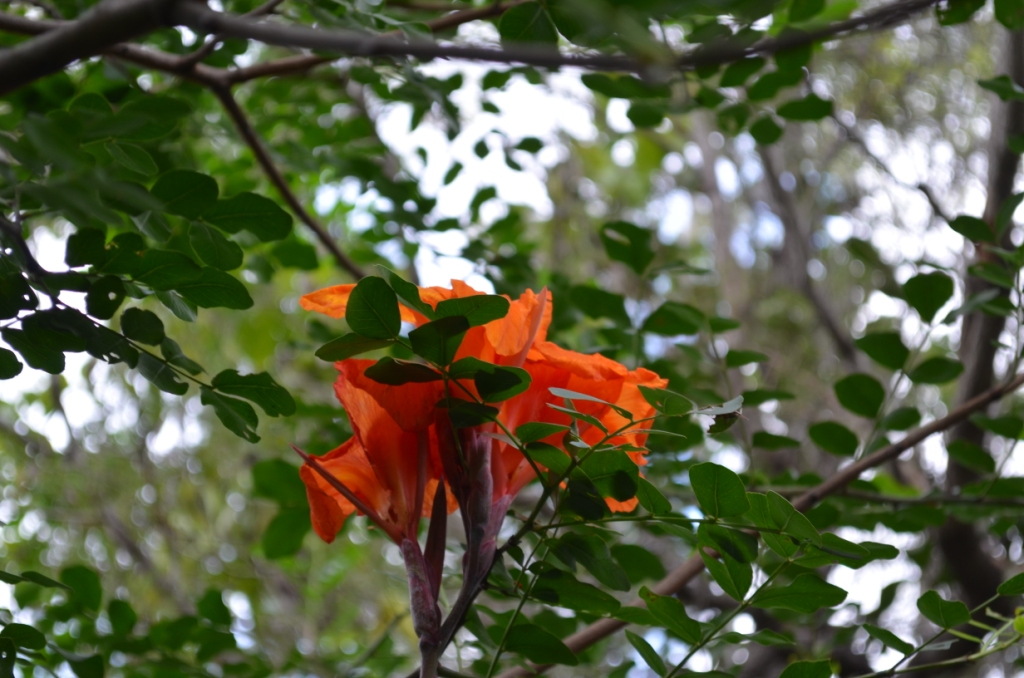
Canna amidst a Boer bean tree 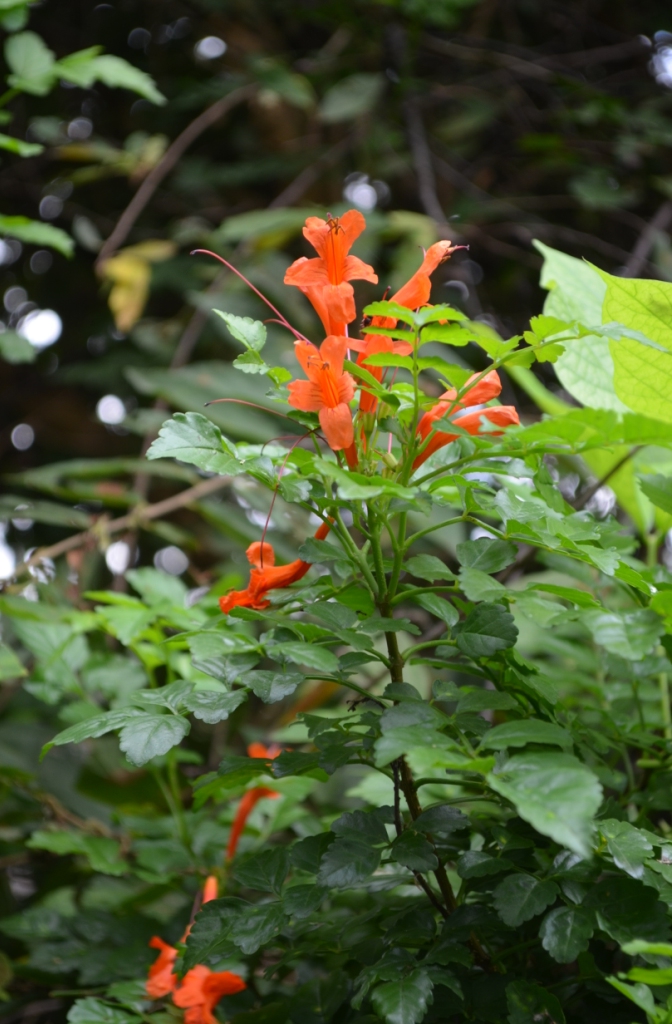
Cape honeysuckle 
Rose 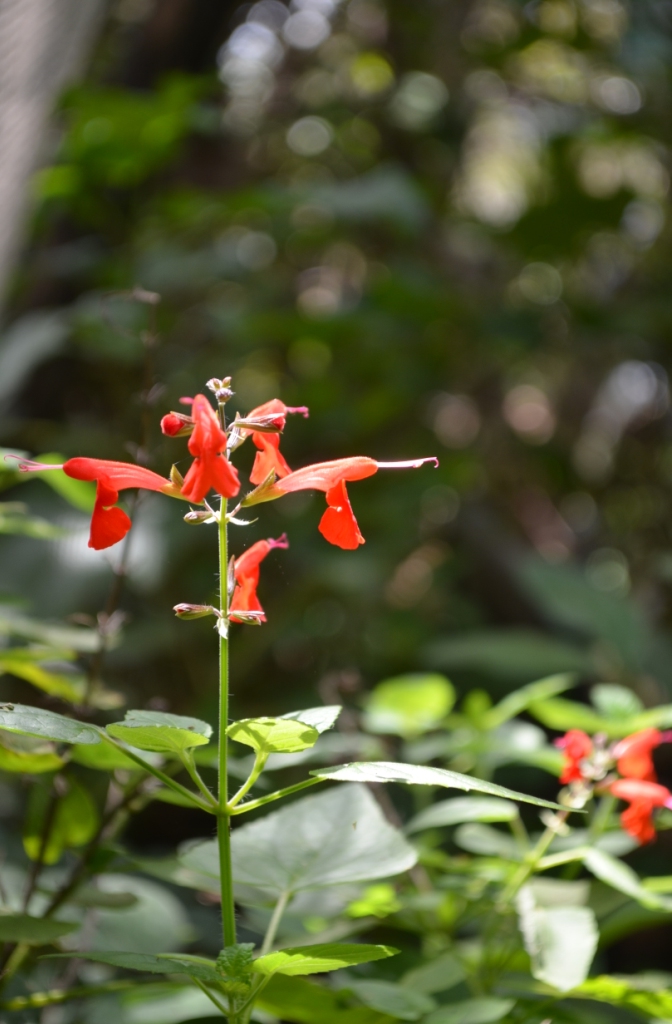
Salvia 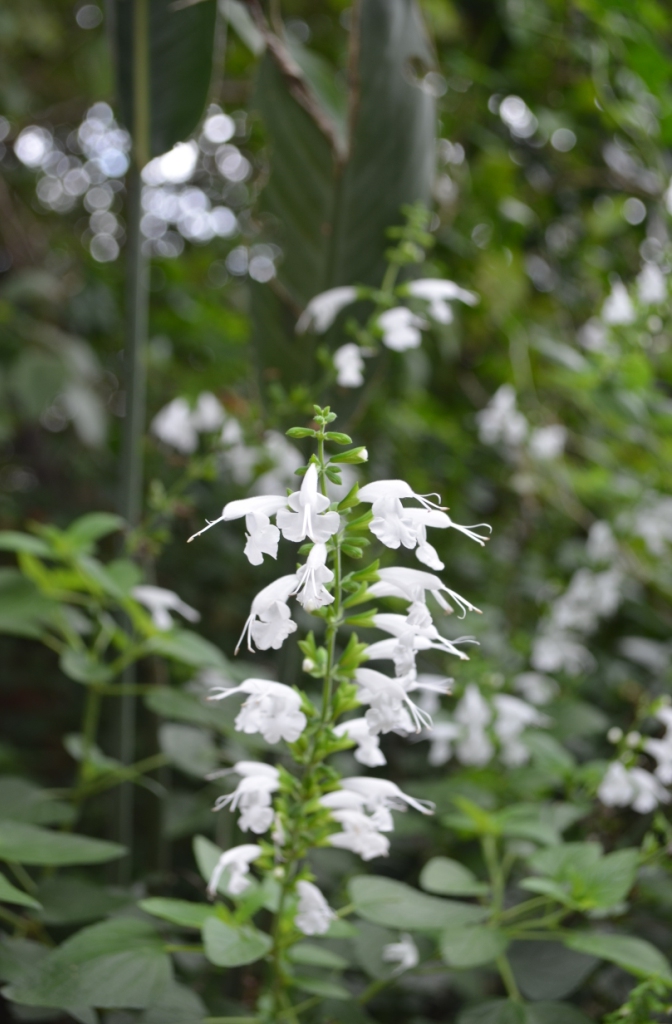
Salvia 
Potato bush 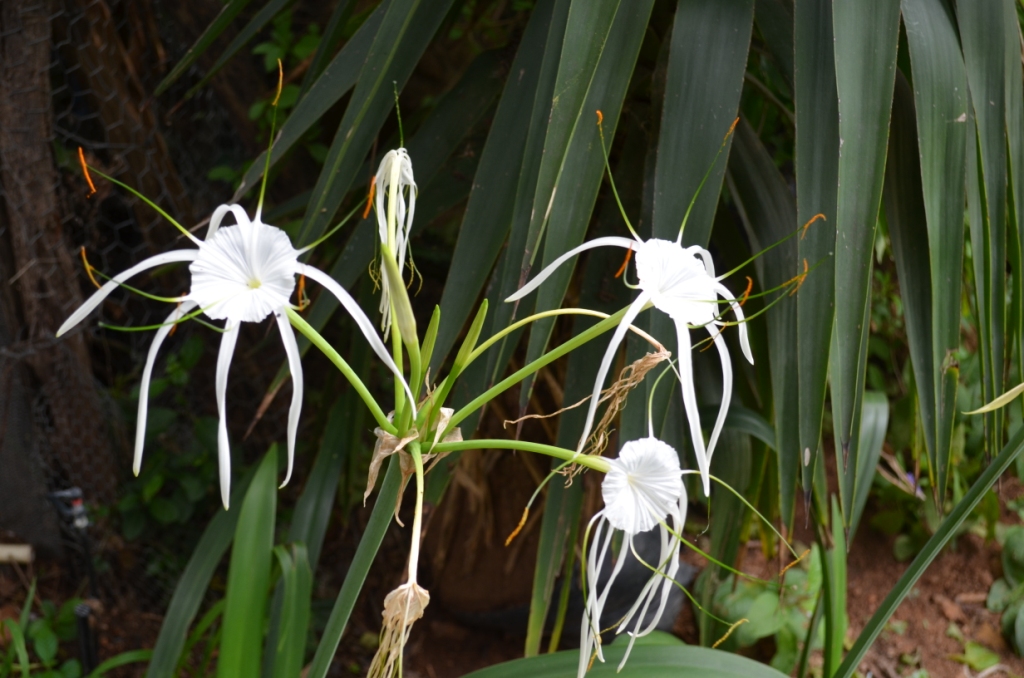
Hymenocallis littoralis
In the Aquatic garden, the Amazonian sword, Pontederia, Alisma and Water lilies are all flowering. Plus the Cyperus prolifer is also in full flower.
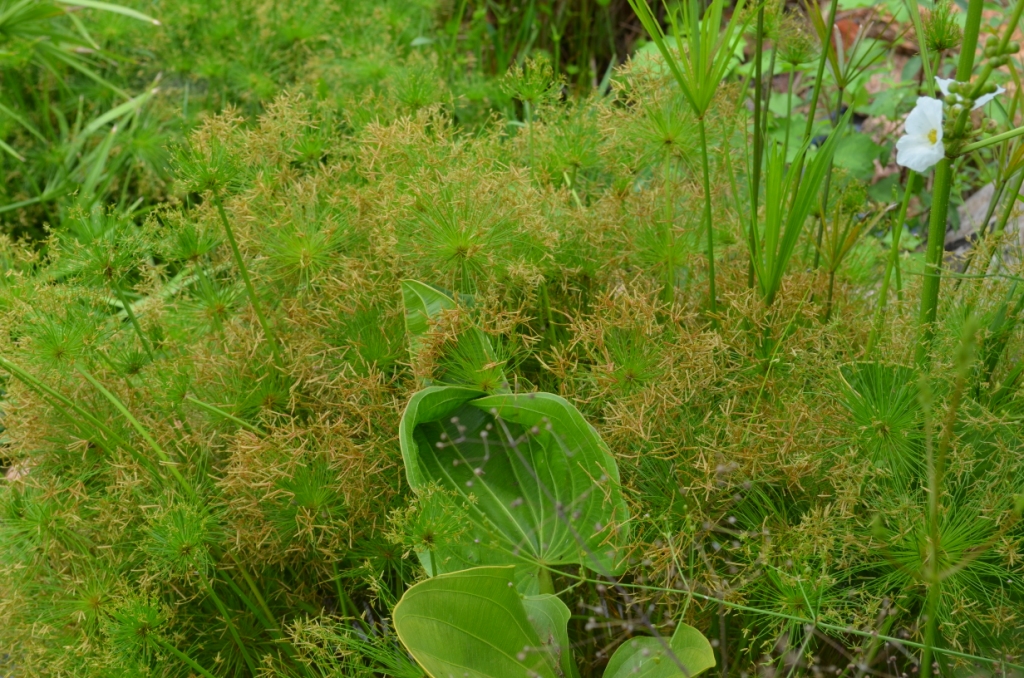
We have the most beautiful moths appearing around the house, and although they haven’t come in the numbers that occured last year, there are still so many different ones. The hornets have multiplied in droves this season, so hopefully a less painful stinger will take over in the next.
Every year one weed seems to dominate, and it always changes. Last year it was Triumfetta pentandra, and now this year it is Bidens pilosa. The great thing about this latest weed is that the chickens love it, so I’ve managed to weed it out and put it to good use.

Triumfetta pentandra 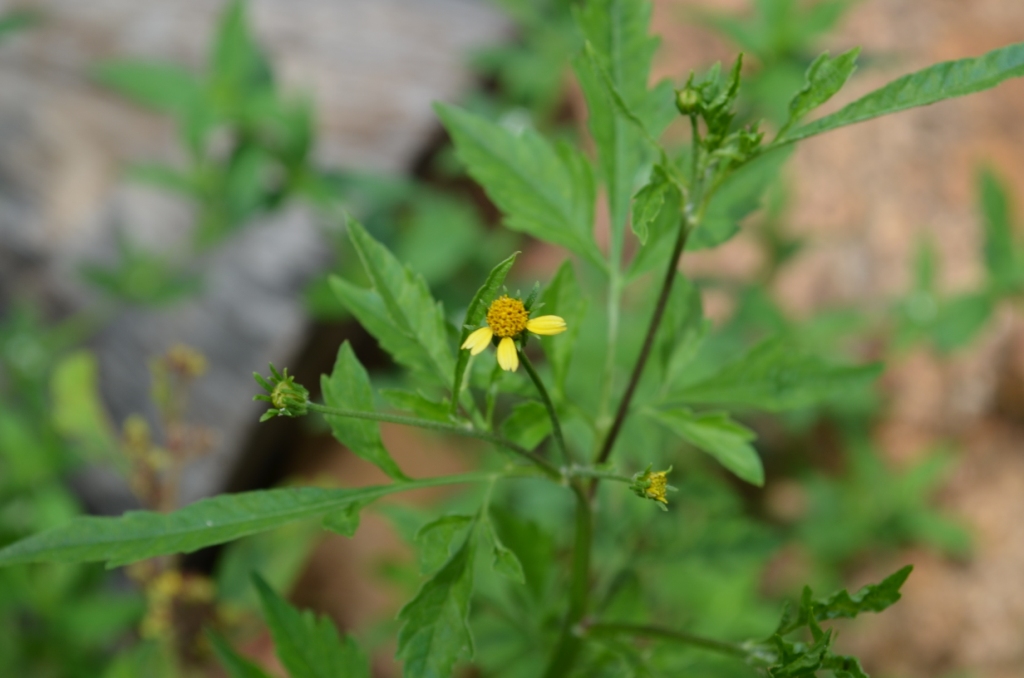
Bidens pilosa

January 2021
I think I’m cheating and choosing just the cloudy days to create these posts… but what an incredible rainy season we’re having in the Gaborone area! 70mm to bring in the new year and then another 18mm a couple of days ago; 2mm & 5mm. I’ve never really had to de-junglerize my garden before, but pathways are little more than guesswork now beneath the swathes of plants. Now to end this month off a further 23mm, 5mm, 25mm, 39mm. Amazing!
In the Indigenous garden, the Mmilos are still green, getting larger and juicier; the Grewias have yielded some ripe fruit but largely they’re green too. All the trees, including the wild gardenia, cassia abbreviata and kudu berry which normally struggle a little bit have sprung to life and are sending out new branches. I planted a few marama beans around the yard in the sandier spots to mimic the conditions of further north in the Kalahari where I got the seeds from, and they have sprouted and seem to be liking where I’ve put them for the moment. A few wild cucumber vines have been fruiting, plus a new type I haven’t seen before, which I think is Kedrostis foetidissima.

Kedrostis foetidissima fruit 
Kedrostis foetidissima flowering
Foxglove and hibiscuses are in full flower, their tall stems surrounded by a sea of flowering grasses, which is really unusual for January.

Hibiscus engleri 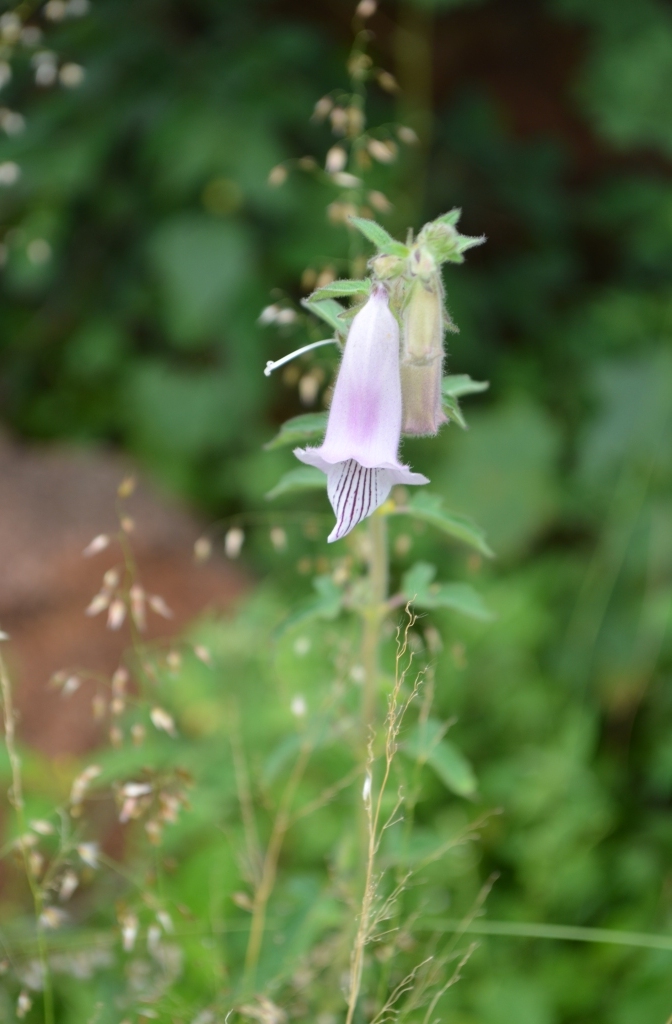
Ceratotheca triloba 
Hermbstaedtia fleckii 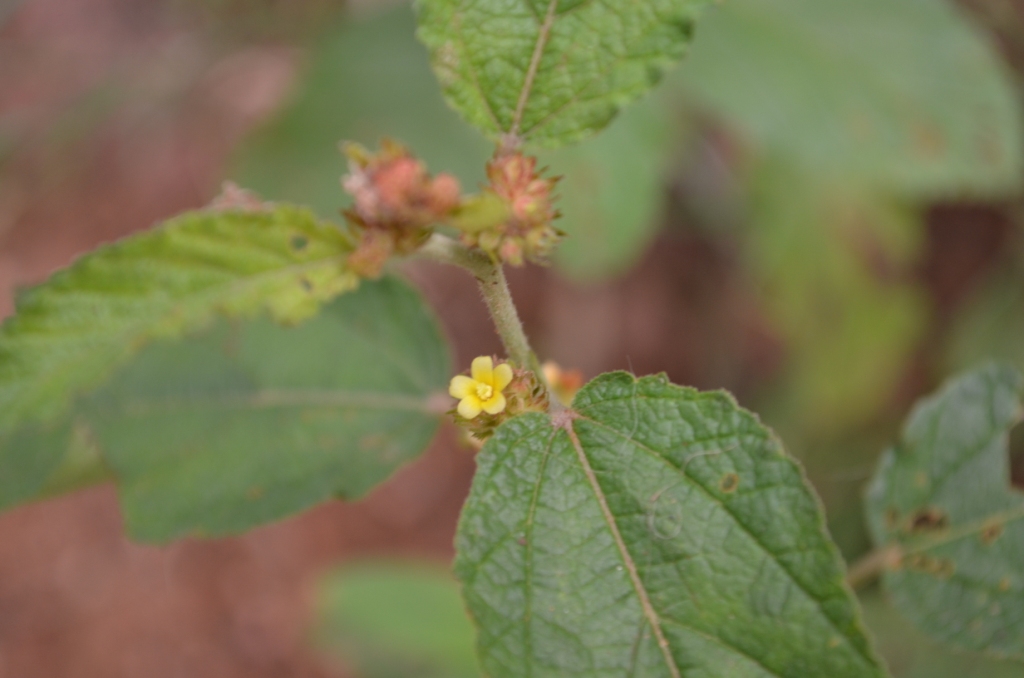
Waltheria indica 
Justicia betonica 
Acrotome inflata
In the Fruit garden, the peaches are almost ripe, and the Elder is fruiting for the first time. I’d never tried the fruit before, but it tastes very similar to the garden huckleberry. Pomegranates are ripening, lemons too, and the Buddha’s hand is still flowering off and on.
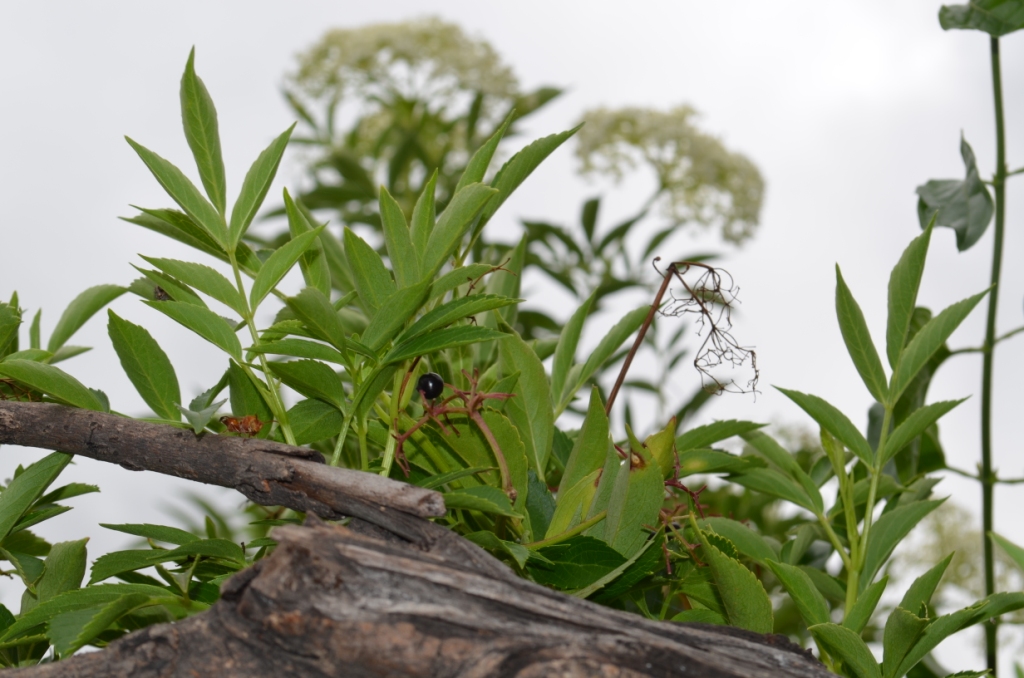
Elder fruiting

Peach 
Pomegranate
In the Herb garden, this rainy weather is good for most of the herbs, but rosemary, thyme and sage appear not to be doing so well, whereas catmint, fennel and gotu kola are exploding with growth.
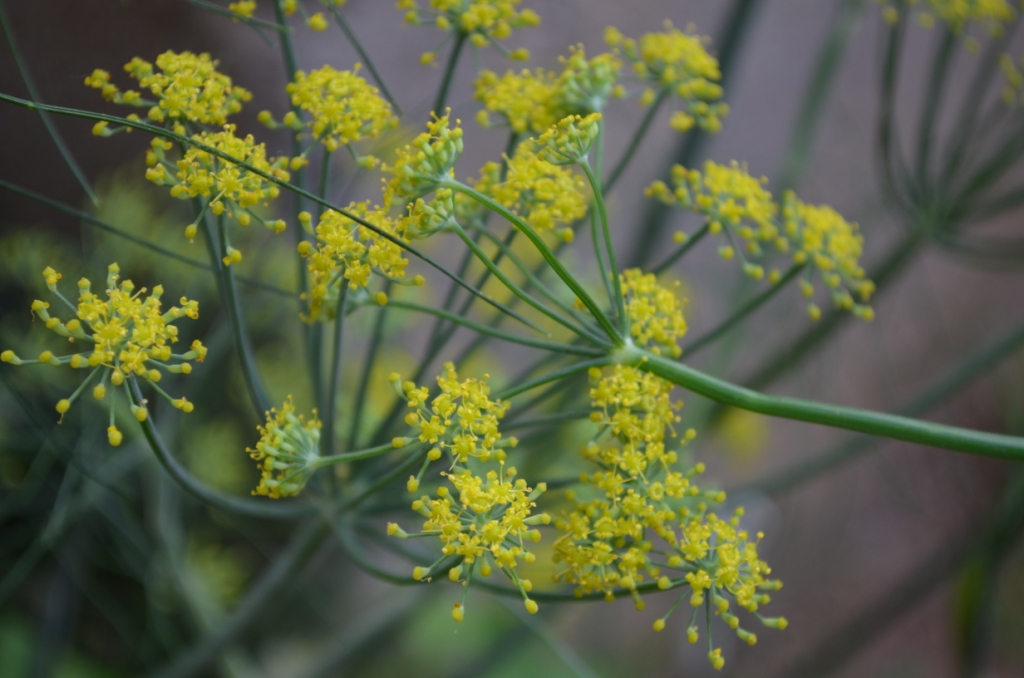
Fennel
In the Vegetable garden, I have grown peanuts from seed from the first time, and now they’re flowering. Absolutely beautiful. Being nervous on how they’d do, I started them in a pot instead of in a mound of soil in the ground, and so they probably won’t yield lots of peanuts, but I got to see it grow which was lovely.
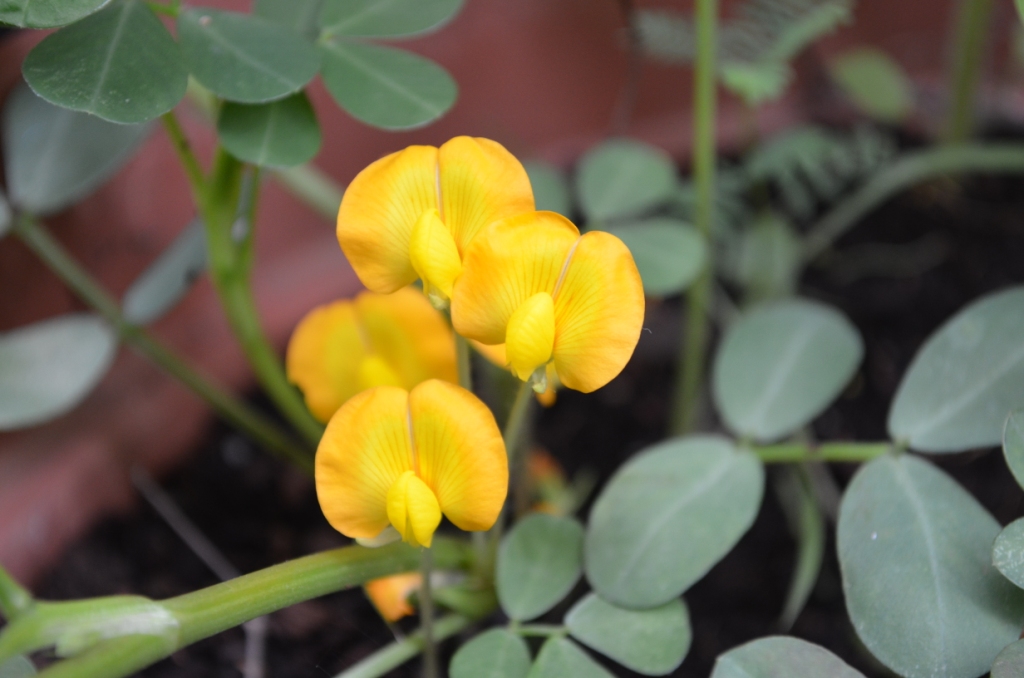
Peanuts flowering
In the Garden, a new plant that I’ve grown from seed has just started to flower and wow was I disappointed. Verbena bonariensis looks glorious in UK gardens, but the one in my garden looks like a weed. However with the increased shade from all the rains it’s probably in the wrong position, so I will persevere. A couple of the dahlias did really well, but a few got spider mite too. All the begonias are still flowering, a small orchid from Spar is still flowering, the Petunias from Builders warehouse were too irresistably beautiful and are still flowering, and the roses are bursting into bloom at odd intervals. I also got a carnivorous Saracenia plant from Spar, which I’ve never grown before, so will see how that does too.

Dahlia 
Dahlia 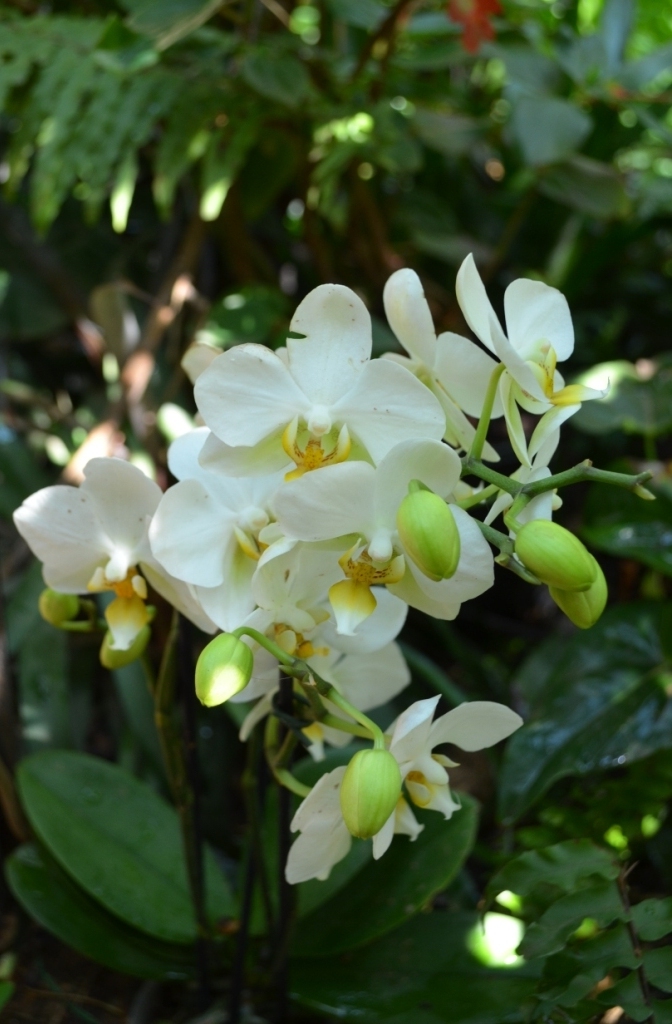
Orchid 
Petunias 
Saracenia 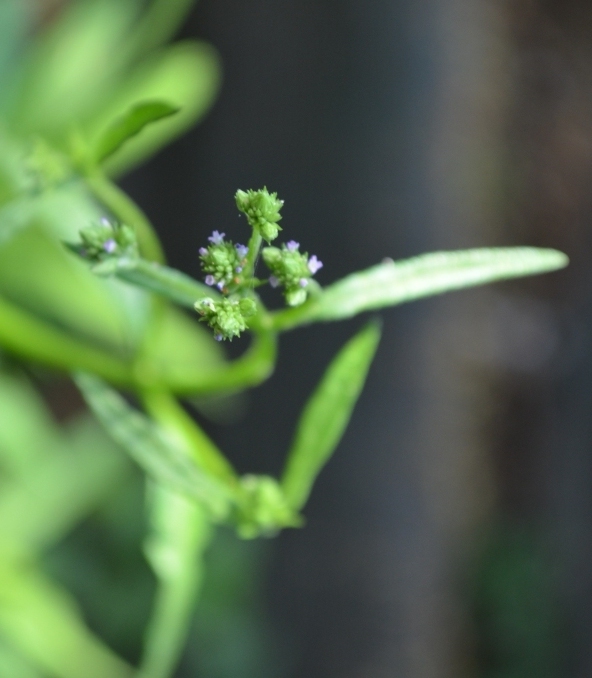
Verbena bonariensis
For a green manure, I managed to grow some sunhemp, which has normally bolted or died in our usual super hot conditions, but in this rainy weather it is doing really well.

Sunhemp
July 2020
The winds have started early this year, and July is blowing up clouds of leaves. I’ve had a few plants suffering from frost this year – Dieffenbachia, Ctenanthe, and Philodendron. The obvious ones like Banana and Papaya have shown just a bit of yellowing.
In the indigenous garden the Aloes are really coming into their own.. with Aloe cryptopoda now in flower, plus a few spotted aloes like Aloe parvibracteata, and Aloe greenii. Aloe globuligemma and Aloe chabaudii are just about to flower, and the Hybrids that I have are now in full bloom. Wild flowers like Vernonia and Hibiscus engleri are still stubbornly putting out their last few blooms too, keeping the bees happy.
In the garden, I managed to find a few narcissus bulbs from Builders Warehouse who have a small selection of plants for sale again. And I’ve added a Phalaeonopsis orchid to my jungle garden, plus a staghorn fern from Sanitas. It is looking so colourful for winter.

Rosemary 
Pipiche
In the herb garden, the rosemary and lavender are flowering, and rocket leaves are turning a dark red with the cold, I have managed to finally grow some Pipiche from Mexico, and it is flowering too at the moment. The fennel is loving the cooler weather as is the watercress.
December 2019
18 Dec – 31 Dec: While I was away we had 46mm: Foxgloves are flowering, Grasses are now at least a metre high, and everything in the yard seems to have enjoyed the hot sunny days. Unfortunately there were a couple of casualities, the Goji berry – but a small one has still held on, a loved italian oregano, the summer savoury, and a few of the tomatoes. All the pomegranates have ripened, while the Mmilo fruits are still green there are lots of them, and the silver caneberry has sprung up a few more strong canes. The Azanza garckeana is flowering, albeit covered in mealybugs.
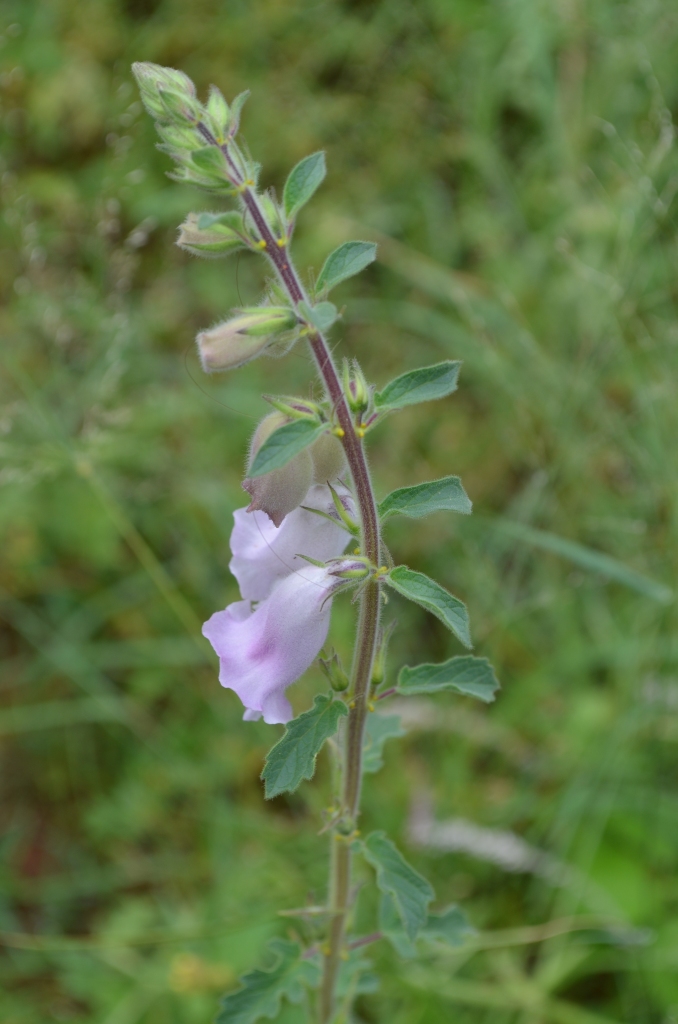
Foxglove 
Wild hibiscus 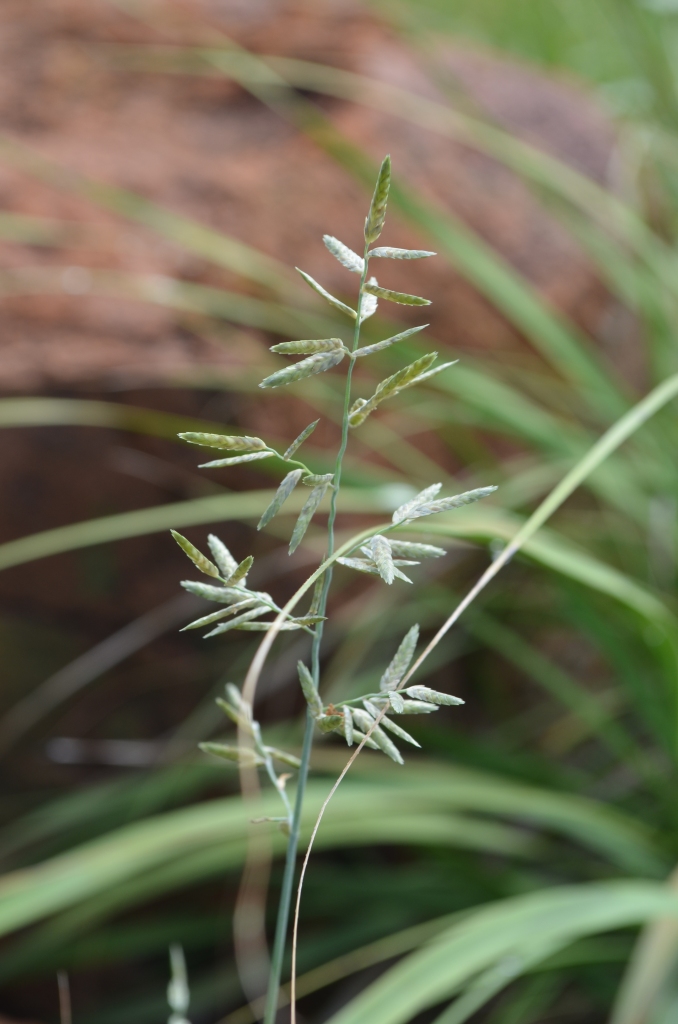
Eragrostis racemosa 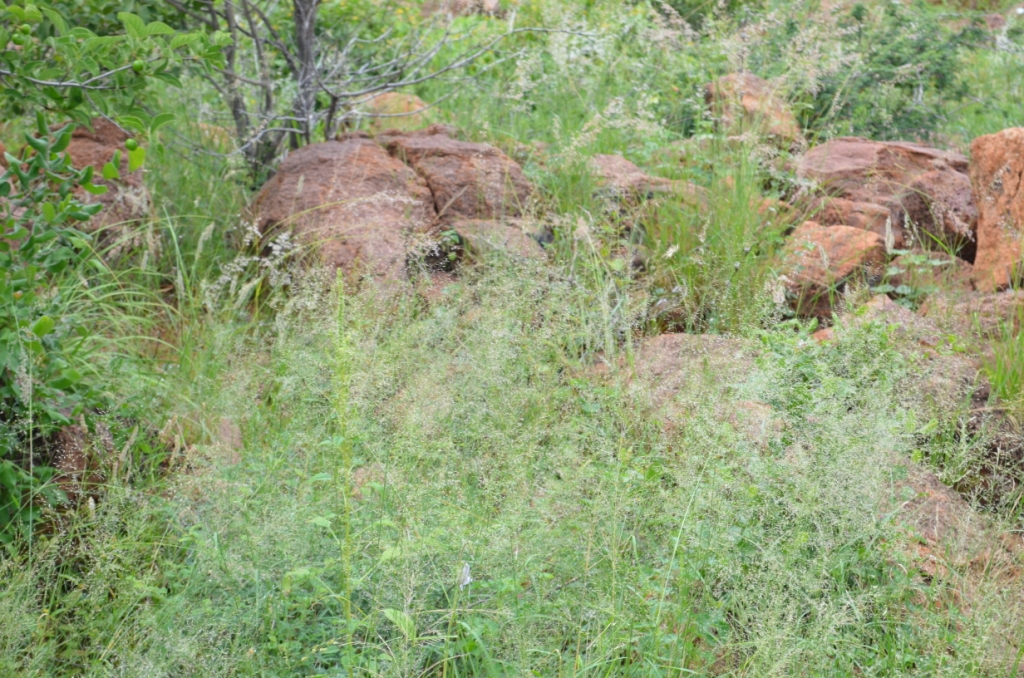
Jungly indigenous garden
16 Dec: Sunny days again, and the days are hot and much more humid than usual.
In the vegetable garden: the Jerusalem artichoke is almost about to flower, the chilis are flowering and fruiting, new rocket seedlings are appearing everywhere, and the potatoes need more mounding up. The Arugula is still doing really well, and as I will probably be away when the Jerusalem artichokes start to flower, I have put a picture below from a previous year to cheer up our Christmas!

Arugula 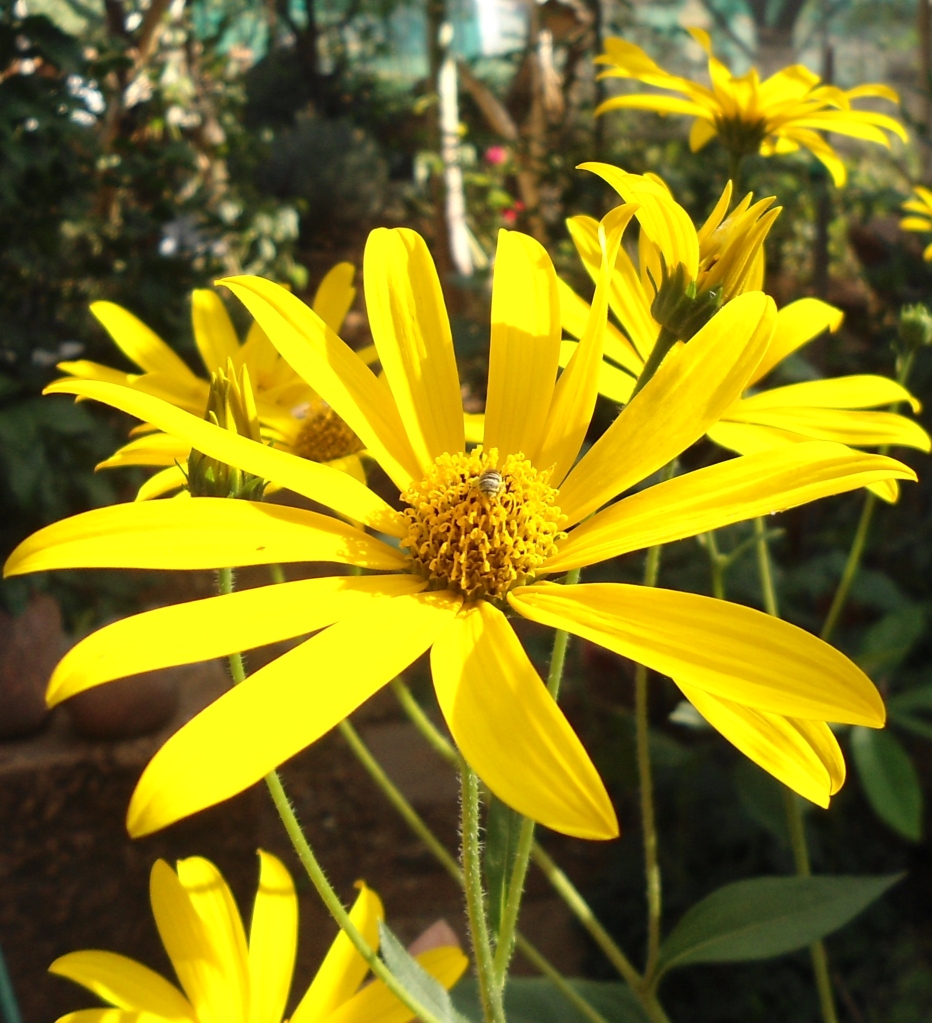
Jerusalem artichoke
In the herb garden: the Ashwagandha leaves are speckling, which makes me think red spider mite, so will have to keep misting it when I can. The parsleys are all doing well, flat and curly. The sage has died, but I think next time, I’m putting it in a pot, as it was probably the soil fungus that got it (Phytophthora). The oregano, lavender, rosemary are still doing really well, and the gotu kola’s leaves are a little yellow-green, which is either under or over feeding, and as its by my goat manure path leading through the garden, I think its probably burn from the manure. The spearmint has done much better after the rain and high temperatures than the peppermint – which had gone a bit too rogue, so I’m happy the temperatures have curbed its spread. The Mexican Chia is about to flower, I’m just hoping it will rain while I’m away.
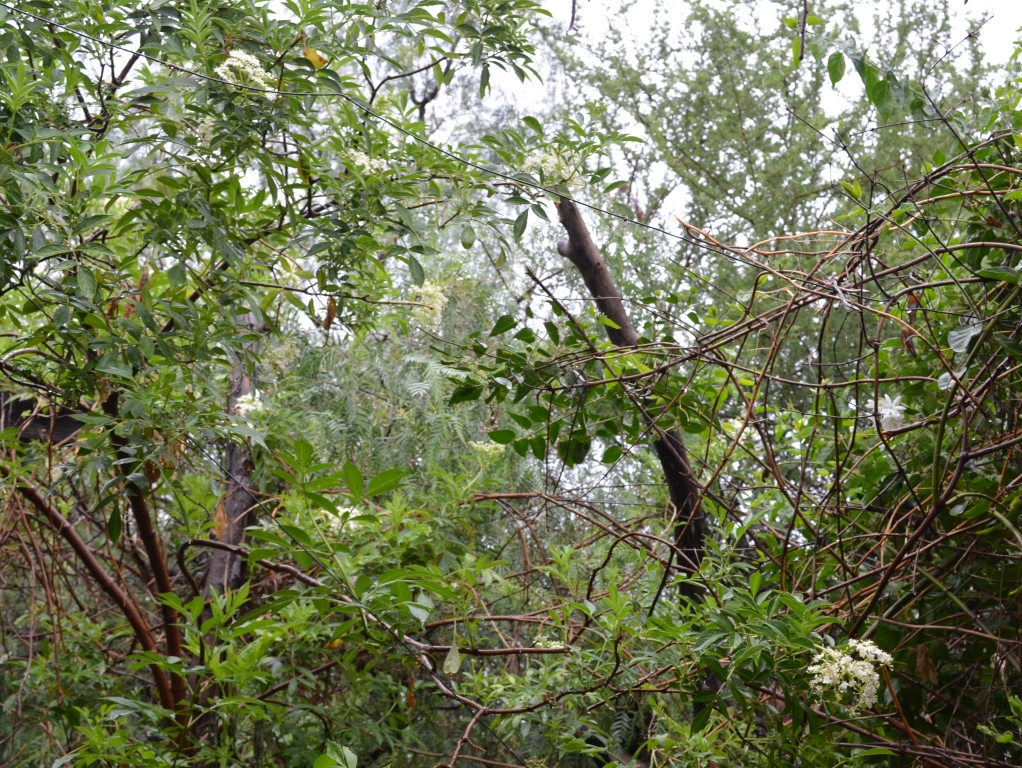
Elder and Arabian Jasmine compete for space
In the fruit garden: the huckleberries are still fruiting despite the mealybug, and the cape gooseberries have not been overwhelmed by the mealybug like previous years, and are putting a lot of fruit. The silver caneberries are springing back after the rains, as they love lots of water. The goji berry didn’t like me putting it in a dish of water, and has been battling with mealybugs too. However when I go away, I will have to put it back in its dish of water. Will see how tough it is. The tomatillos are really flowering prolifically at the moment, but fruits are still tiny. The tree tomato is about a foot high now. The two peaches left on the tree are just changing from their green colour to a more blushy yellow orange.
In the indigenous garden: All the usual suspects are flowering, and to add to the list are: Holubia saccata; an unidentified basil type plant; tiny ledebourias that are yet to be identified; another mollugo type plant; have a look at the deluge of photos below. The bride’s bush – Pavetta zeyheri is about to flower, the shepherd’s trees are all shooting up, there is a fully grown Boscia foetida that is sheltering one of the bee hives, but only about a metre high Boscia albitruncas. In a previous post I also put in a grass I believed to be Schmidtia and now the seed is fully developed I think it is Schmidtia pappophoroides.
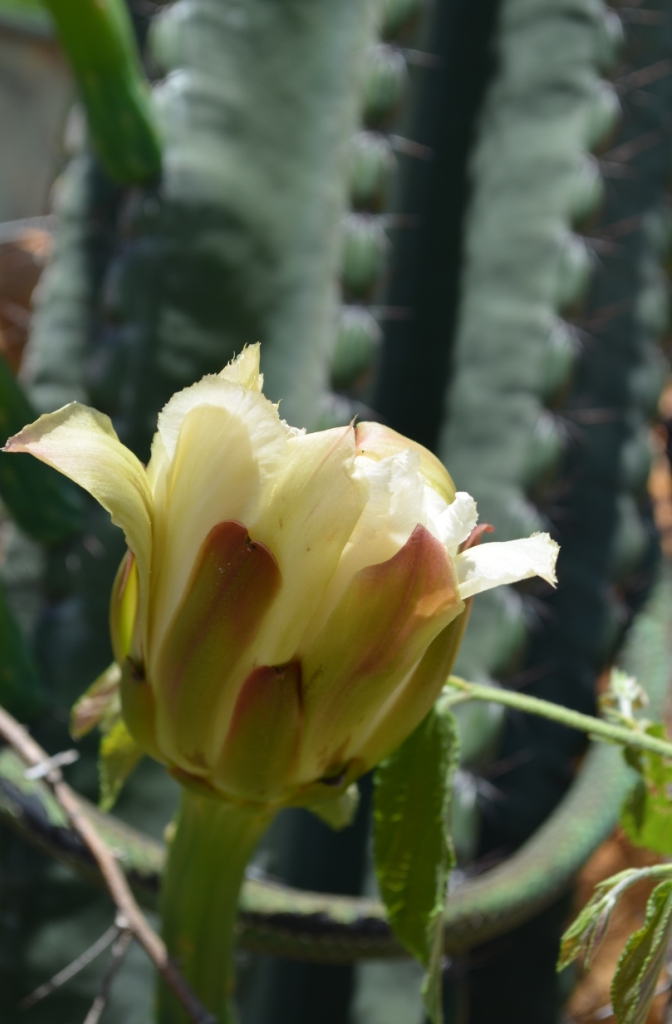
Cereus jamacaru – by the gate, fruits like a dragon fruit 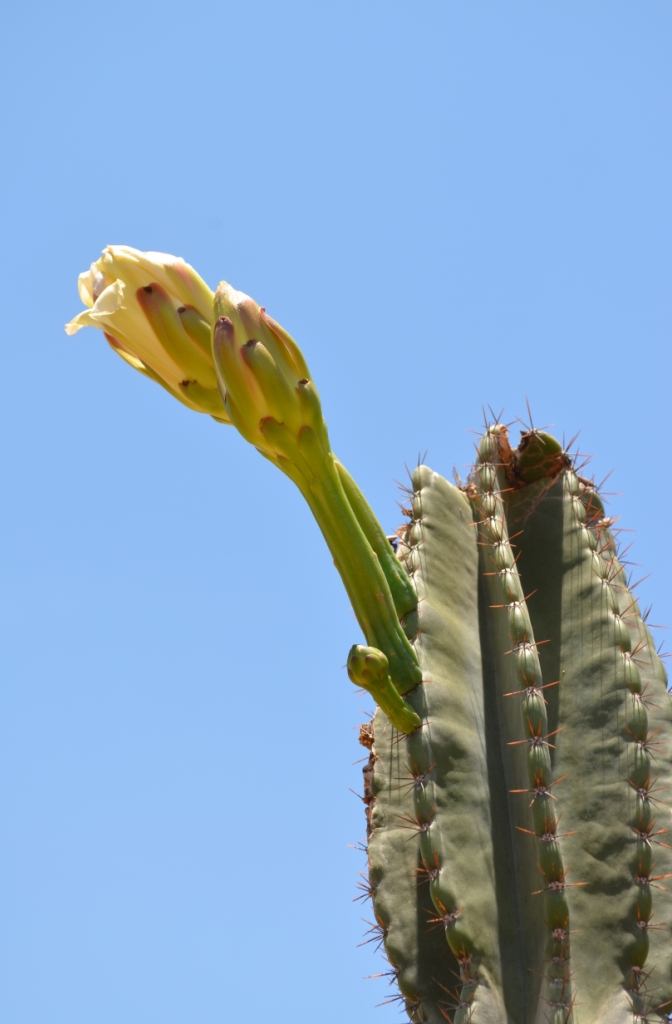
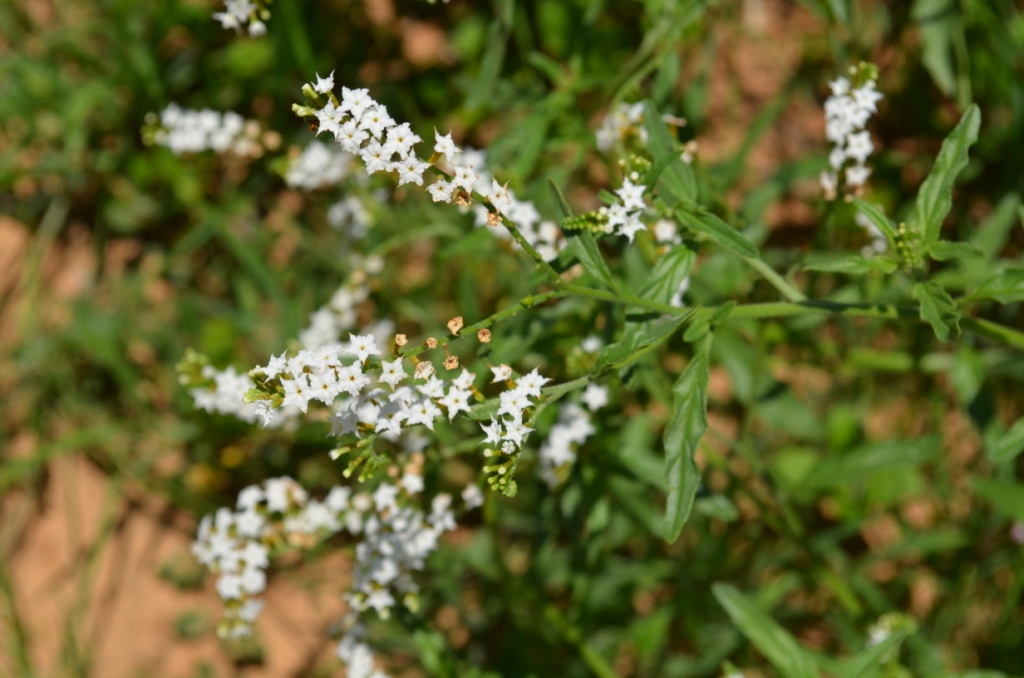
Heliotropium also by the gate 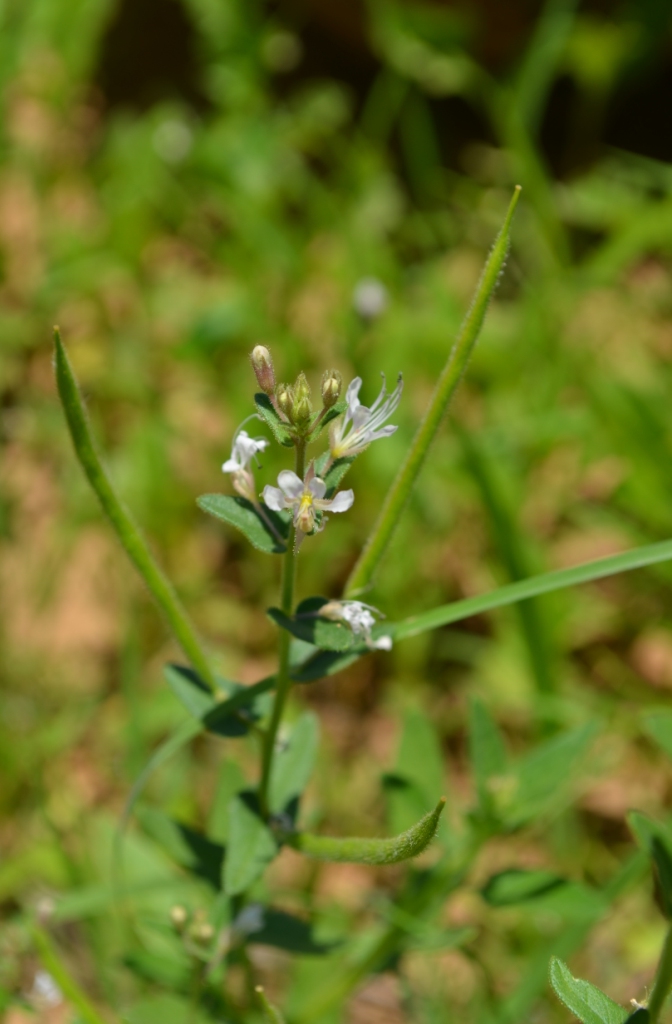
Cleome monophylla 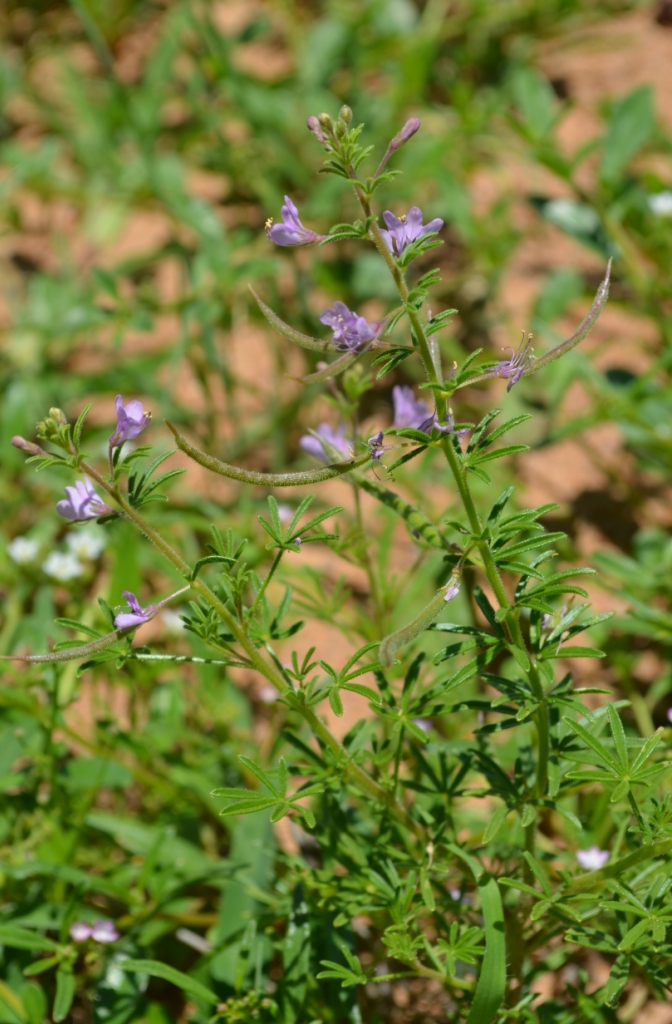
Cleome rubella
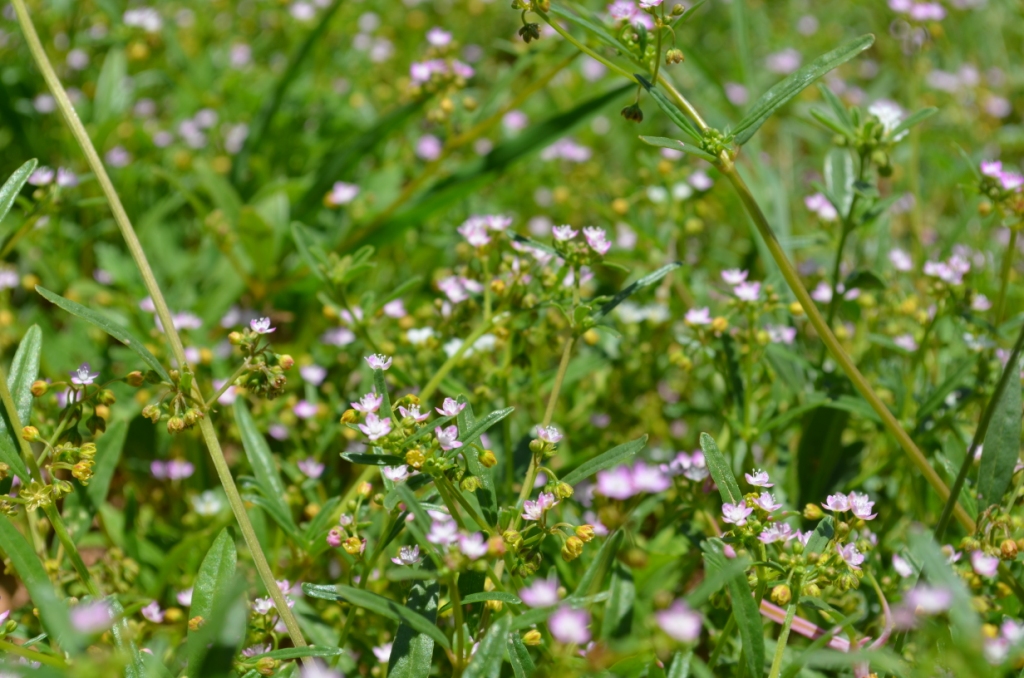
Gisekia en masse 
Weird pink abnormalities in gisekia’s foliage – a virus or bacteria, and gorgeous
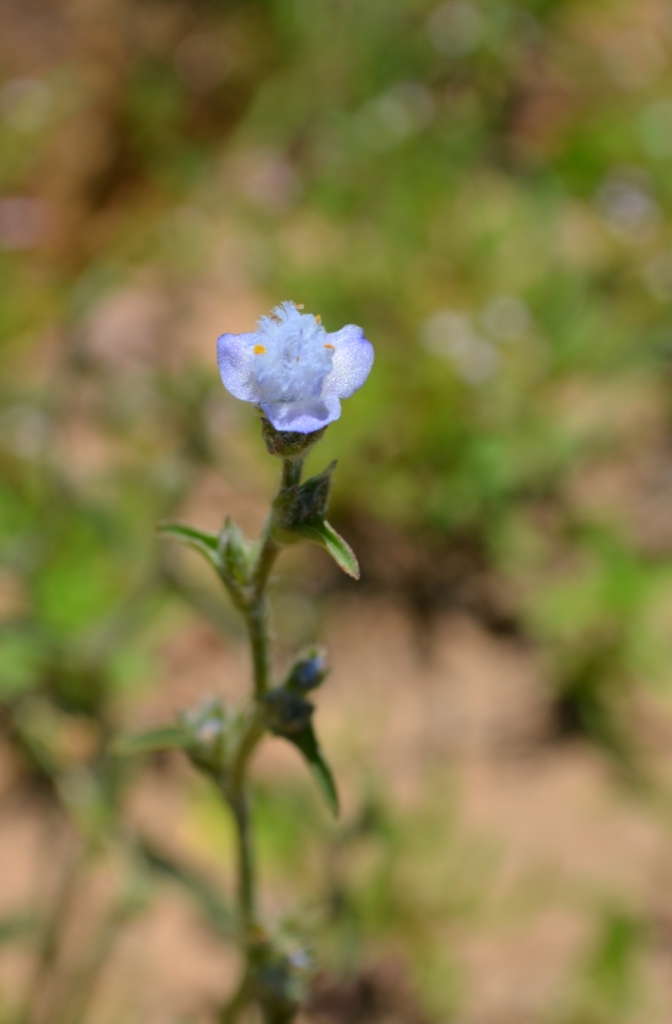
Cyanotis speciosa time.. 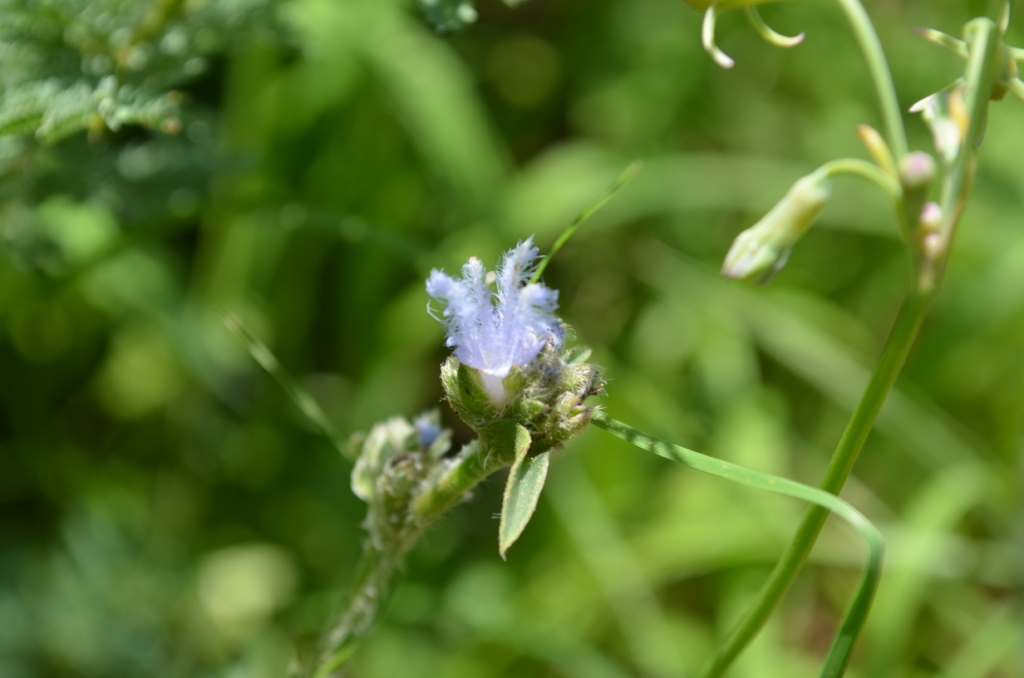
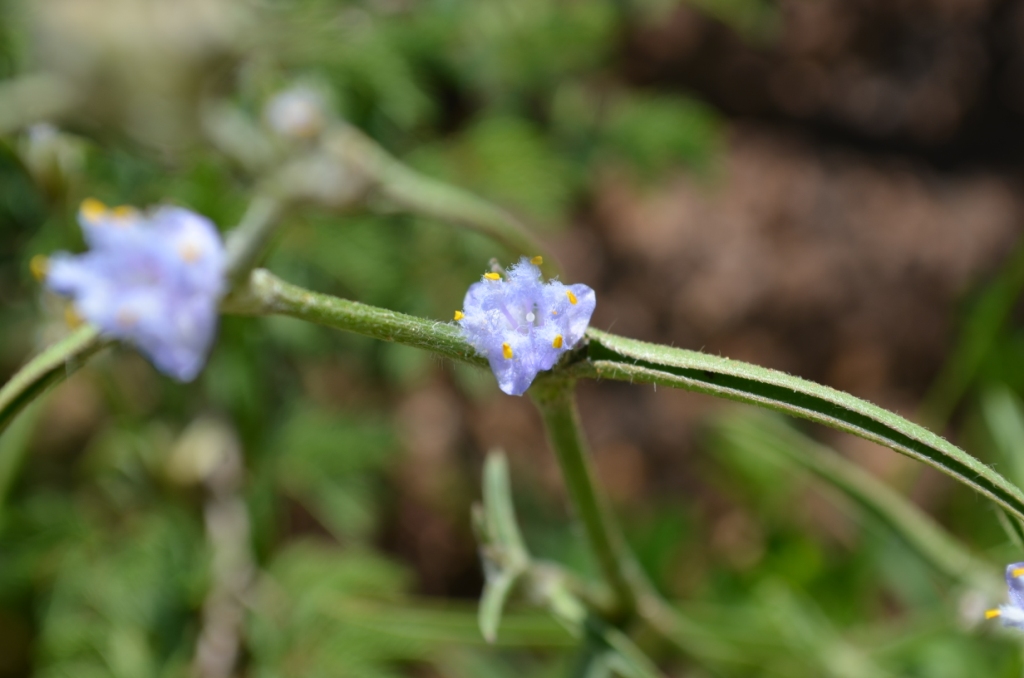
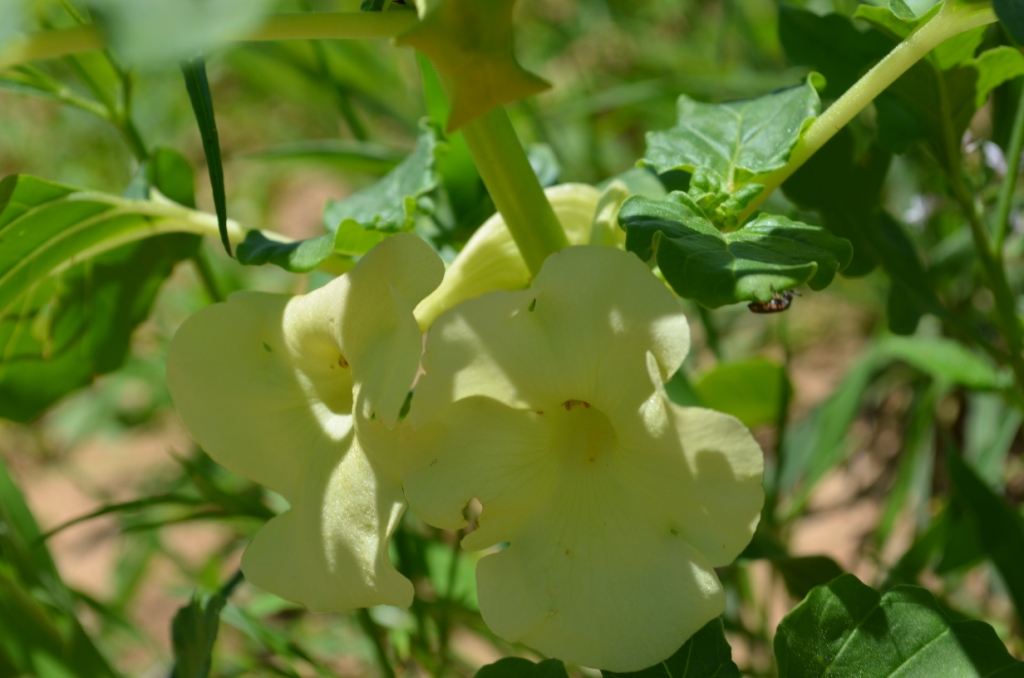
Holubia saccata
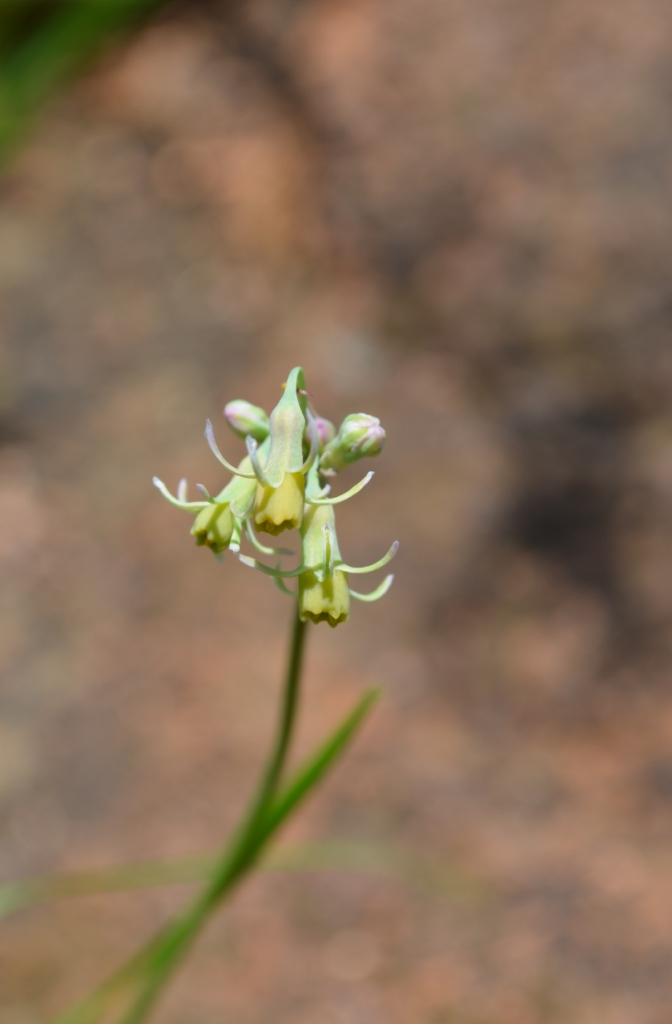
Tulbaghia leucantha 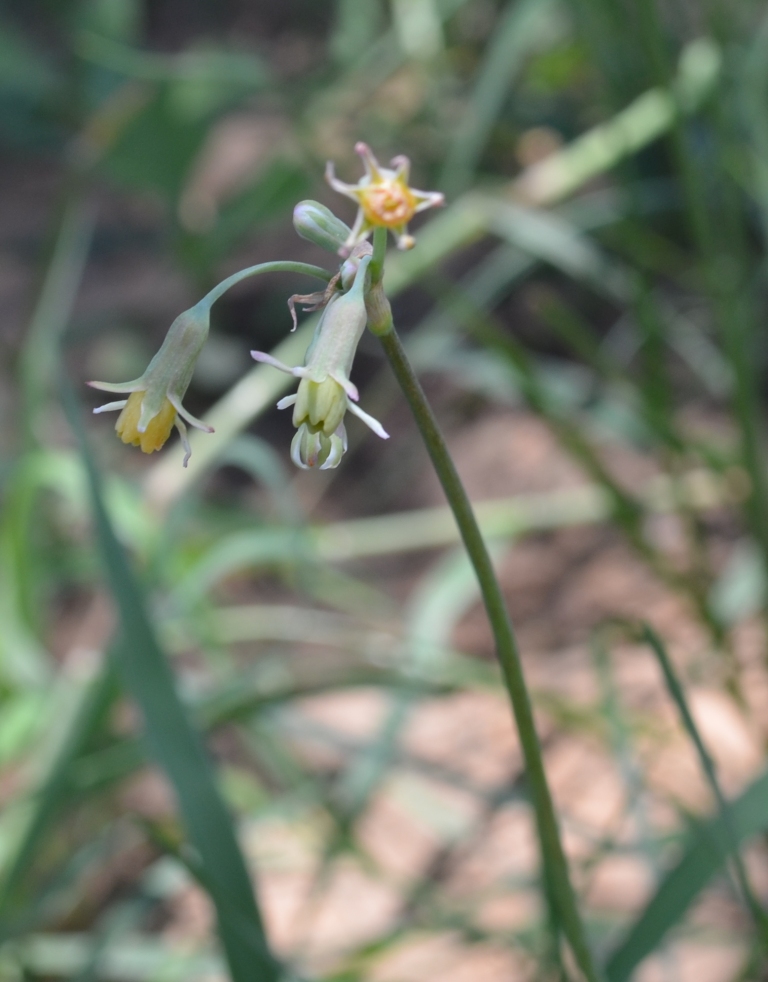
Tulbaghia acutiloba
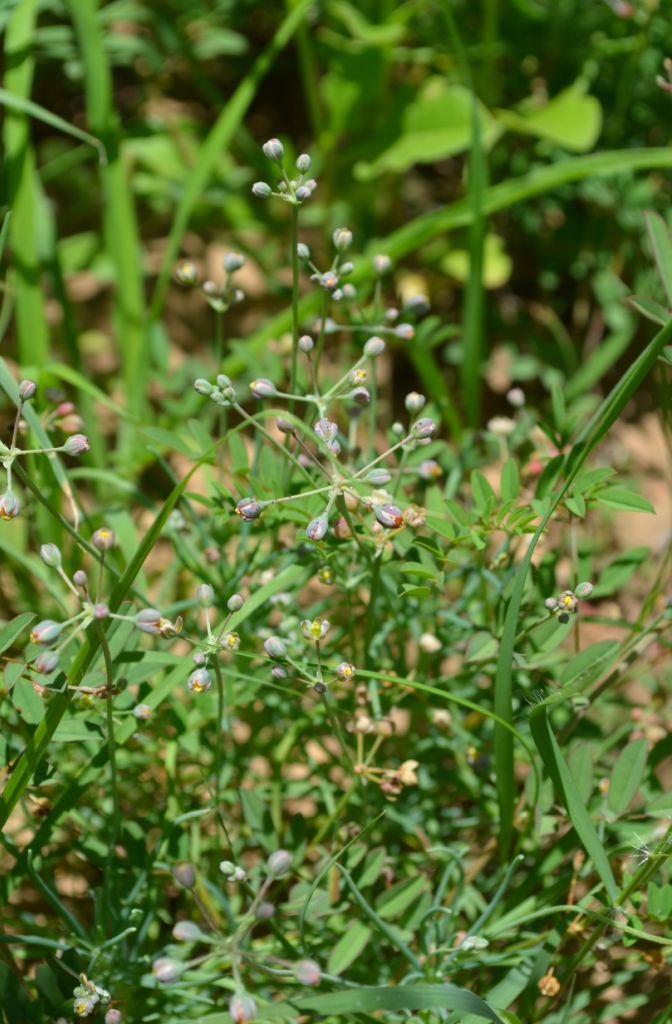
Mollugo cerviana 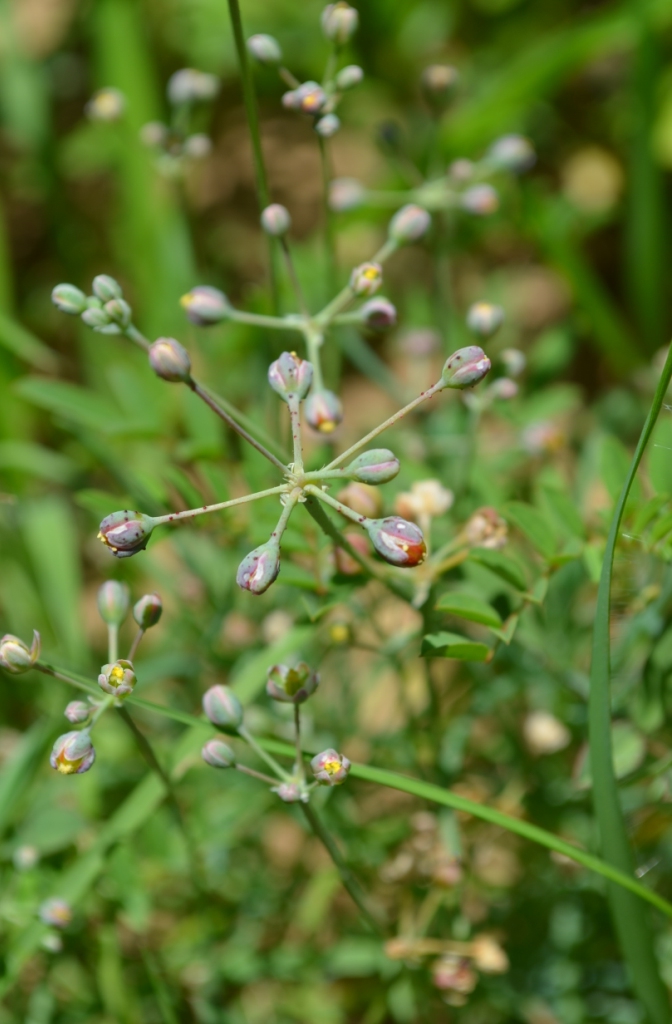
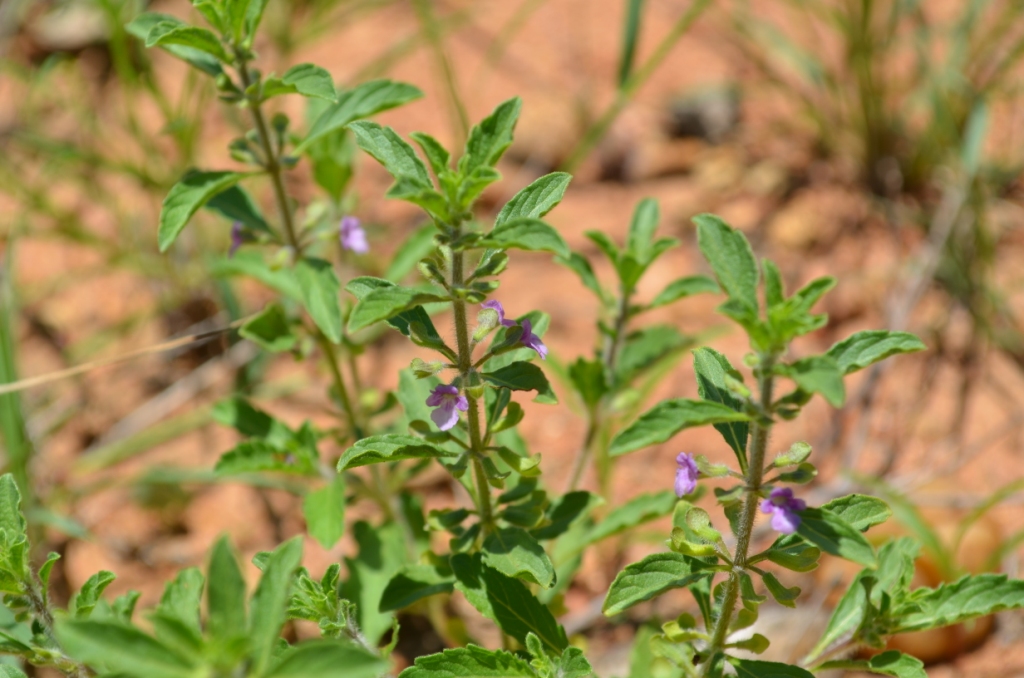
Unknown basil type 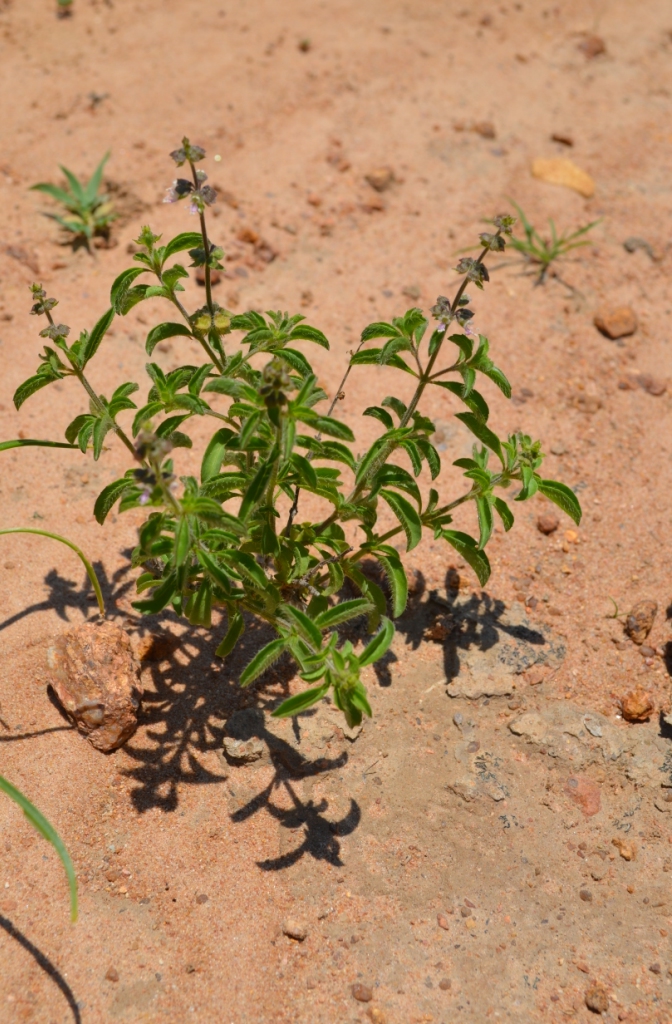
With seeds 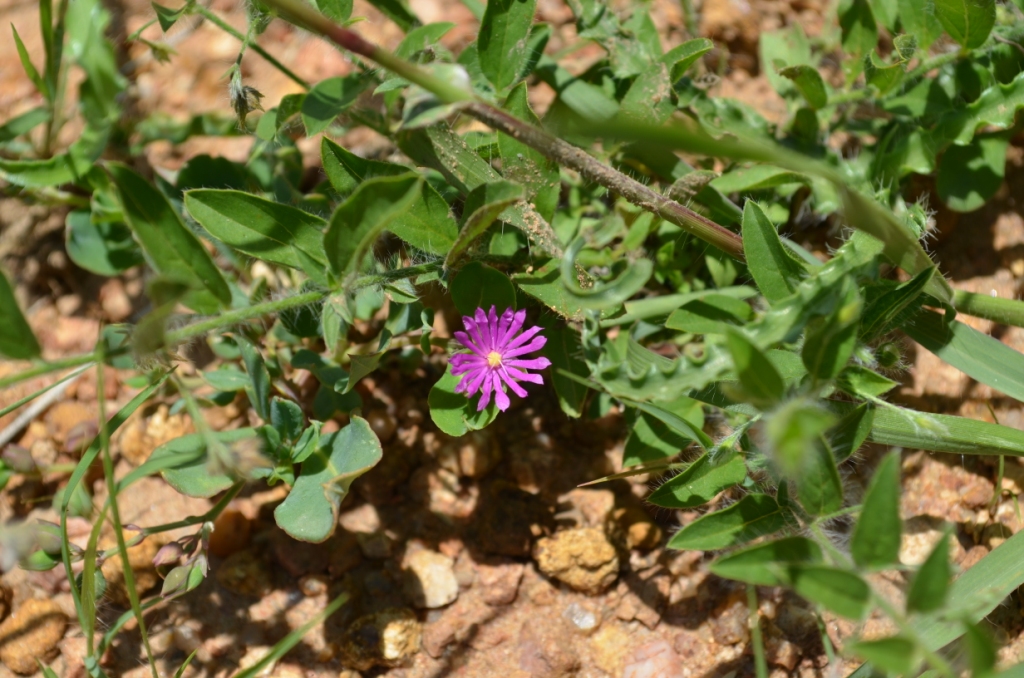
Corbichonia decumbens 
Crinum macowanii
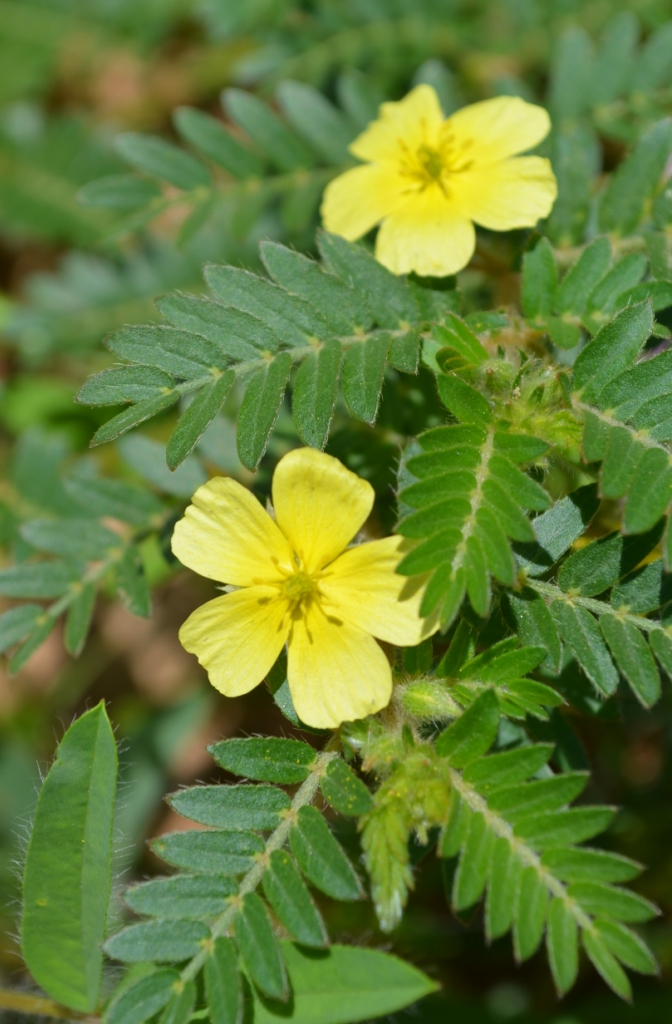
Tribulus terrestris 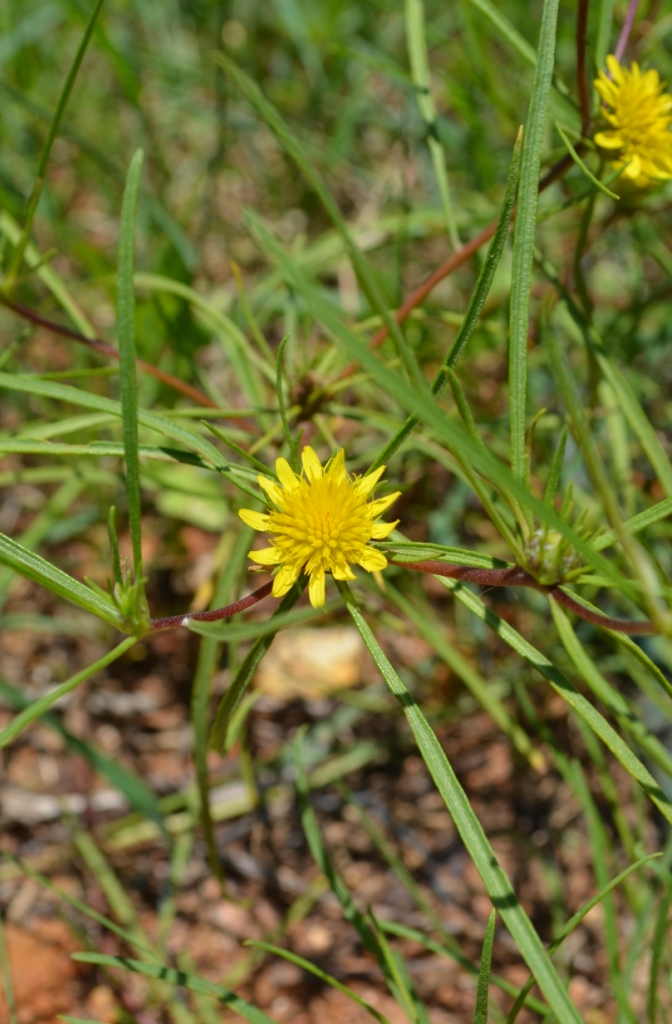
Geigeria burkei 
Erianthemum ngamicum
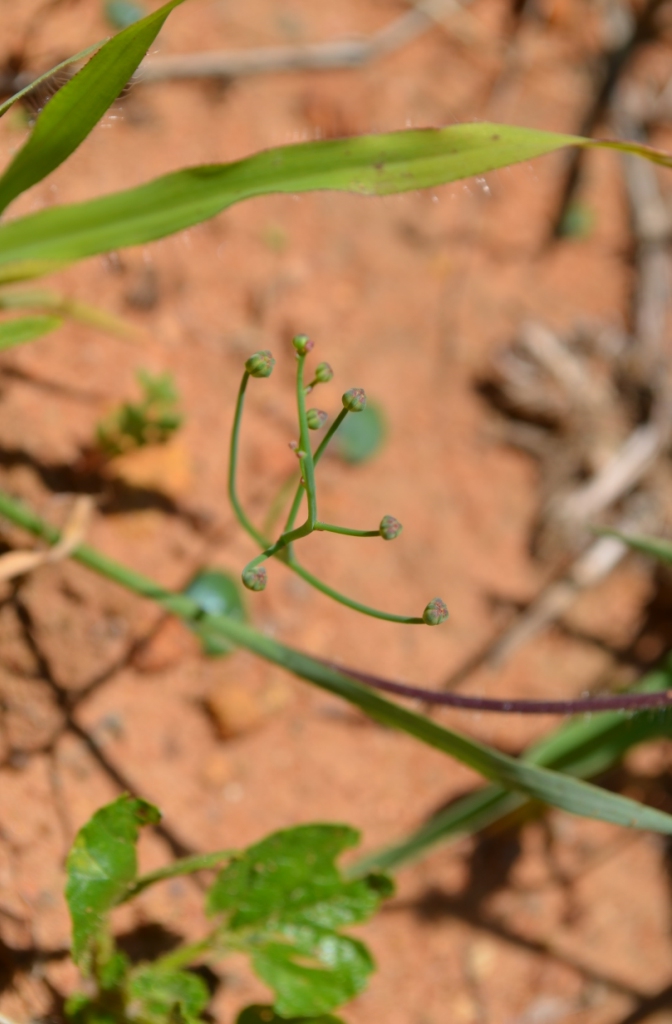
Flowers of a tiny leafed Ledebouria 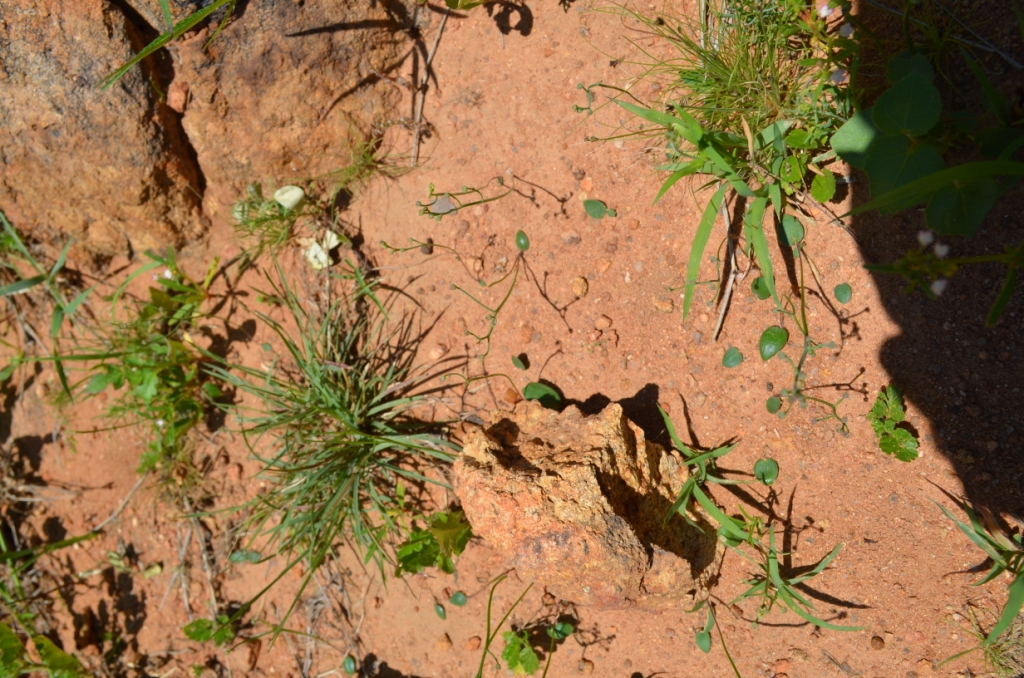
Lots of them
In the fungi world: puff balls and common earth balls are scattered around, plus the tall false ink cap that apparently is found around harvester termite mounds. I see it every year in the same places, they look like yummy coprinus mushrooms except they’re not, but are used in folk medicine to help with cancer. If I wasn’t travelling I would have tried one of the Agaricus species that has popped up, which I think is the rare Agaricus augustus. There are only two other Agaricus species that are similar and slightly poisonous, but I shan’t risk it. In an earlier post I thought I had identified a mushroom as the honey mushroom Armillaria mellea, but I was wrong, I did the spore print and it came out biscuity pink, so now I think it is Lepista sordida, which is little known and apparently quite rare. If you are an expert, perhaps you could let me know.
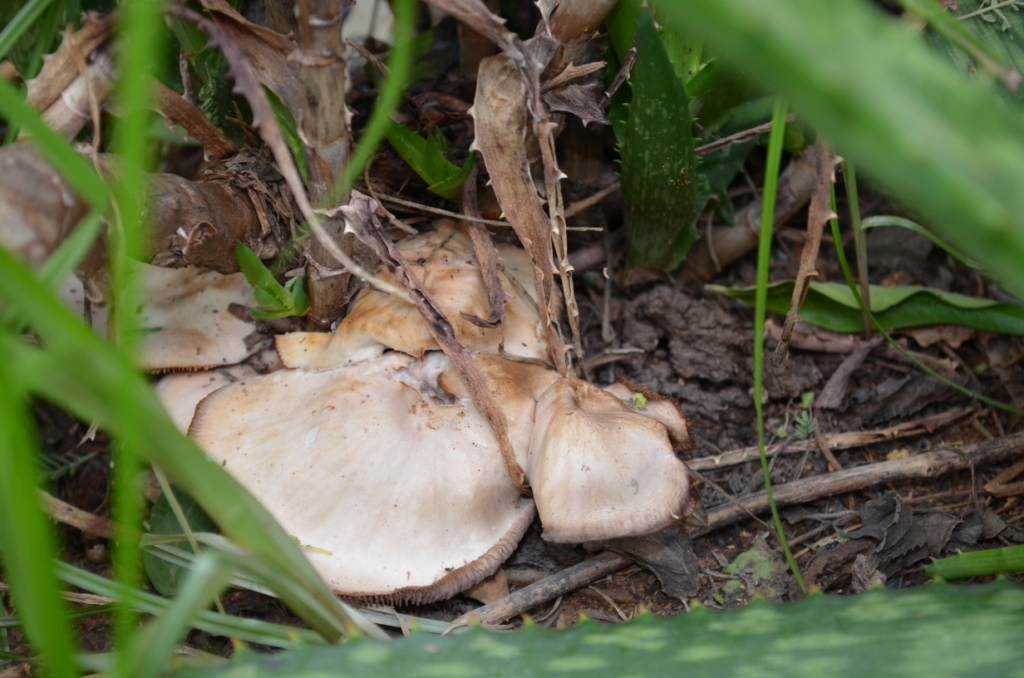
older 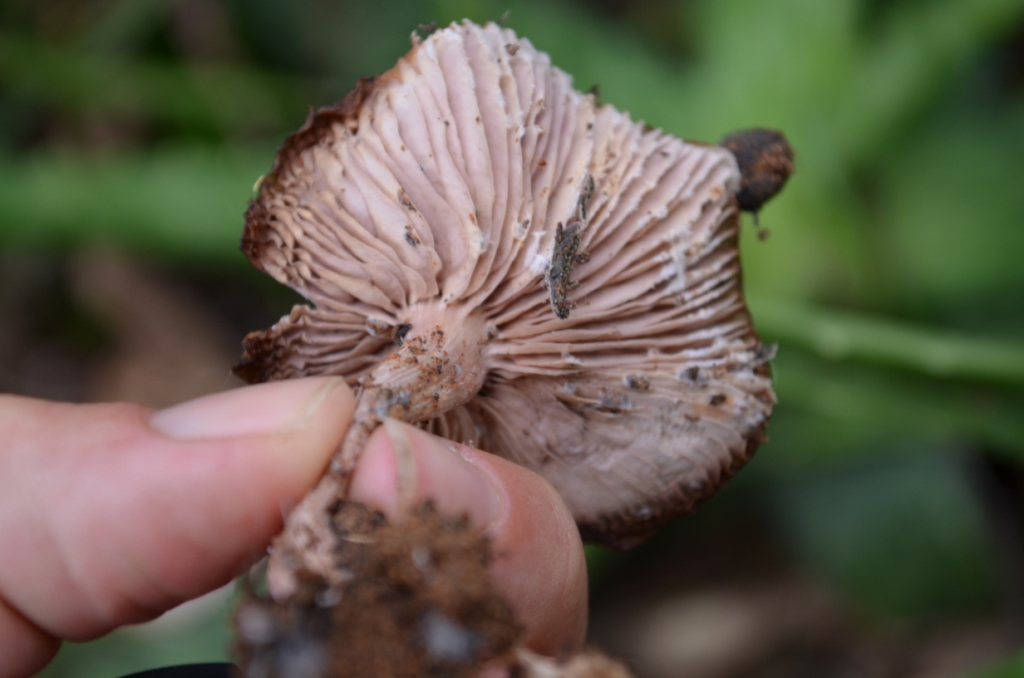
under 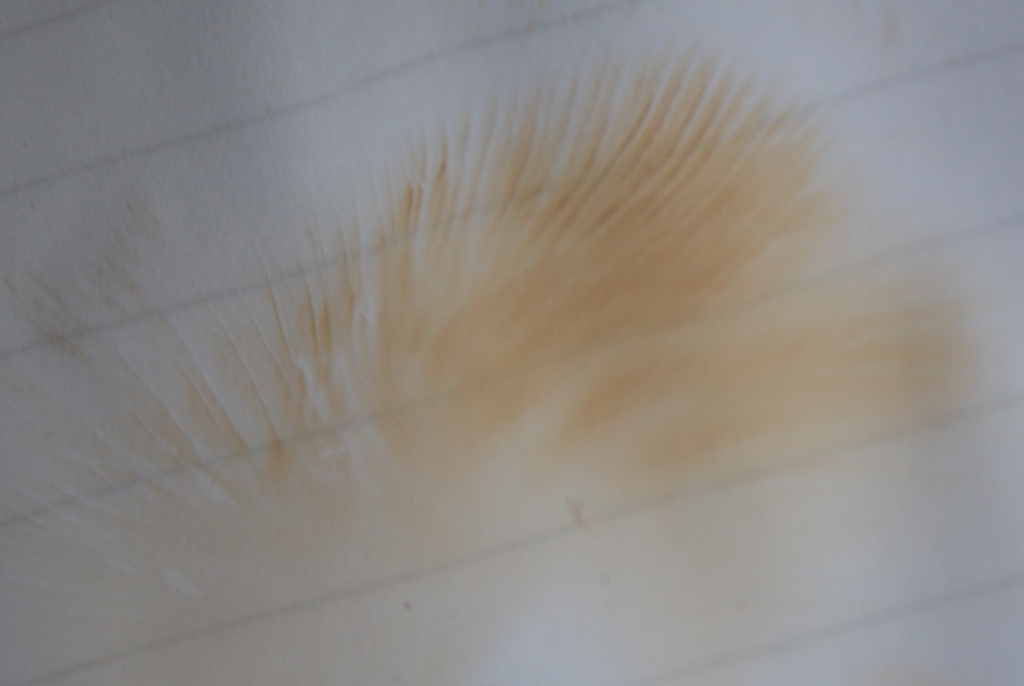
spore print 
Lepista sordida possible

Agaricus augustis or campestris? 
No ring 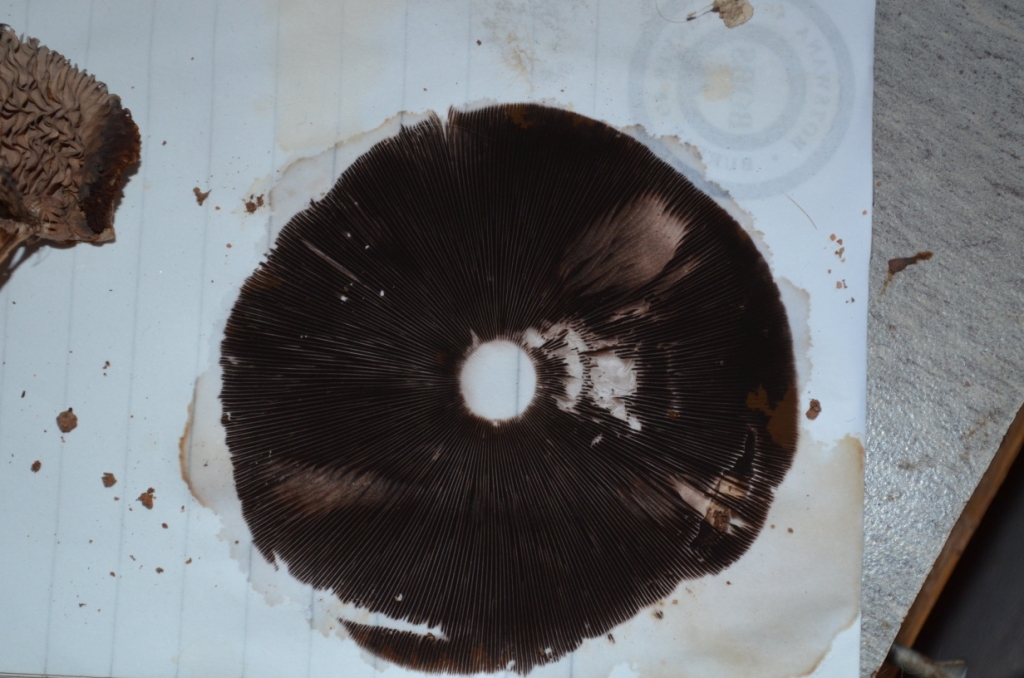
Spore print 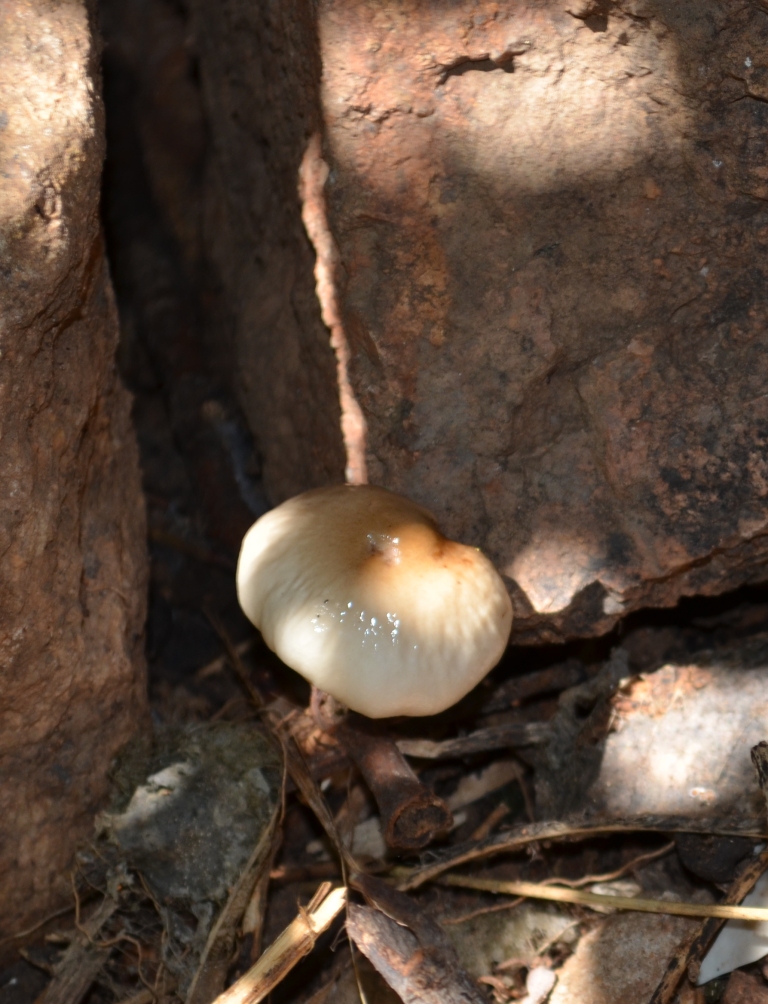
Soapy toadstool – Tricholoma saponaceum 
False ink cap – Podaxis pistillaris 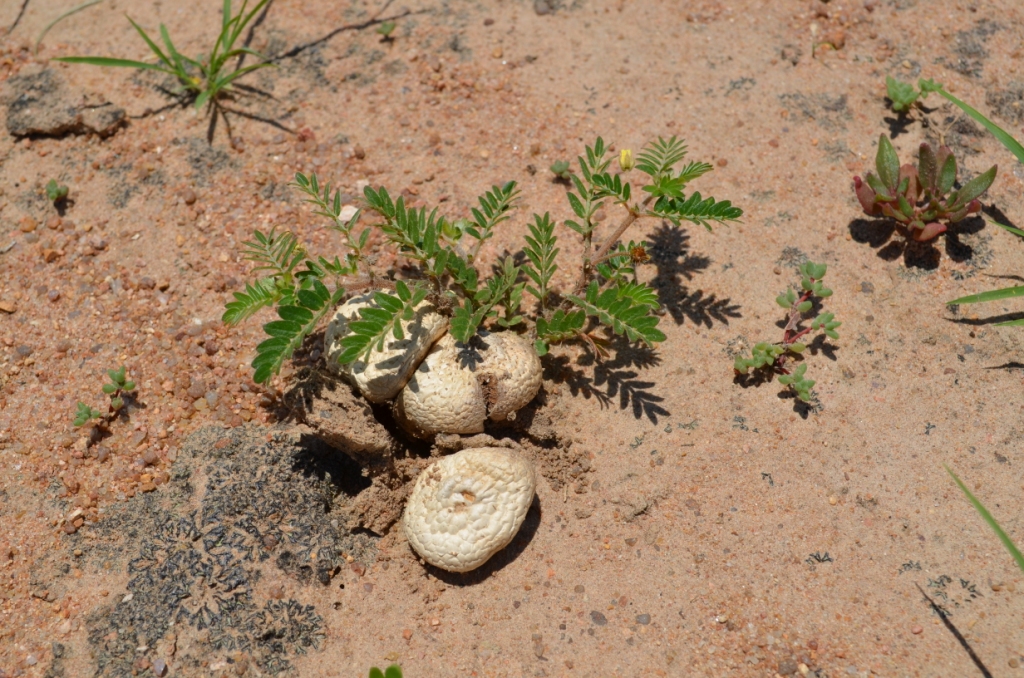
Scleroderma citrinum or Pisolithus tinctorius
In the garden: I’ve splurged on more bromeliads to fill the vacant spots of the Statice and Gauras. one was on special at Spar and is really striking. The other is a Tillandsia which I got for a bargain P22 and is just about to flower. The arabian jasmine is flowering non stop and I absolutely love passing beneath the scented flowers. I took some rose cuttings at an absurd time this year just before the good dose of rain, however it paid off as many of them seem to have taken.


Rose cuttings 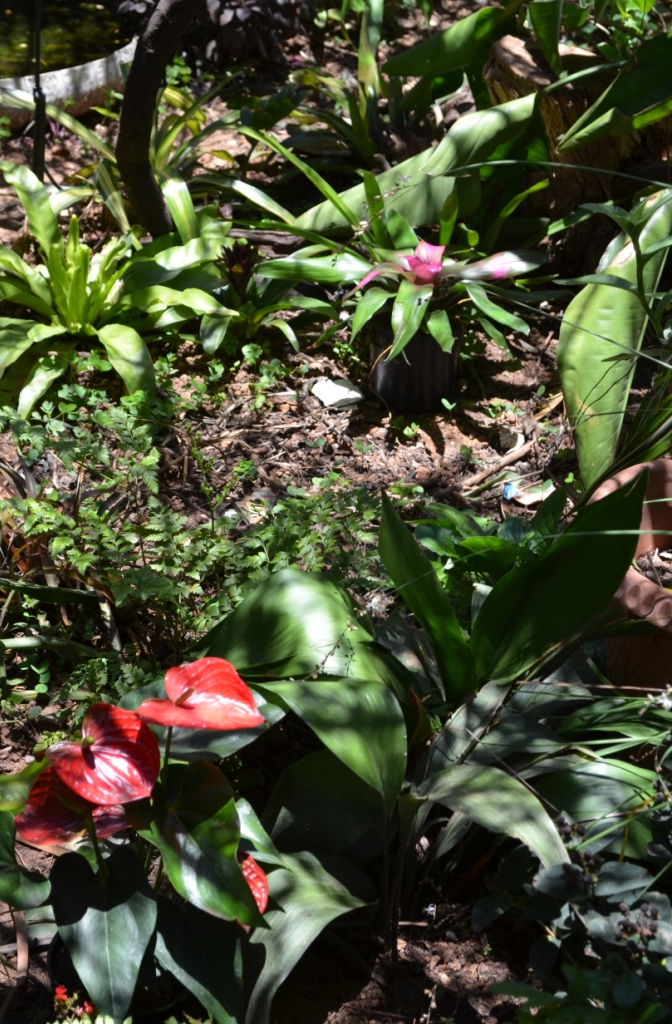
Filling in the gaps
On a sad note, I had to take one of my cats to the vet, Poley, as she had developed cancer. She was a white cat, and they are more susceptible to the sun, so if you have one, make sure you put sunscreen on their ears, and talk to your vet about what to do to prevent cancer developing.

9 Dec – 30mm; 10 Dec – 10mm plus an afternoon thunderstorm of 20mm
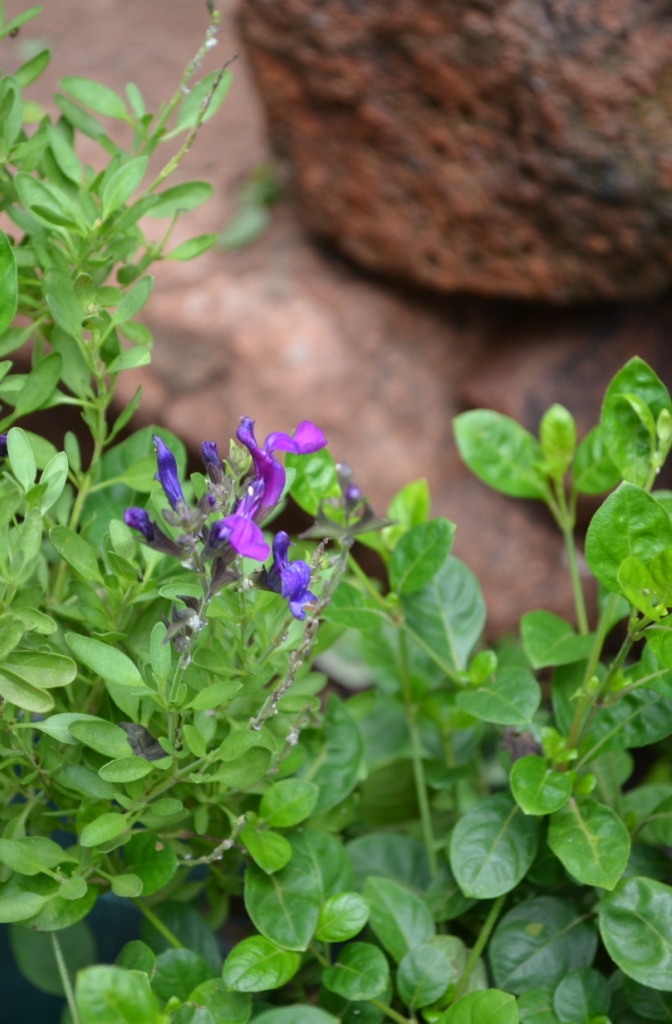
Salvia and Barleria 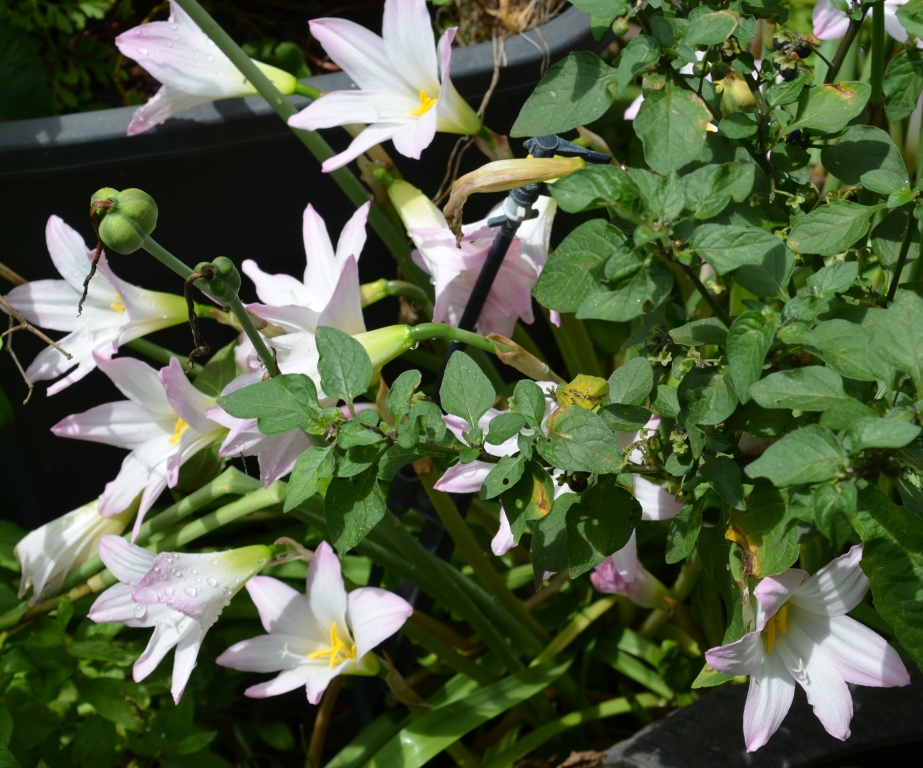
Zephyranthes – rain flower
With the rain, the indigenous garden has thrived, and most plants in the other gardens, however a few appear to have contracted a disease, in some – the leaves have gone brown overnight and I suspect it could be phytophthora, a fungus that usually occurs when the soil is overly wet. Unfortunately the Statice, Gaura, Sage and Nectarine have all gone into a decline since the rains. However with our customary variation from season to season, other plants will thrive, and while I do sometimes retry certain plants like the Avocado, sometimes it is best to learn what does well, and stick to those. Like fungi – definitely thriving:

Lepista sordida possible 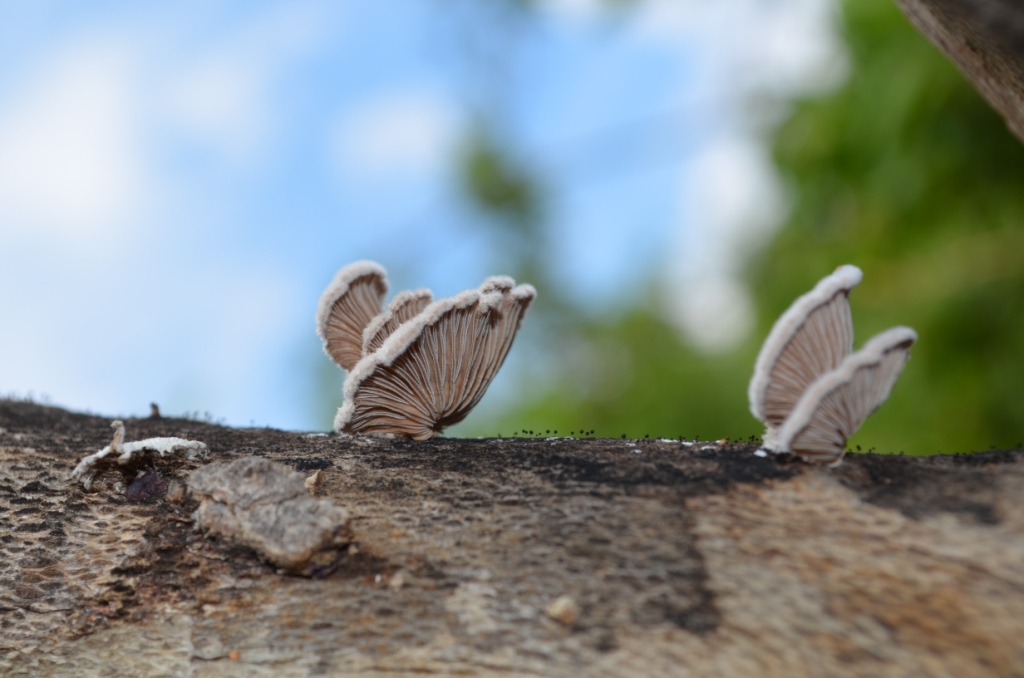
Possibly Crepidotus variabilis or a Lentinus
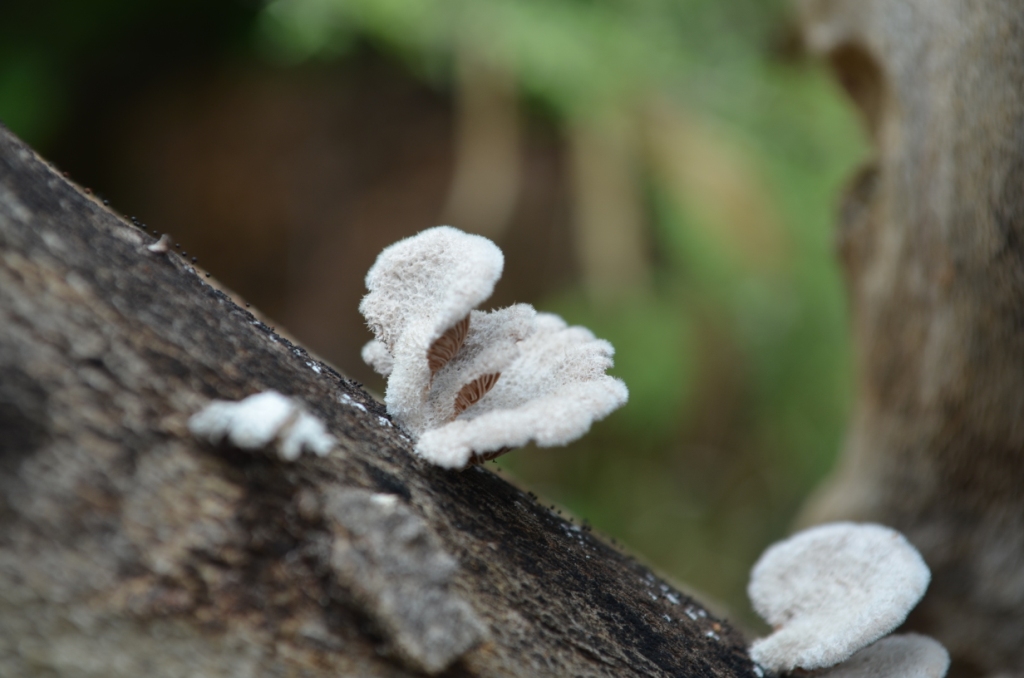
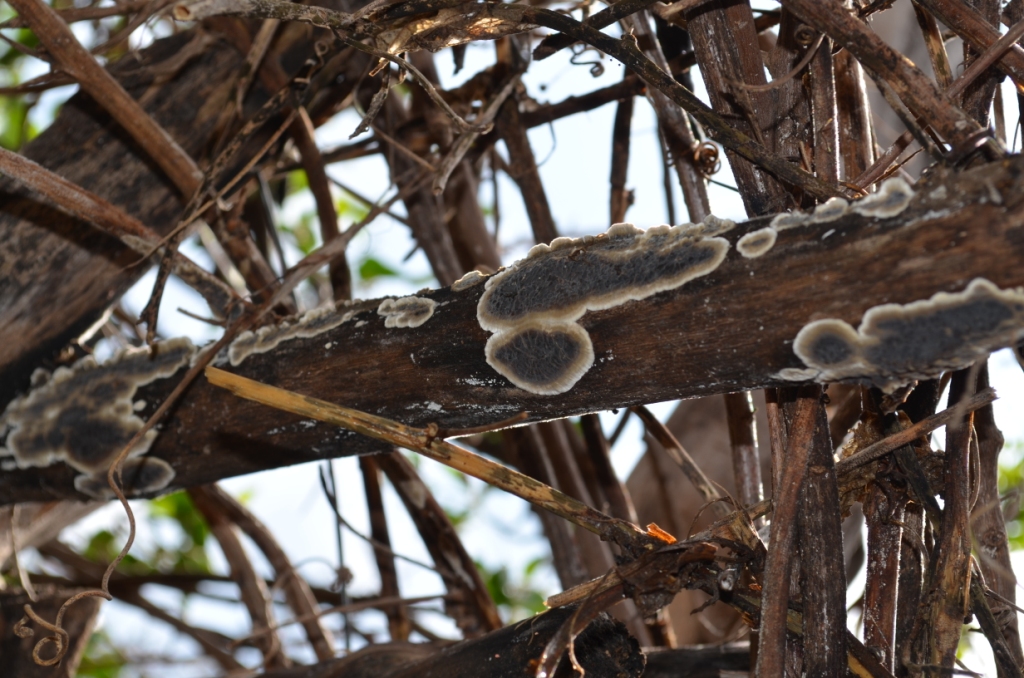
In the vegetable garden: All the veggies have responded well after the rains, the chilis especially, and the tomatoes too, the extra rainfall did cause a lot of the tomatoes to split, but they tasted yummy all the same. Beans are sprouting all over, and I’m hoping that while I’m away there will be some more rain to keep them going.
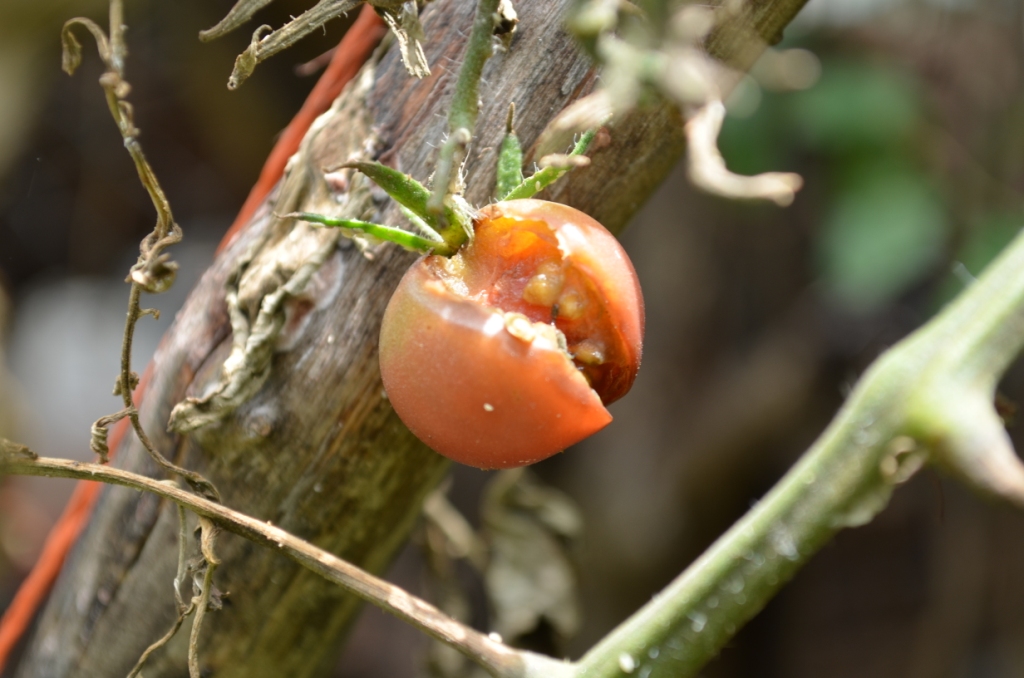
In the herb and fruit gardens: The tarragon and sage seem to be suffering after the rainfall, but all the others are springing into action, especially the basil, mint and oregano. The peaches have split; the silver cane berry which adores water is shooting up new canes, but quite a few granadilla flowers were blown off by the rain.
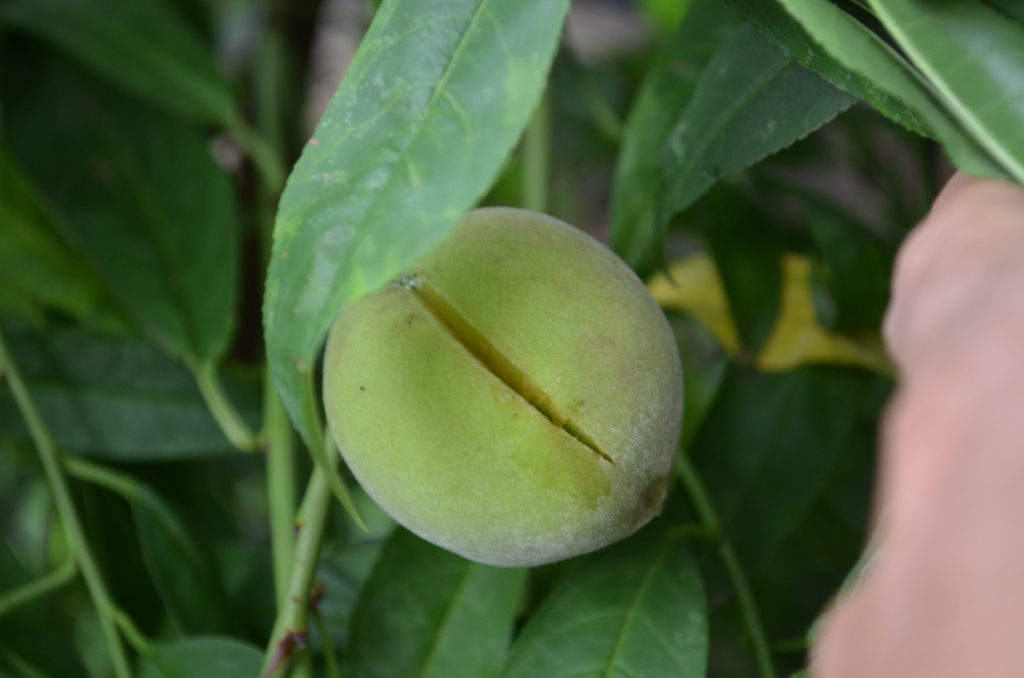
Peach
In the indigenous garden: all the Cleomes have started to flower, the Corchorus, Corbichonia, Cyathula and Cyanotis, plus Tulbaghia acutiloba or leucantha, and Kohautia virgata. The leaves of the Lapeirousia have just emerged, and this time there are no goats to mow them down. All the trees are doing amazingly, and even the Azanza garckeana looks set to resist the mealybug this year. Croton megalobotrys or the large fever berry, has fruited, and the weavers inexplicably enjoy tearing off its leaves.
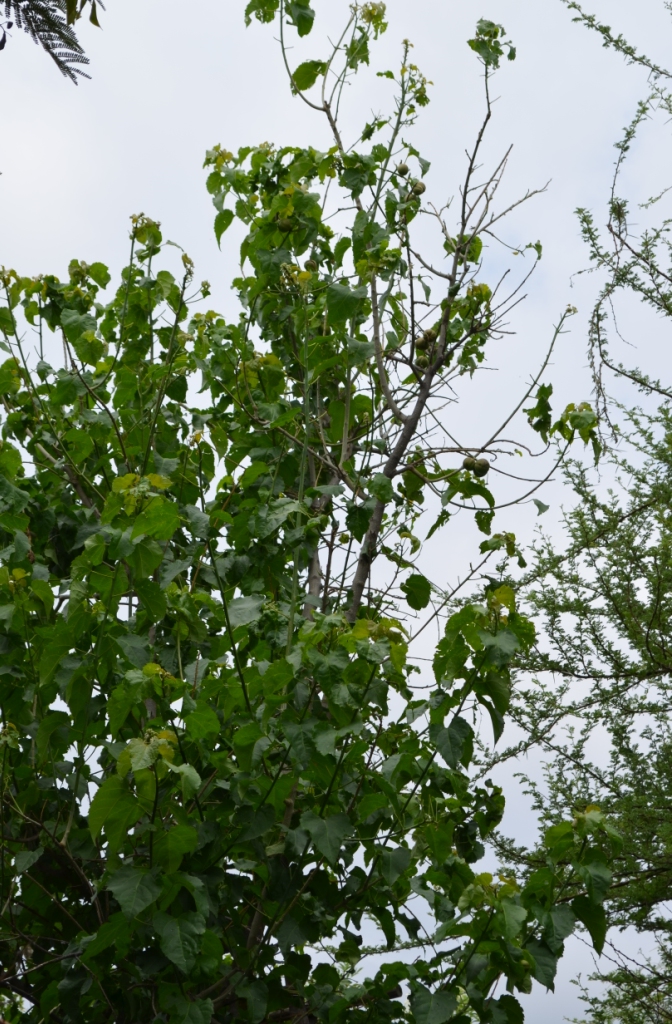
Croton megalobotrys 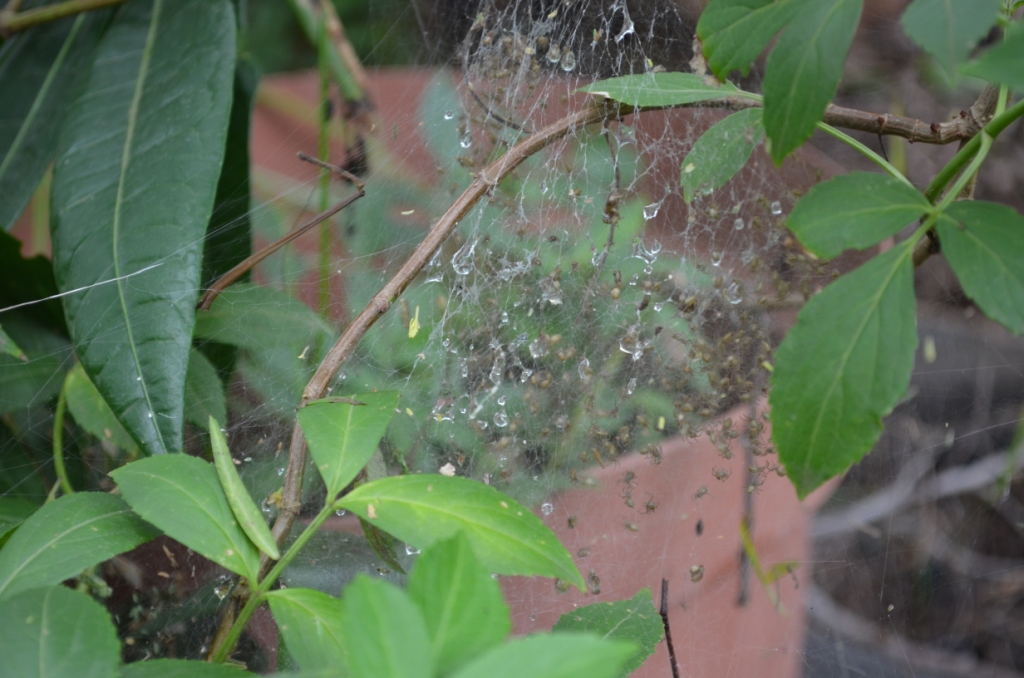
A mass of baby spiders
In the pond gardens, the catfish are swimming in the largest amount of water ever, as our newly fixed pond filled up to the brim with the rains. Situated as it is, at the lowest point, it collects all the runoff from surrounding areas, the boggy channels that lead to it have Aponogeton juncus in flower, and some crinums.
In just a few days – this is how our fungi have developed from the last series of photos:

Lepista sordida 
A little bigger
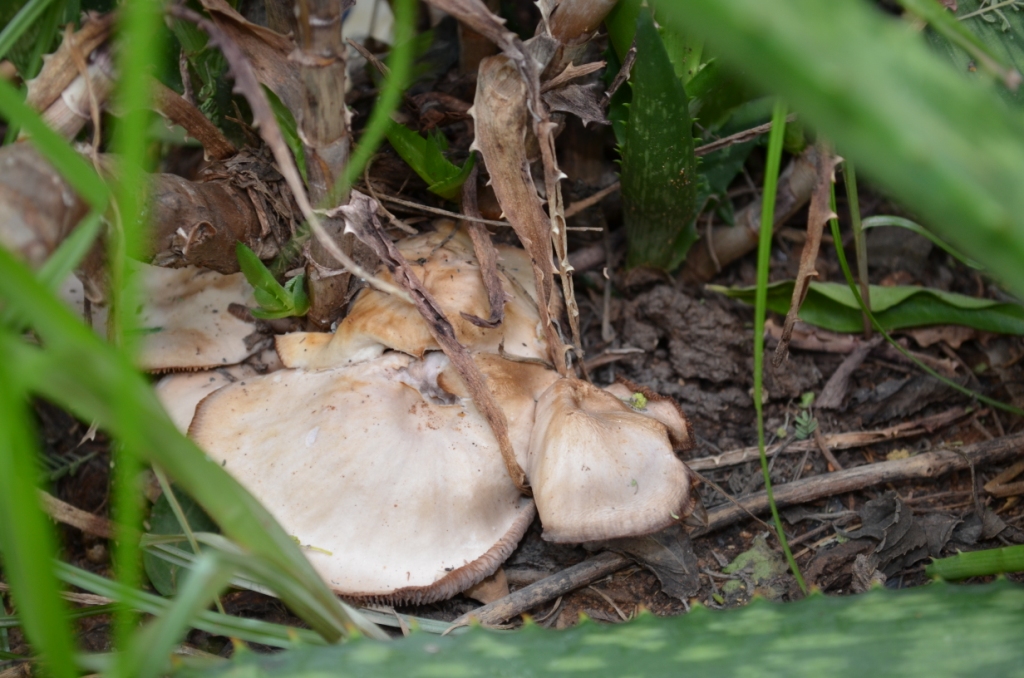
8 Dec – Another 8mm and the Fungi world has awoken
The moss and lichen world too
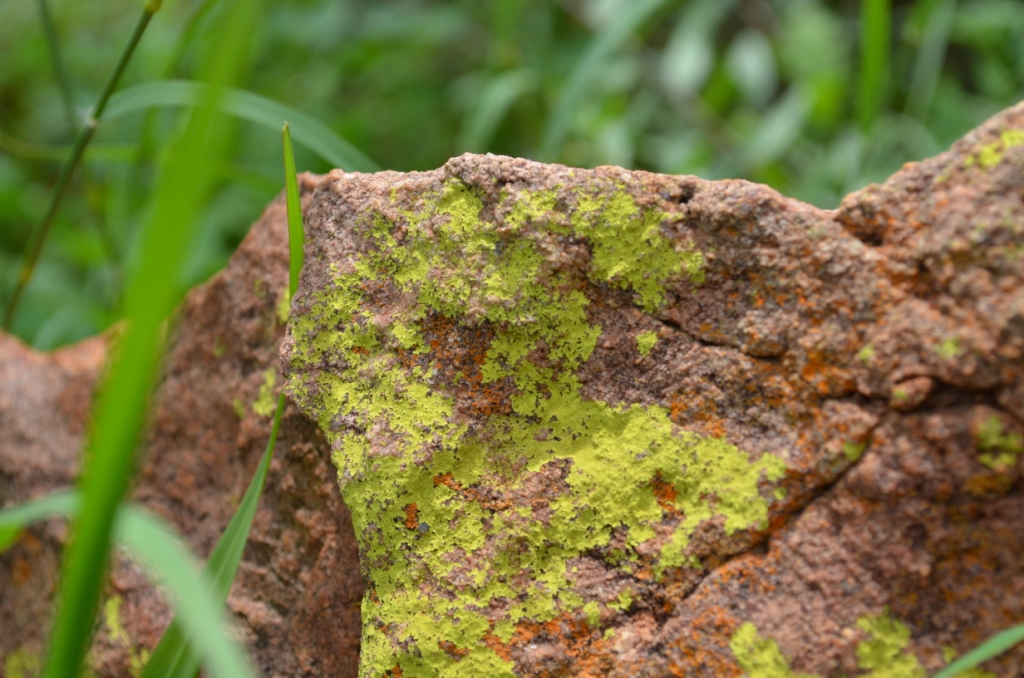
It’s amazing how in this extreme climate everything germinates, grows and sets seed at such a rapid rate. In just over two weeks the devil thorns like Oxygonum sinuatum and Tribulus terrestris are already seeding, and I used to weed out a lot of these plants until I kept some rescued tortoises for a while and found out that they love these plants. They’re also edible and can be used in salads for the former, or cooked like spinach for the latter. Oxygonums have a sorrel-like or ‘donkey-weed’ flavour. Wild basil, Ocimum americanum and the various amaranth species can be used in cooking too.
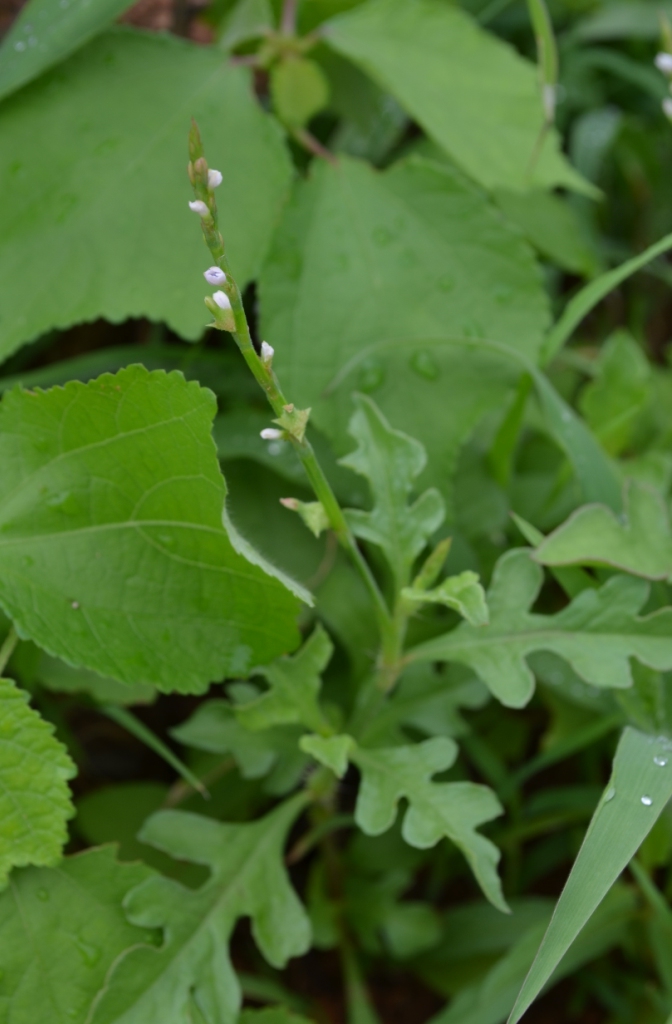
Oxygonum sinuatum 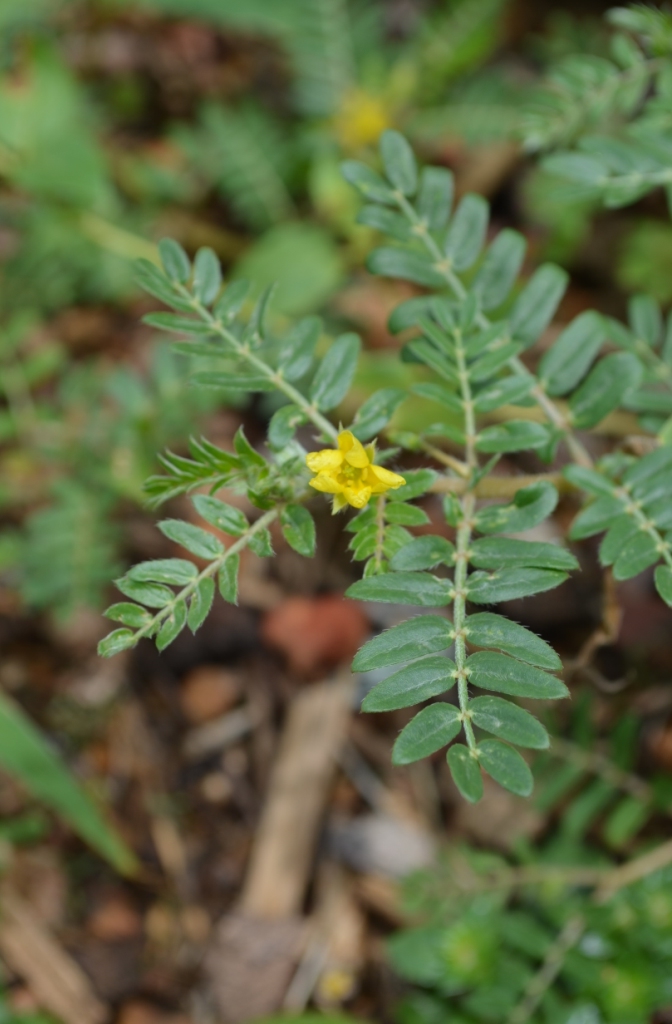
Tribulus terrestris 
Amaranthus spp. 
Ocimum americanum var. americanum
Even more indigenous plants are coming into flower, and as I’m using this a little like a logbook, these are some of the newest plants to flower this week: Sesamum alatum, Kyphocarpa angustifolia, Indigofera holubii or alternans, Sida dregei, Gisekia africana, Ipomoea obscura, Heliotropium strigosum, Crotalaria sphaerocarpa, Commelina africana, Justicia flava, Spermacoce senensis, Vahlia capensis, Chamaecrista absus, Mollugo cerviana, Blepharis and Gomphocarpus fruticosus, plus an unidentified so far, and here comes the deluge of photos.
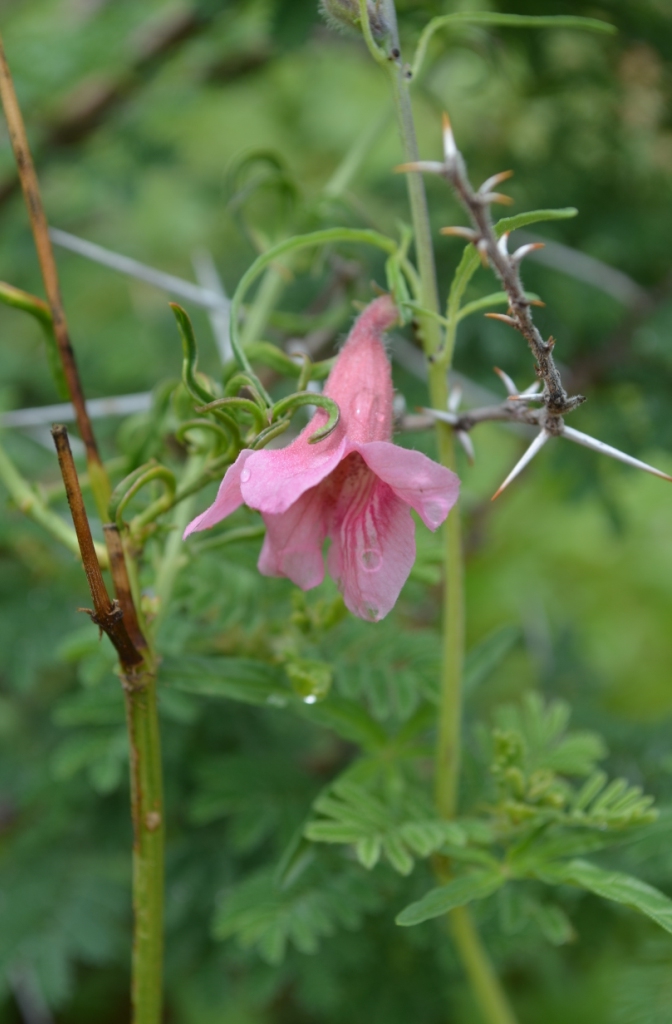
Sesamum alatum 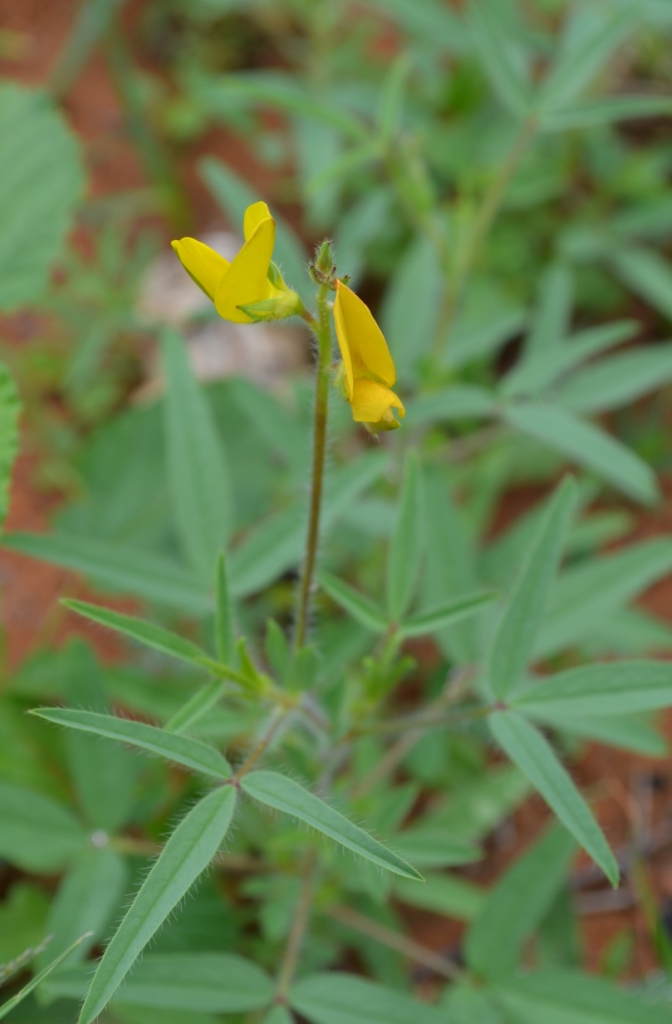
Crotalaria sphaerocarpa 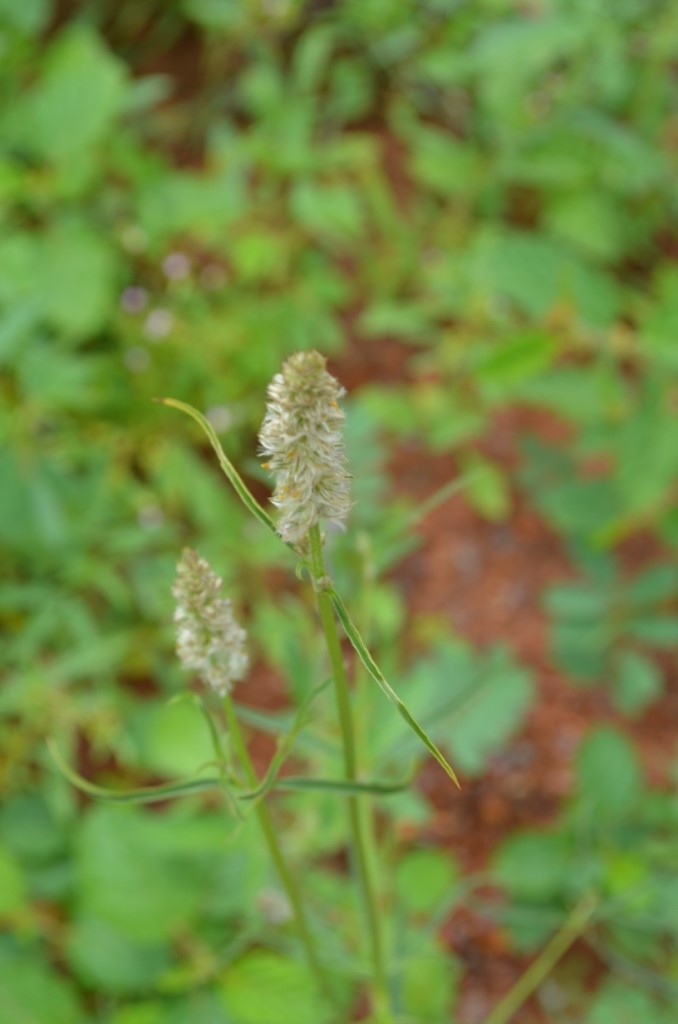
Kyphocarpa angustifolia

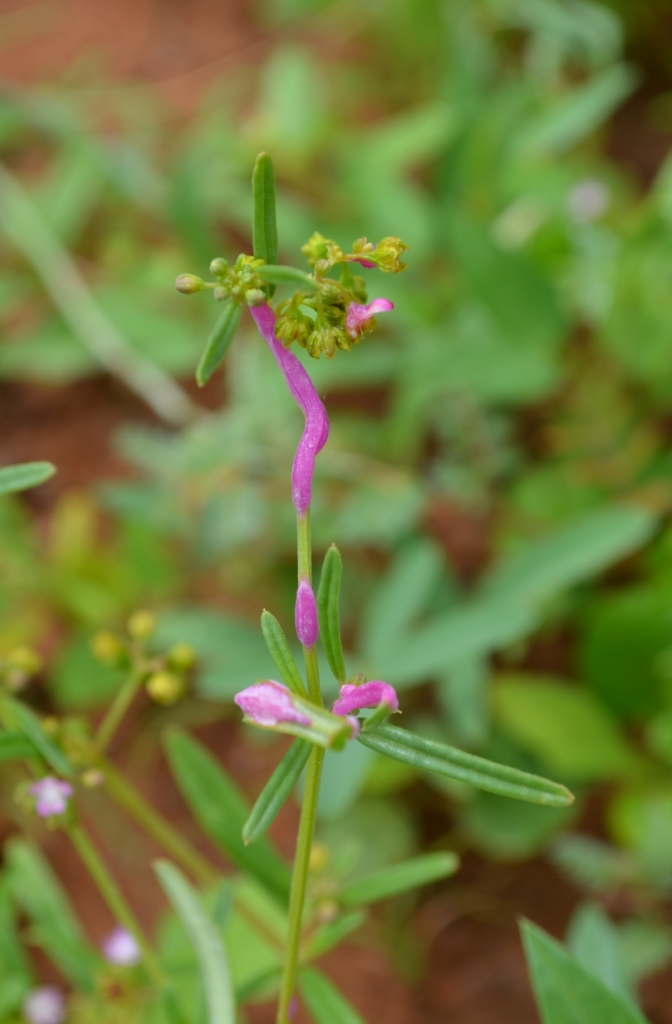
Gisekia’s colourful foliage 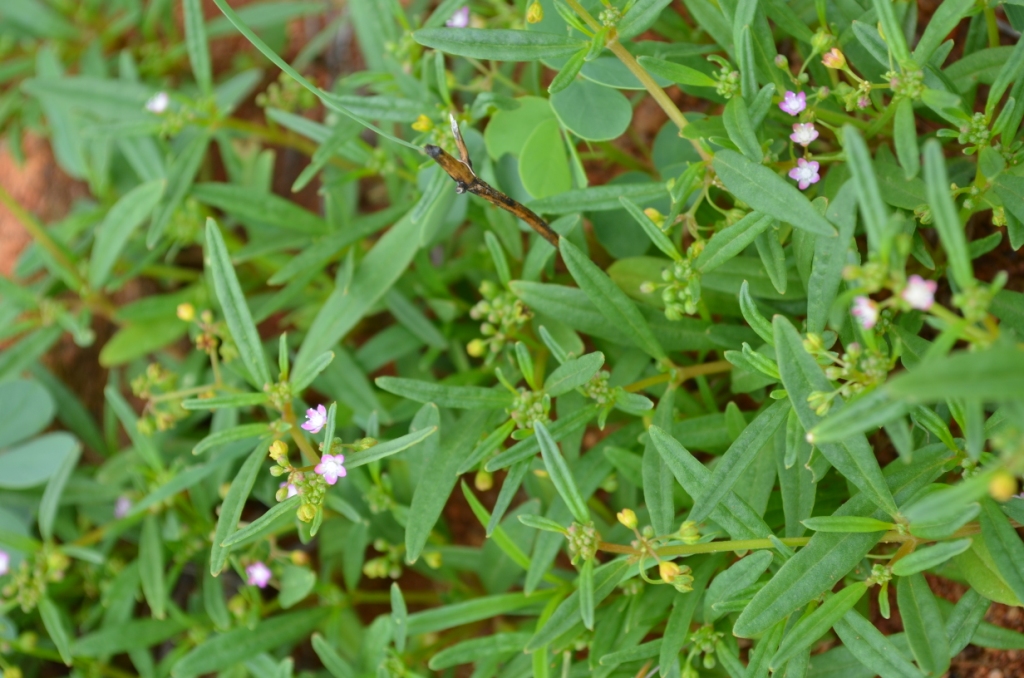
Gisekia africana 
Heliotropium strigosum 
Ipomoea obscura 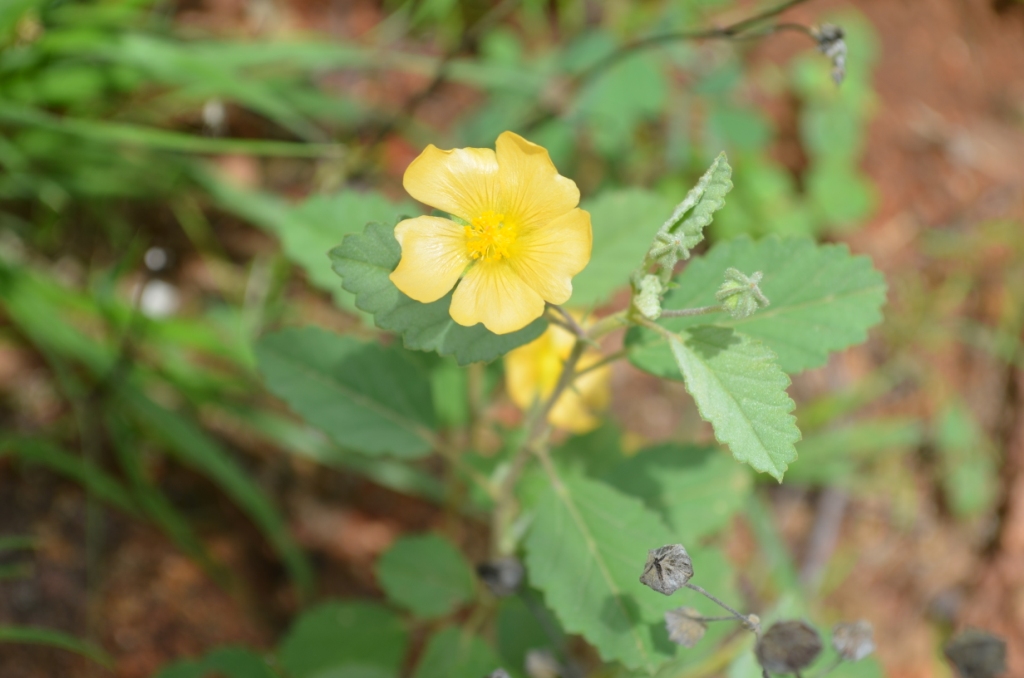
Sida dregei 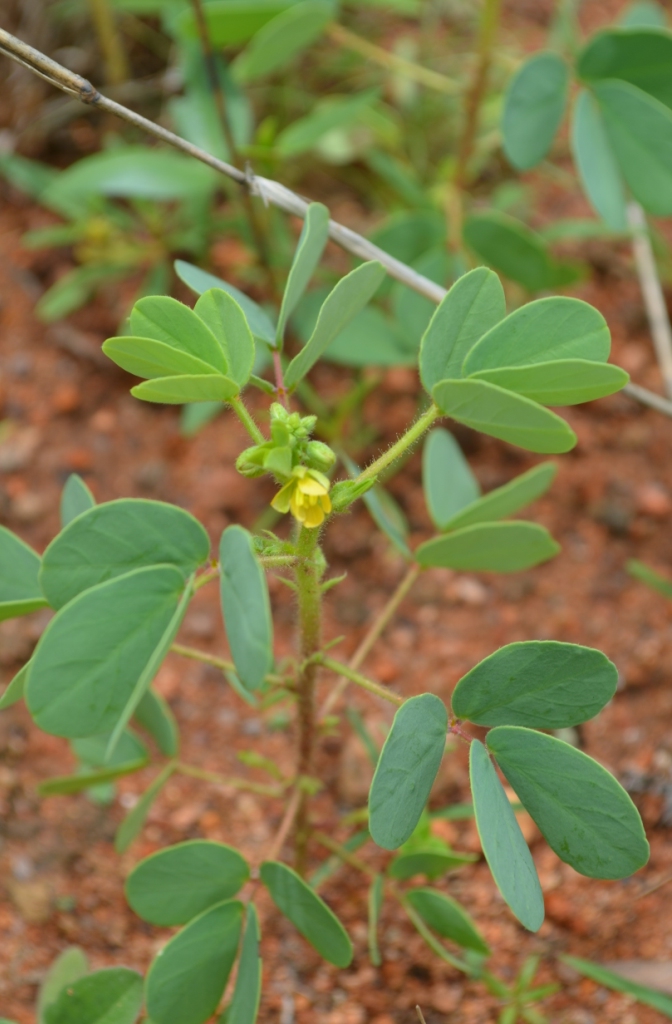
Chamaecrista’s unusual yellow flowers (usually orange) 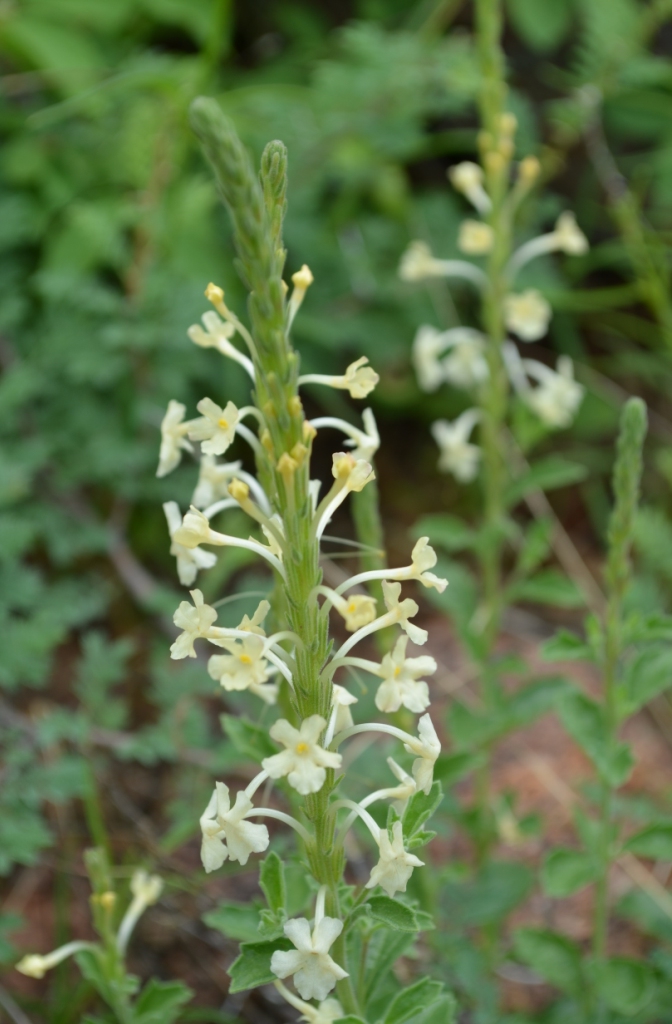
Chascanum hederaceum
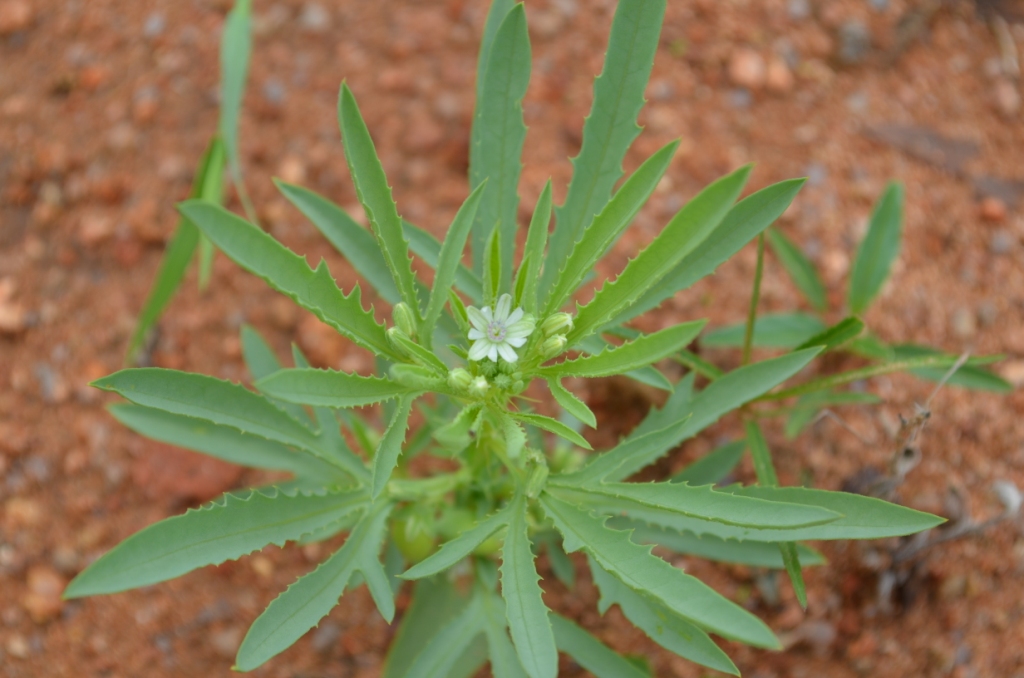
Unknown for now 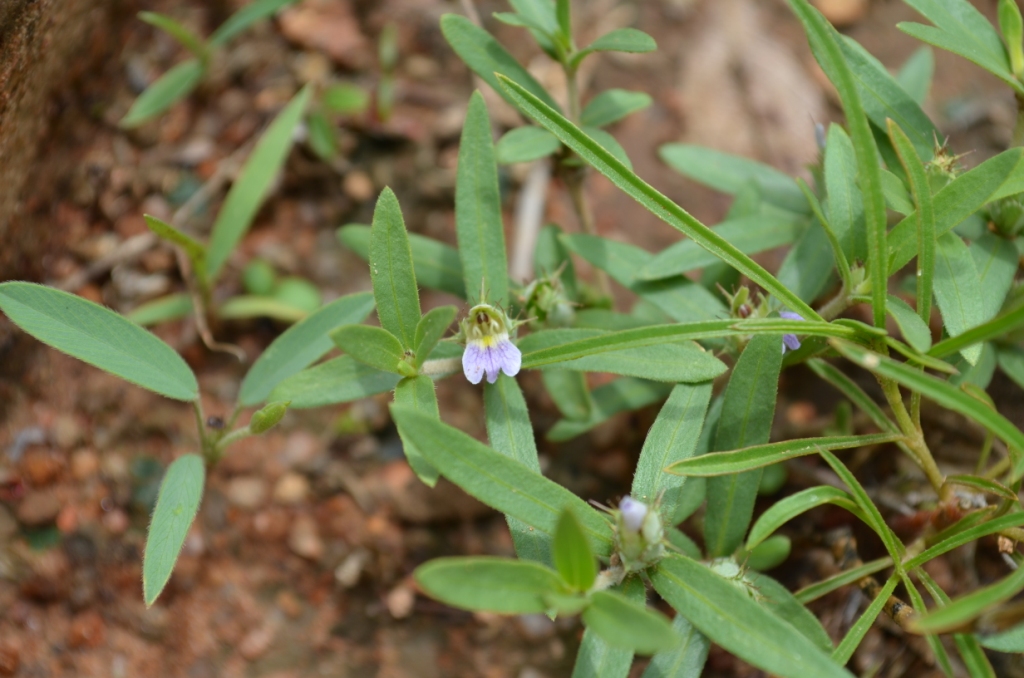
Blepharis spp. 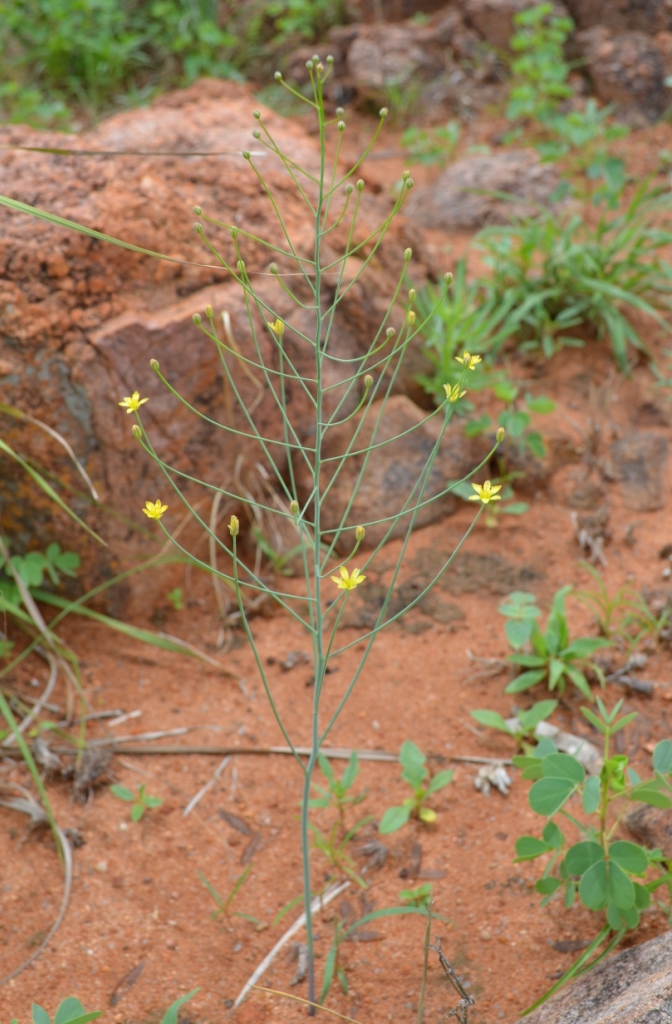
Eriospermum flagelliforme 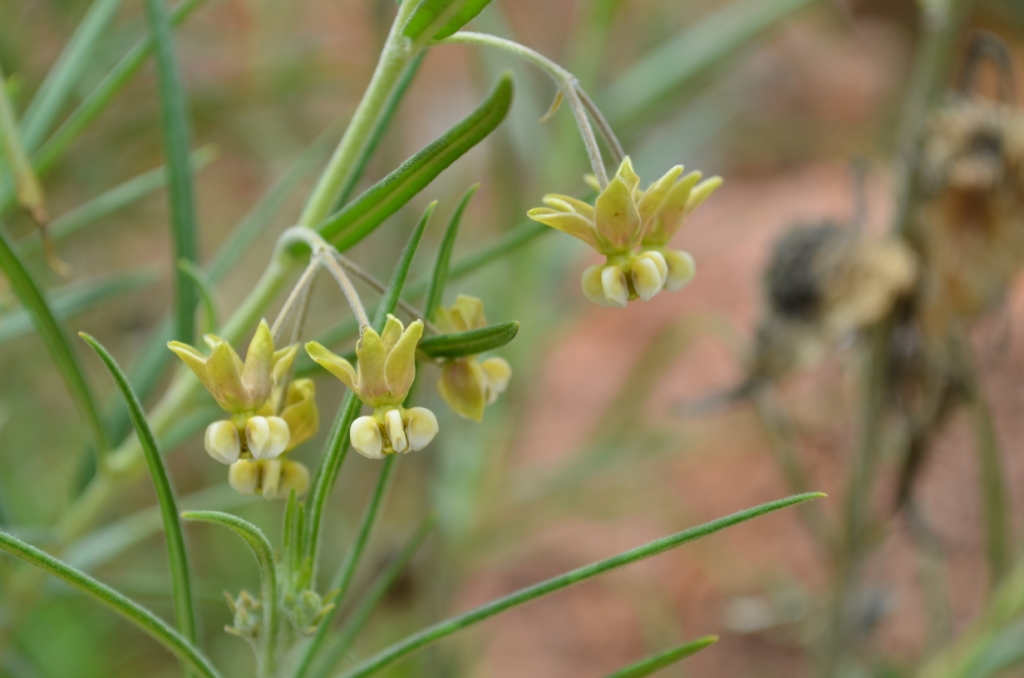
Milkweed, Gomphocarpus fruticosus
New grasses have also started flowering, and lots of insects like millipedes and red mites come out just after the rains
1-7 Dec We received 12mm, 8mm, 14mm and 22mm today, but its still raining, so will have a look a bit later.
In the vegetable garden: After the last rains in November to the beginning of December, the days were really hot and while the garden became a jungle in the space of two weeks some plants didn’t take too kindly to the blazing temperatures. The corn dried up, but I’m leaving it on in case some kernels have developed. The tomatoes became riddled with mealybug, but still producing thankfully. The chilis thought it was heaven, and so did the sorrel, sugar beet, chard, tomatillos and jerusalem artichokes. The sunflower in the garden has finished and set seed, but the one in the pot is only just about to flower. The potatoes are now about 20cm and so I’m going to mound them up.

In the herb garden: The nasturtiums died back in the last week, but are still putting a few new bonsai’d leaves. The mint, and gotu kola died back a bit, but still doing quite well. The rosemary, sage, oregano, parsley and lavender seem to have established themselves now, and they resisted the heat wave with ease. So too did the roses, catnip, ashwagandha and feverfew.

In the fruit garden: The goji and gooseberries are doing well. I planted out one of my custard apples just in time for this lovely rain. I haven’t found the right place yet for the avocadoes, mangoes, or grapes, so have found a couple of new spots, and going to try them out and see. The granadillas are loving this weather and spreading out over everything as always… if only I had a long road for an endless pergola of granadillas. The huckleberries have finally started to ripen, but they have a mass of mealybugs and bagrada bugs on them, so will see if they shake these pests off with the rain.

In the garden: The elder and arabian jasmine are competing for sky space by the herb garden entrance, and lovely white flowers canopy the whole area. The star jasmine has really done well this year and continues to flower. The potato bush has not stopped flowering and is just a mass of purple, it has interwoven through the grewia, so the yellow and purple flowers are giving the garden a real cheery look. The tropical garden survived the heat, but the curry bush got some sort of bug that laid its eggs in the growing tips (which I pinched off). The gauras didn’t like that heat, but have been watering so will see if they manage to come through. The leaves of the hypericum bush browned and curled a bit, although fresh green shoots below show that it will probably come about with this rain.
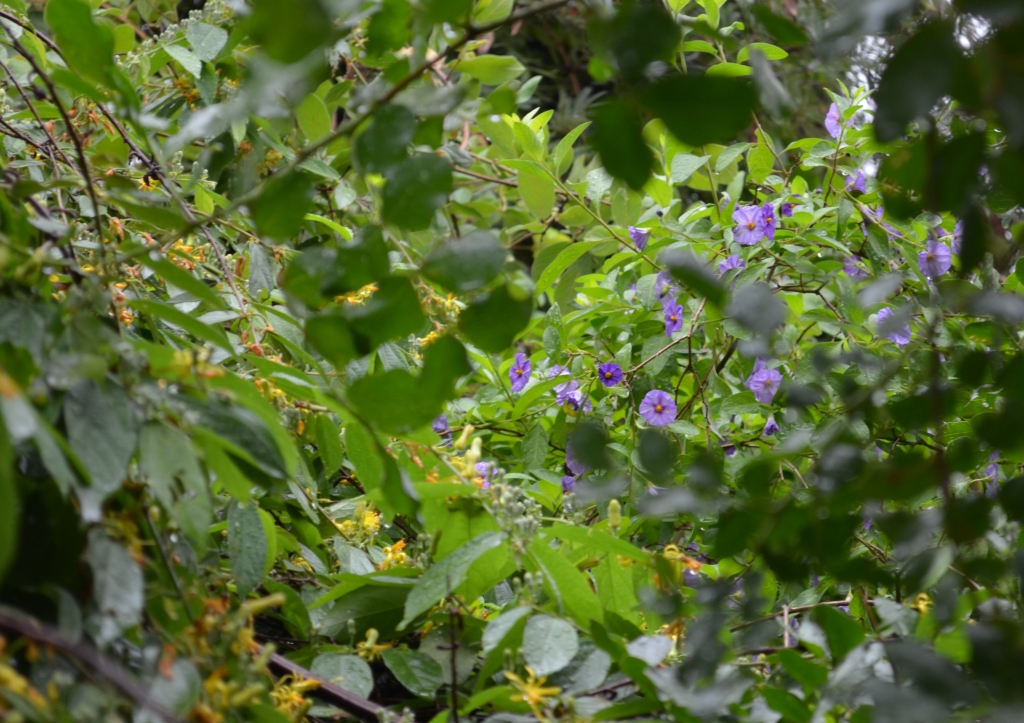
In the indigenous garden: More alive than ever and always providing hidden surprises, its now the turn of the Crotalarias and Commelinas to come into flower. The Eriospermum flagelliforme and Trachyandras are flowering too, with their dainty yellow flowers and white flowers. Heliotropiums, Lantana rugosa, Hermannia modesta and Chascanums too, and the Hermbstaedtias are just starting. The gorgeous Ipomoeas are also beginning to germinate and I. bolusiana is flowering all over.

Hermannia modesta 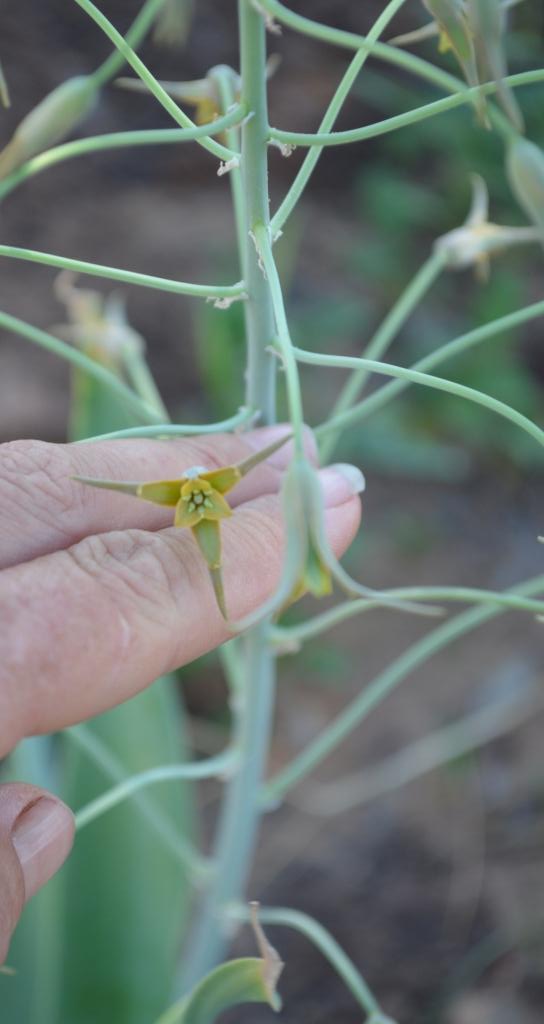
Dipcadi viride 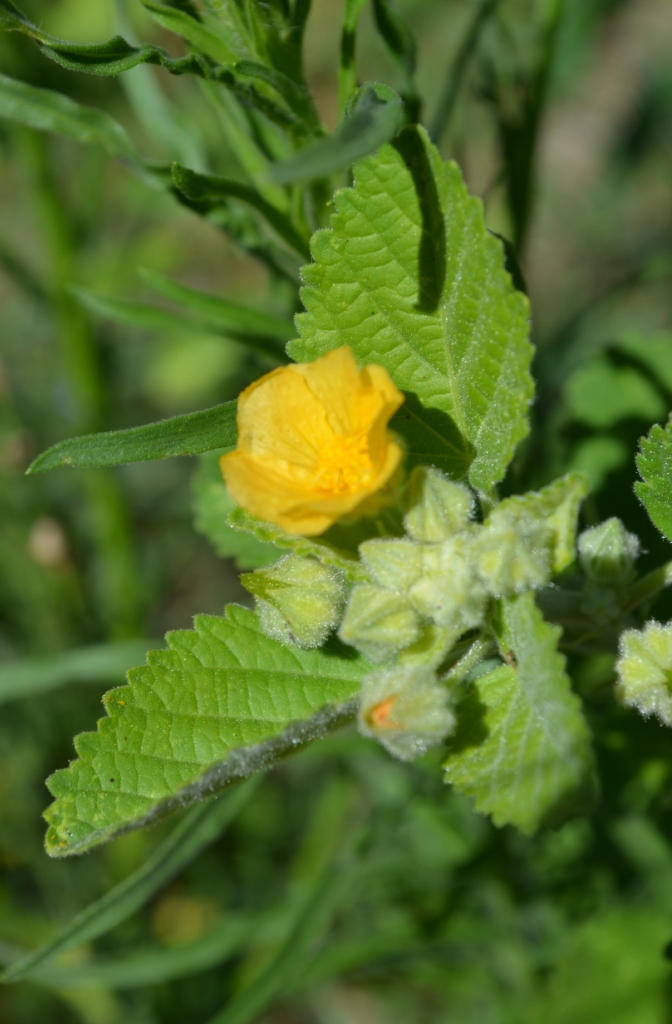
Sida cordifolia 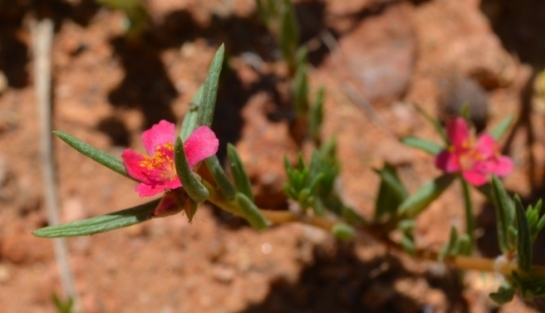
Portulaca kermisina 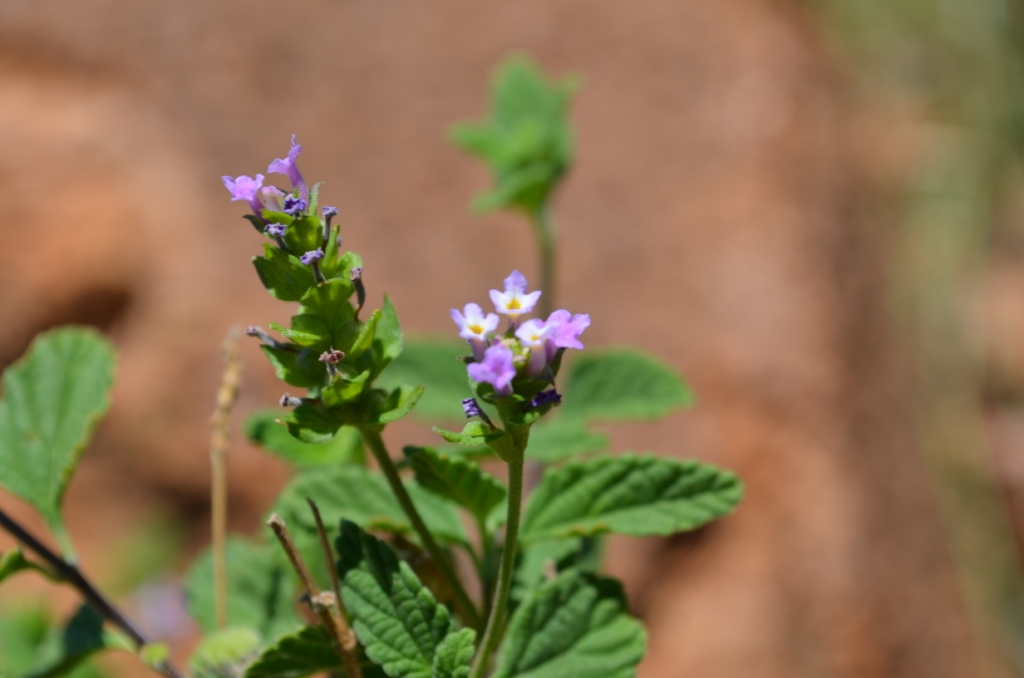
Lantana rugosa
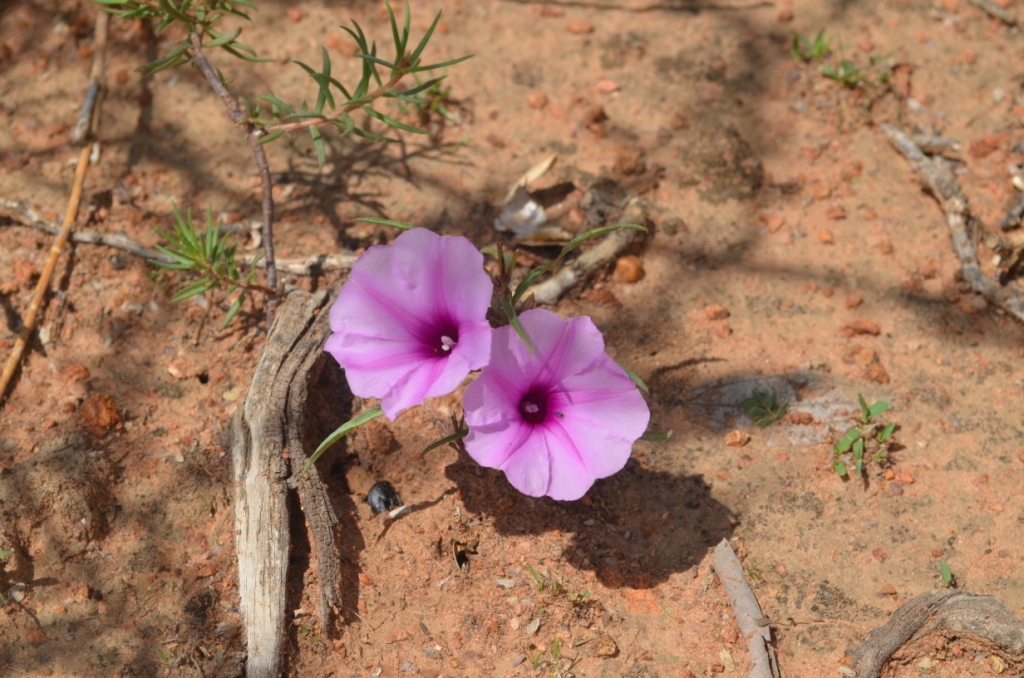
Ipomoea bolusiana
November 2019
November 2 2019 – we received 70mms of rain here in Matebeleng, and what a relief it was to finally have our first rain of the season.
In the vegetable garden today: the tomato plants need our homemade oil/ washing soap spray to remove the mealybugs that are beginning to destroy the new buds. Swiss chard is looking good. Tree tomatoes have just started flowering. Unfortunately my Tomatillo went without one day of watering, and has shrivelled up. Radiccios were doing well, but are now infested with the mealybug. I find when its really hot, and plants don’t get a regular good watering, the mealybugs move in. Sorrel plants are doing staggeringly well, and they are my new favourite veg at the moment. I love their donkey-weed like taste (for those that snacked on weeds when they were small), and they don’t mind getting a little dry either. I planted Kohlrabi for the first time this season, and they did so well, whereas the radishes and turnips gave a lot of foliage and pretty flowers but hardly any roots – so I’ve collected the seed, and will sow again next week. Jerusalem artichoke plants are all starting to grow, and are about 10cm high at the moment. The asparagus still hasn’t emerged yet, so I’m not sure if it survived the locust attack of last year. I’ve sown Aztec corns this year, and strawberry popcorn, the plants have grown well and set flower already, and a couple have cobs emerging, so will wait and see. I have one purple bean that germinated, and I’m crossing all fingers and toes that I get some beans from it, as I have no beans left to sow for next year.

Courgette 
Kohlrabi 
Tomatillo
In the herb garden today: the persian and cinnamon basils are doing well, I have sown genovese basil two weeks ago, and transplanted the seedlings into seed trays over the weekend. My garlic chives are still doing well despite the cats lying all over them. Mint is running rampant, and my favourite spearmint is actually starting to spread quite well, whereas the peppermint is a little invasive, so having lots of teas to keep it in check. Sage, Rosemary, Salad burnett and Parsley plants are all doing well, my mom gave me a new variety of lavender, and I find the delicate pretty ones always struggle initially, but I think its finally settling in. I give it a good dose of water every day. I’ve also taken a few cuttings in case it bites the dust. Borage has finished flowering, and one of the plants has already shrivelled up, and the other is looking as though its on its way out as well. The nasturtiums were a bit sunburnt, but look like they’re going to make a comeback.

Rose 
Nasturtium 
Purple Basil
In the fruit garden: huckleberries are setting fruit, one peach on my peach tree is ripening, the lemons look like they’re going to give another good harvest. The gooseberries are all about 80cm high and will be flowering soon. The mulberry tree gave a short spring crop, but will probably flower again soon. The pomegranates have all got fruit on, and are gradually ripening, I am watering at least two to three times a week to keep them from splitting or aborting. The coffee tree was attacked heavily by mealybug, but it is now flowering, and will hopefully fruit well this year. The Kei apple, Figs, waterberry, white sapote, olives, guava and litchi are still not there yet, but I’m hoping the natal plum will fruit again this year. Pyracanthas all have a good crop of mini apples on them, and the snow cane bramble is taking a rest this year, it really likes a great deal of water. The grape is hanging in there – just, and my last wild strawberries are not doing so well either. I think I will have to move the strawberries to where they can get a bit more water.

Pomegranate 
Coffee
In the indigenous garden: where I water my trees, quite a few plants are already flowering. The devils thorn – Dicerocaryum is at the base of a planted Sausage tree and doing well, along with Tephrosia and their pinky-coloured flowers brighten up the garden. Albucas flowered in early spring, a Trachyandra last week, and Vernonias have started at the base of the Bird plum, Berchemia tree. Waltheria is just starting to flower, and the Hibiscus micrantha are either flowering, growing or setting seed. The Xerophyta retinervis plants have come out with a flush of green leaves, and give some relief to the barren rocky areas. The combretum trees are in flower, and insects are going wild, creating a hum whenever you walk past, the Mmilo trees (Vangueria infausta) and Baobabs have new budding leaves, and depending on the location, the Grewias are just putting leaves, flowering or are still bare. The African wattle is also just coming into flower, with its lovely shocking yellow, and the birds are loving it.

Waltheria 
Vernonia 
Xerophyta 
Baobab 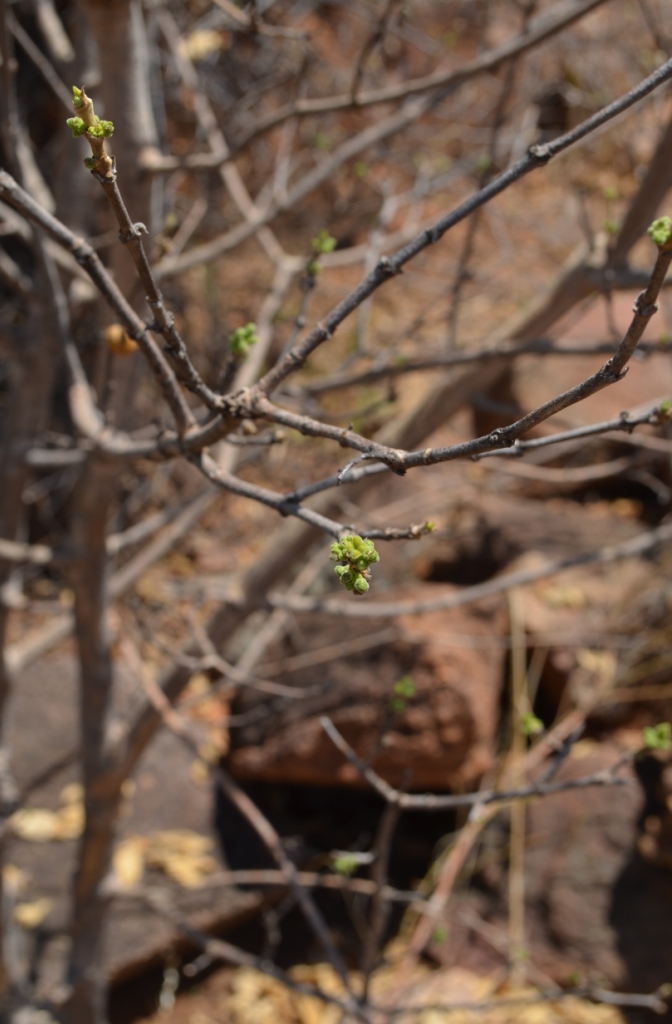
Mmilo 
Combretum
In the pond gardens: All the water lilies are flowering, ‘Chrome’ is looking spectacular as I’ve let it get a bit out of hand. Alisma plantago has flowered and set seed, the Pontederia cordata are flowering rampantly in the Catfish pond, and the Amazonian sword (Echinodorus) is also going a little wild in Elmer’s pond. All the lotus have come up, but they’ve yet to flower. The irises have almost finished their flowering, and the last splashes of yellow are disappearing from the pond margins. All the cyperus species, especially the papyrus have been stripped of leaves by the birds, but are quickly putting new leaves out, and the imperata grasses, arums, and kniphofias are just about to get going, after surviving the long months of blistering heat. Indigenous species such as Ludwigia hasn’t begun to flower yet, and the Schoenoplectus which has been overtaken by all the cyperus species has managed to keep its foothold in the pond, and I’ve cut back the cyperus a bit to give it some room.

Crinum lilies 
Pontederia cordata 
Water lilies 
Cyperus 
Amazonian sword 
Amazonian sword
New this week: I decided we needed a green roof garden, and so have put a small one, about 2.x1.5m and started planting it with succulents. It’s trial and error, but I’m hoping it will do well.
November 11 2019 – we received 8mms of rain last night, with a lot of wind as well.
In the vegetable garden today: All the tomatoes appear to be doing well this year, despite the mealybugs that I keep removing with a spray of water. I’ve got some purple cherry tomatoes, indigo rose cherry tomato, beef tomato, and a couple of others that I’m not quite sure of yet. The Jerusalem artichokes have invaded the garden, but I love their flowers, and so have let them run rampant. I’m still waiting for my chili seeds to pop up, but have a couple still growing in the garden from last year: the ‘Black Pearl’ and ‘Hungarian hot wax’ and a Habanero. I’ve sown ‘Black Tuscan’ Kale and have 2 that have germinated so far; and my red giant mustard seeds have come up too. Celery is about to be transplanted into the garden, and all the sweet potatoes have started to sprout. The corn all have cobs on, and so crossing fingers that they continue to do well, and I get a crop from them, which has only happened once before.. usually they get mowed down by grasshoppers, mealybugs or a parade of other corn loving insects. Lablab beans have just sprouted too, which will give the archway into the garden a lovely splash of their pink flowers.

Tomato 
Corn 
Chili ‘Black Pearl’
In the herb garden: the curry bush (Helichrysum) is giving off a lovely smell after the rains, and the summer savoury is doing well, but the tarragon got hit by the heat, so have moved it into a more partial sunlight spot and keeping it well watered. All the elder shrubs are flowering, so will have to get around to harvesting some to make a cordial, or just put them directly into some water to enjoy the refreshing taste. In a previous year I had sown Epazote as a novelty herb, known as ‘Mexican Tea’ but it promptly invaded my garden, and I still haven’t managed to totally eradicate it from the garden, but persistence is key, so will keep plucking it out when I see it. Feverfew is another self seeder, but I love the flowers and it is always welcome to pop up where it likes.

Curry bush – Helichrysum 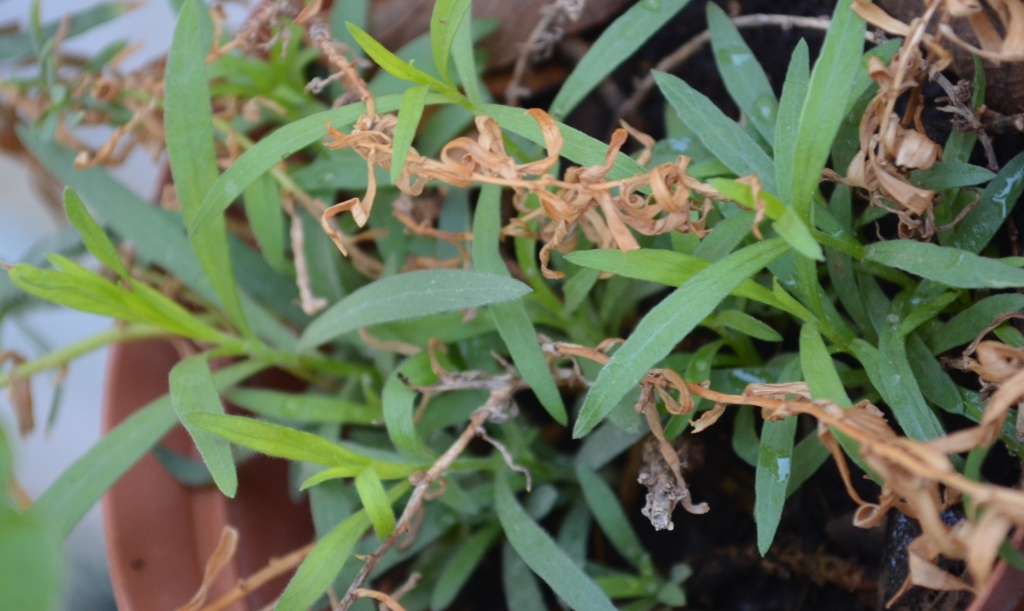
Tarragon – Artemisia 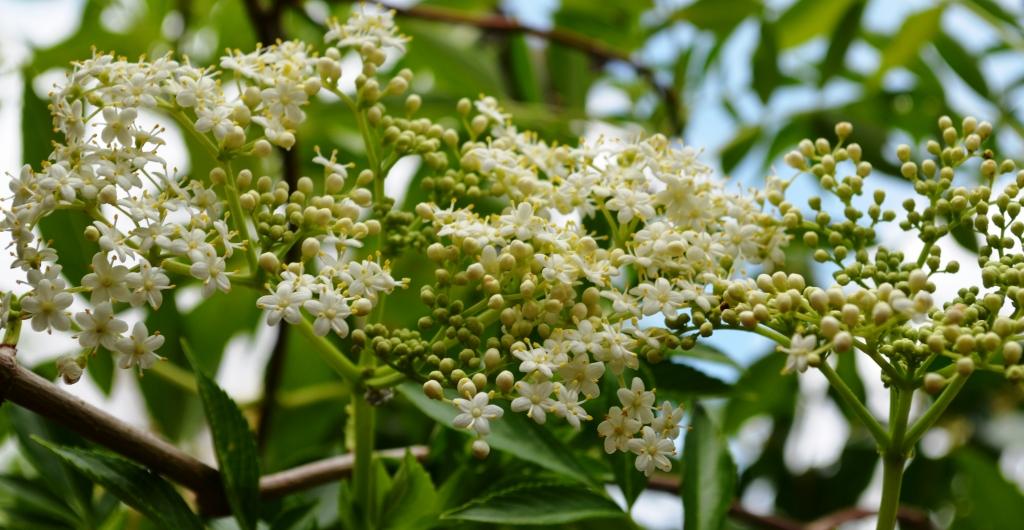
Elder
In the fruit garden: I finally have grown goji berry from seed, and it is doing surprisingly well, now about a foot high. Cape gooseberries all doing well, and just starting to flower. The snot apple tree (Azanza garckeana) has put a flush of new leaves, so hopefully it will defeat the mealybug this year and give us a good crop. All the granadillas are doing well, especially the yellow variety, which has given us gradually more fruit each year.

Firethorn – Pyracantha 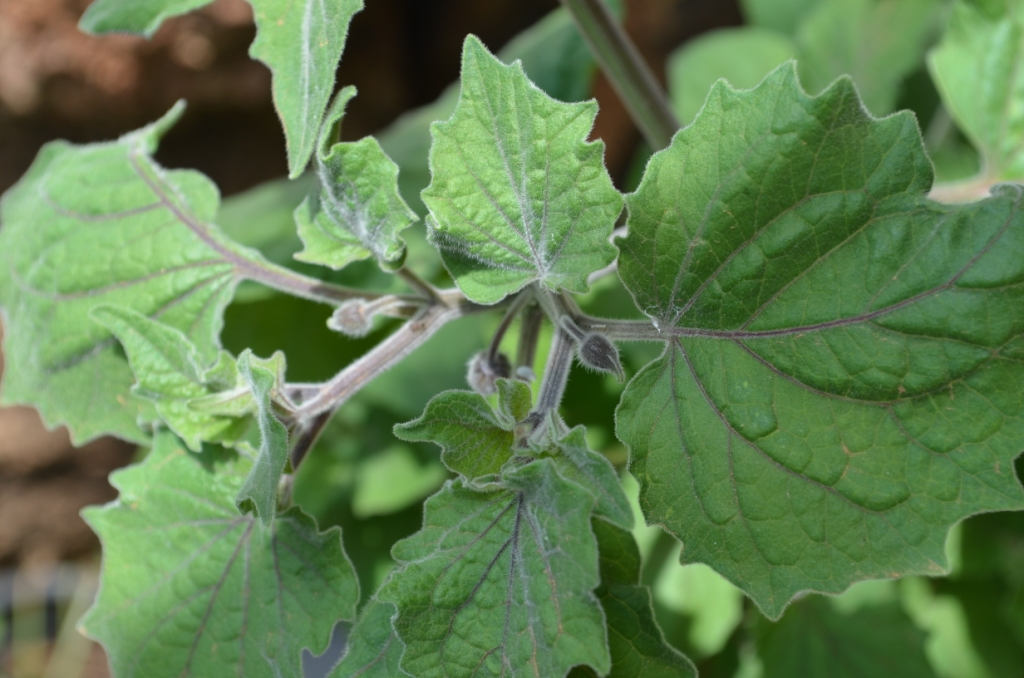
Cape Gooseberry – Physalis 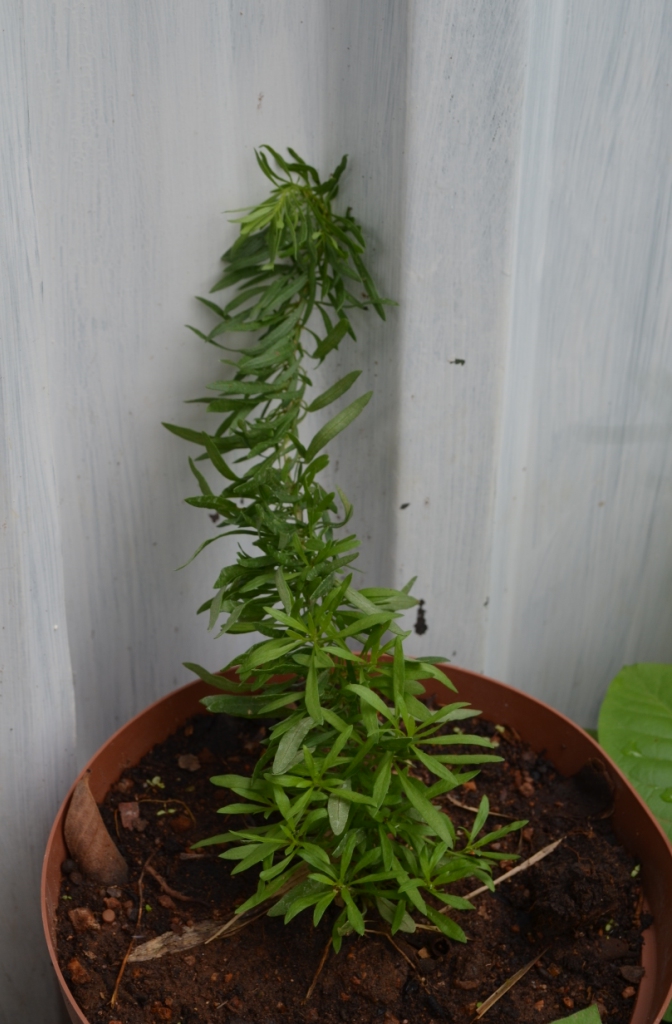
Goji – Lycium spp
In the indigenous garden: These recent rains have transformed brown sticks into a dazzle of bright new green buds. All the combretums, grewias, and acacias are covered in soft green hues. The Vitex zeyheri has beautiful grey leaves, and the marula and sausage tree are bursting into new leaves tinged with burgundy. But the star of November is always the African wattle, which is now in flower, and full of birds. Purple Monsonia flowers are opening up and Xerophyta retinervis is as showy as it can get after the rains.

Indigenous garden 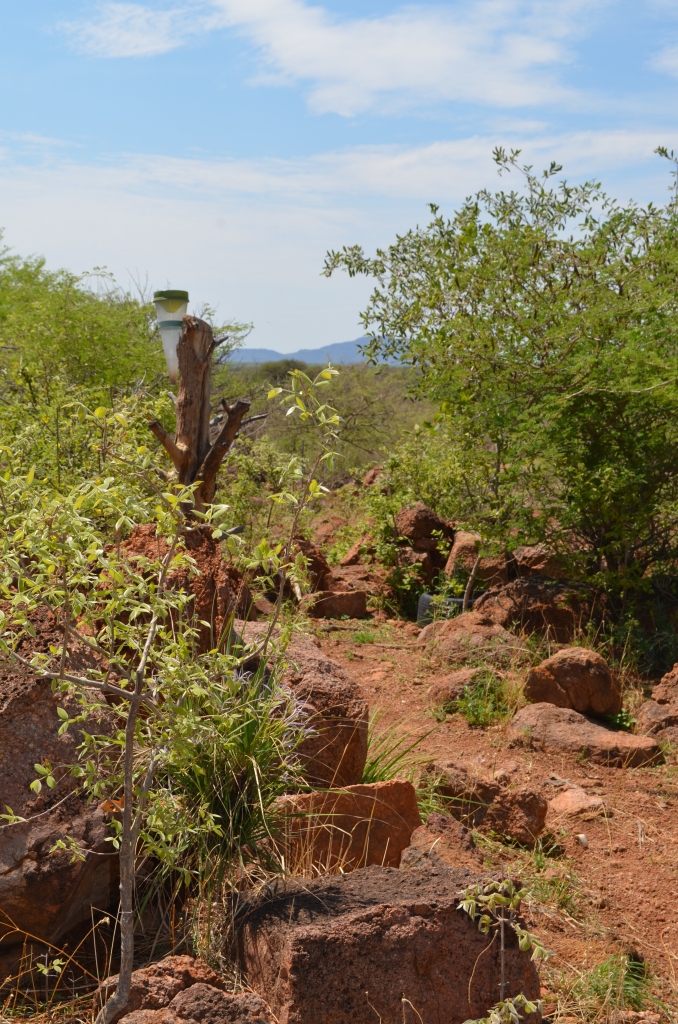
Rain gauge overlooking Modipane Hill in the distance
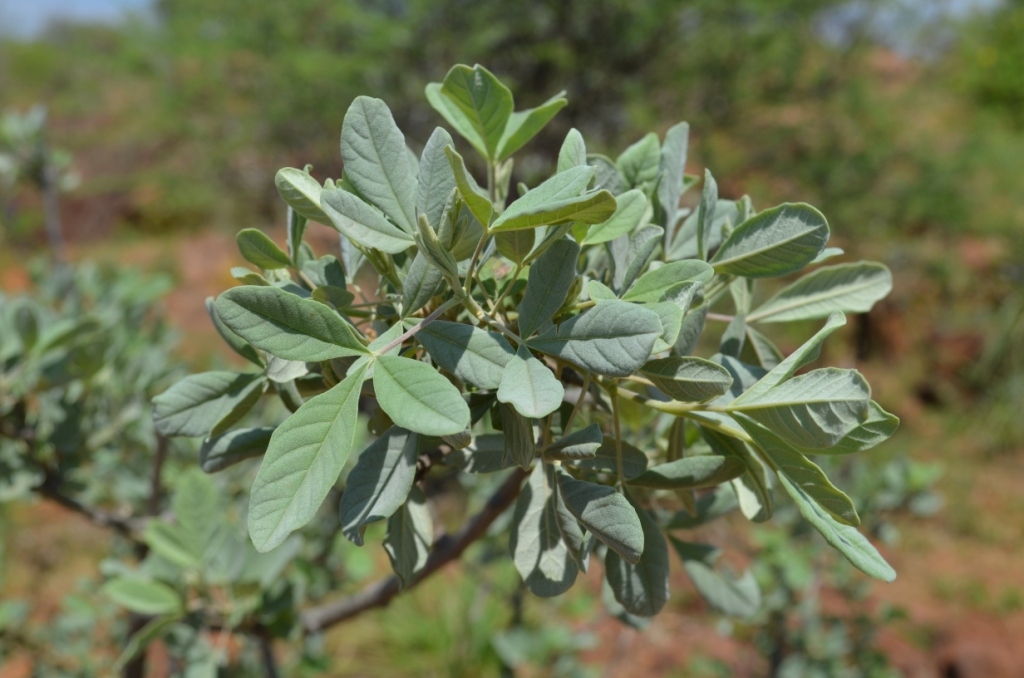
Vitex zeyheri 
Peltophorum africanum – African weeping wattle 
Xerophyta retinervis
Fungi: Mushrooms emerged after the first rain, at the base of a Cassia shrub, and while they looked so yummy, I think they are poisonous – Agaricus xanthodermis – Yellow staining Mushroom.
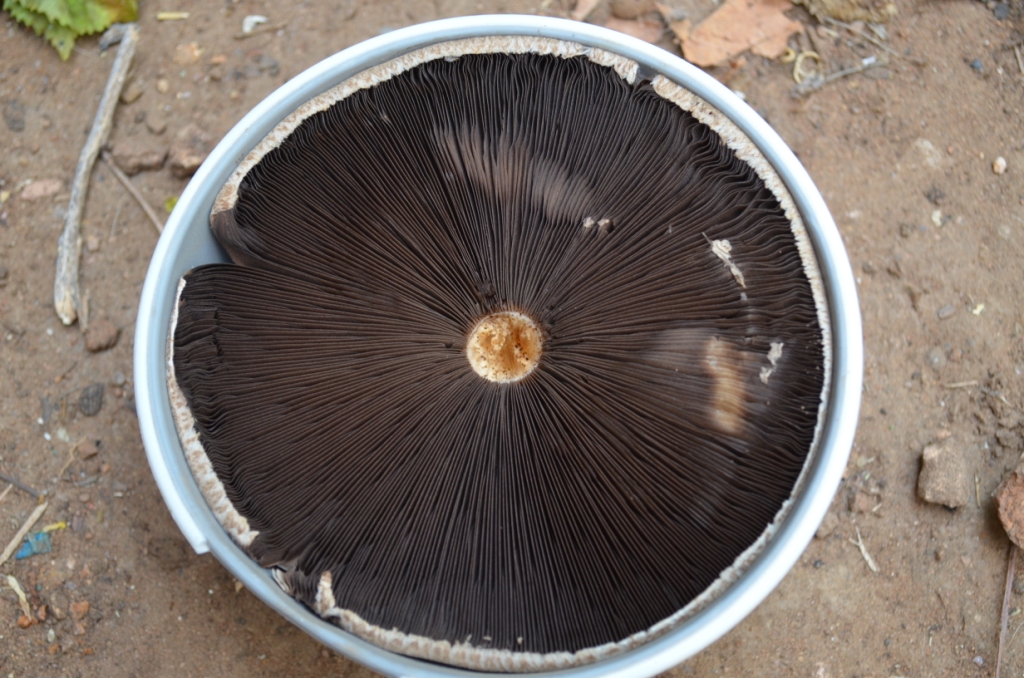
Agaricus xanthodermis lamellae 
Agaricus xanthodermis cap and stipe 
Agaricus xanthodermis
In the garden: Cannas have started flowering, and Erigeron has created a gorgeous mat of flowers. All the Bromeliads are doing well in the jungle garden along with recently planted Hypoestes phyllostachya, the Ti plant, Bird’s nest fern and Statice. But the most beautiful is the Orange Jasmine, which is smelling absolutely divine.

Statice 
Orange Jasmine 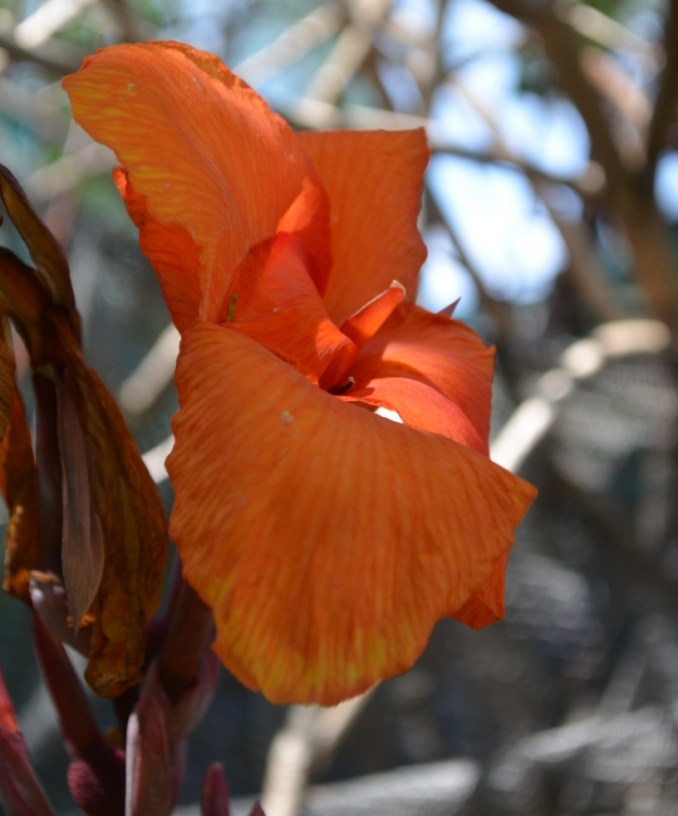
Canna 
Bromeliad and Birds nest Fern (Asplenium)
November 12 2019 – we received 7mms of rain last night, a lovely light and steady rain
November 13 2019 – we received 40mms of rain last night, the garden is now a carpet of green.

Rain Clouds coming from the West
November 18-19 2019 – we received 15 mms of rain during the night and 5mms around 4pm, which gave a beautiful double rainbow just before sunset.
In the vegetable garden today: We’ve harvested tomatoes from four plants so far, the indigo rose cherry tomato has just ripened too, and tastes lovely as well as having interestingly coloured tomatoes. The sunflowers have flowerheads developing, and the purple bean gave me two beans before rotting off. The chard, sorrel and celery are all doing fine with no problems at all. I have three chickens who have learnt to fly out of the coop, and are starting to become a problem as they’re pecking out all my sprouting rocket and radishes. The cobs on all the maize and popcorns are starting to develop nicely, and the bulls blood beetroot is ready to harvest.
In the herb garden today: Parsley is starting to spring up since the rains, and the sage has just settled into its place, and looks nice and healthy. The salad burnett, basil and summer savoury are all doing well. Fennel and dill haven’t germinated yet, so I think my packet of seed has been left open too long, so will have to get a new one. Lemon balm, yarrow, nettle likewise. I think the artemisias need a more friable mix compared to my usual more gritty mix. So will sow again next week. The feverfew is flowering, gotu kola and mint are invading whatever space they can find, and withania somnifera – ashwaganda is just beginning to take off. I bought some oregano seedlings from Sanitas and so happy, as I’d lost my last batch to a group of tortoises we gave a temporary home to in the garden. I really hope they will take over like the last plant did, as I love to use oregano in quite a few dishes. The coriander has gone to seed, and now just waiting for it to dry on the plant.
In the fruit garden today: The natal plum has just started to flower, so hopefully we will get some more fruit this year. The mmilo are all flowering, and I managed to find some custard tree seedlings.Finally! I can’t wait for this lovely fruit tree to grow and bear their delicious fruit. Cross fingers. The papaya seeds that I sowed have just started to germinate, and I have a few varieties, so now trying to work out where to plant them, as space is becoming an issue. All the grewias are flowering, and since the goats are no longer around, I think we’ll get a lot of fruit on the bushes this year. All of the citrus flowers aborted earlier in August, so hoping that a second flush will appear. Unfortunately my Macadamia tree bit the dust – that’s the second one I’ve tried, so it will have to wait until I’m ready to try again. As its a permaculture garden I don’t treat the trees for the fungal diseases that I know are quite prevalent in the garden (as the Avocado quite quickly gets the black stem rot). So I will have to find the perfect place for it next year.
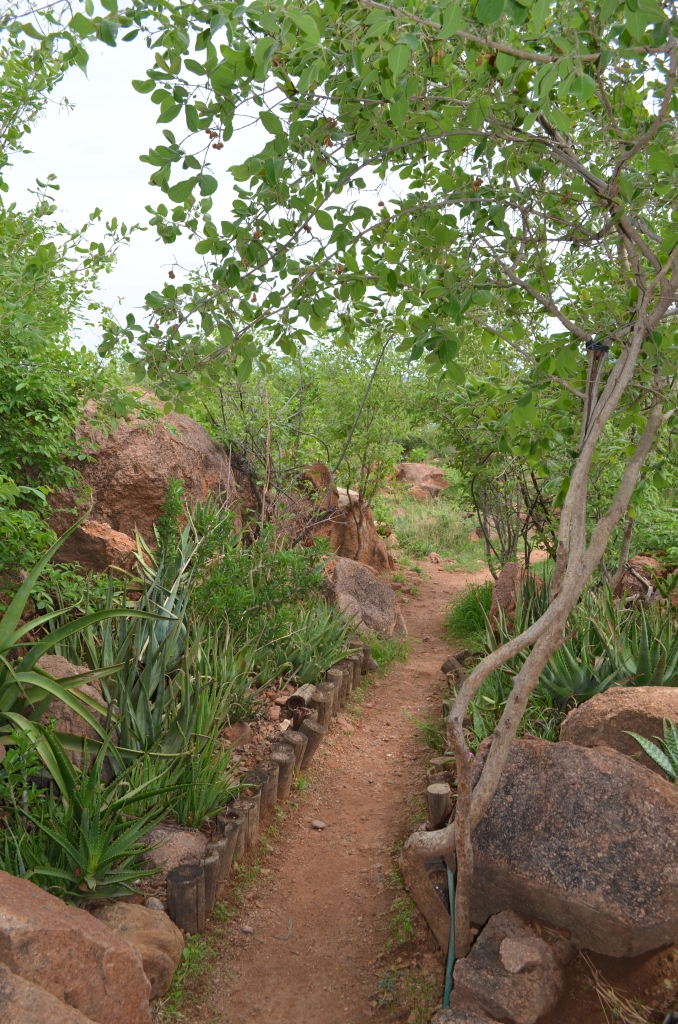
Indigenous garden 
Visiting horses in the garden
In the indigenous garden today: Purple flowers are prevalent in the garden at the moment, from Ledebourias peeping out from under bushes and grass, to deep purple Vernonias putting on a pretty display alongside the light purple Barlerias, and creeping Devil’s thorn. While wild foxglove seedlings are popping up all over. Complimenting the purples are the yellows – Talinum flowers are just starting, Eriospermum porphyrovalve form dense clusters on thin soils and the perennial hibiscus have started to flower too. White Heliotropiums, Crinums, Clerodendron ternatum and Chlorophytums are now in flower. The spectacular Ornithogalum seineri flowers are just about to open, and the red balls of Ammocharis cornica are just finishing. The unusual green flowers of Dipcadi marlothii, make a lovely sight at the bottom of the garden, and Dipcadi viride are just about to open. We were visited by a group of horses that usually move around this area, but it was so lovely to see them looking better now that there is some grass for them to eat.

Vernonia 
Felicia mossamedensis 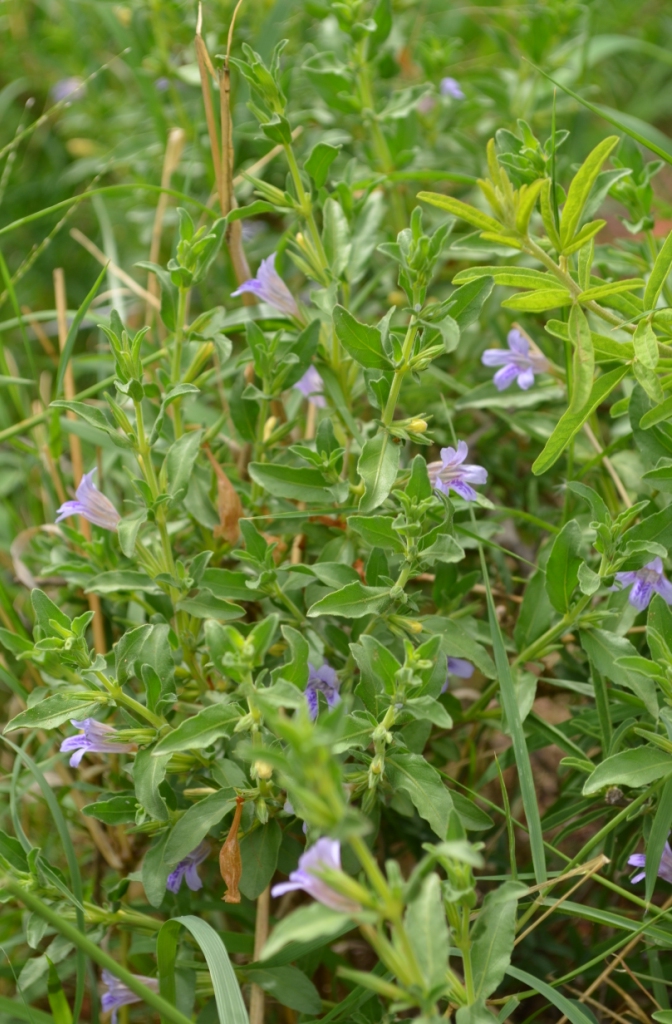
Barleria 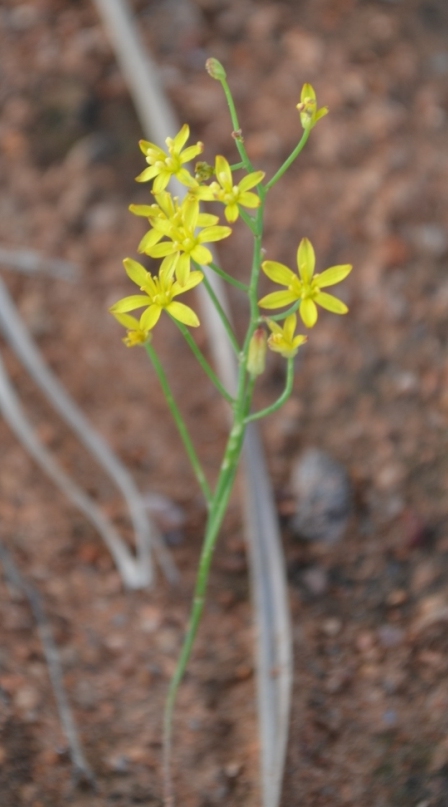
Eriospermum 
Chlorophytum 
Dipcadi marlothii 
Ledebouria 
Ledebouria 
Talinum 
Ammocharis coranica
In the pond gardens today: After the heavy rains, we noticed the catfish pond had developed a leak, whether the resident monitor lizards claws made a hole, or a falling rock, we haven’t managed to find out yet. First we have to empty the whole pond of the huge swathes of Pontederia cordata, then we will relocate the catfish to a temporary tank, before we will be able to see where the hole is. It is back breaking work, and usually results in a little sunstroke at the end of the day.

Digging the pond 
Resident Cape Shelduck – that is until his flight feathers grow..
Last week we were given a Cape Shelduck, a resident of the village had kept it in his chicken coop and was scared it was going to die, as it wasn’t eating and looked pretty miserable when we got it. So first it became a resident in our kitchen while we made the shack a bit more secure for him, and then we dug a shallower pond above our large central pond, so that he had somewhere he could stand and swim in too. He’s been on an unhealthy diet of kapenta, and cat nuts, but he seems to be eating well and he really loves taking a bath in the pond, after which he spends about an hour grooming himself. Luckily he had a feast of flying ants the other day too.
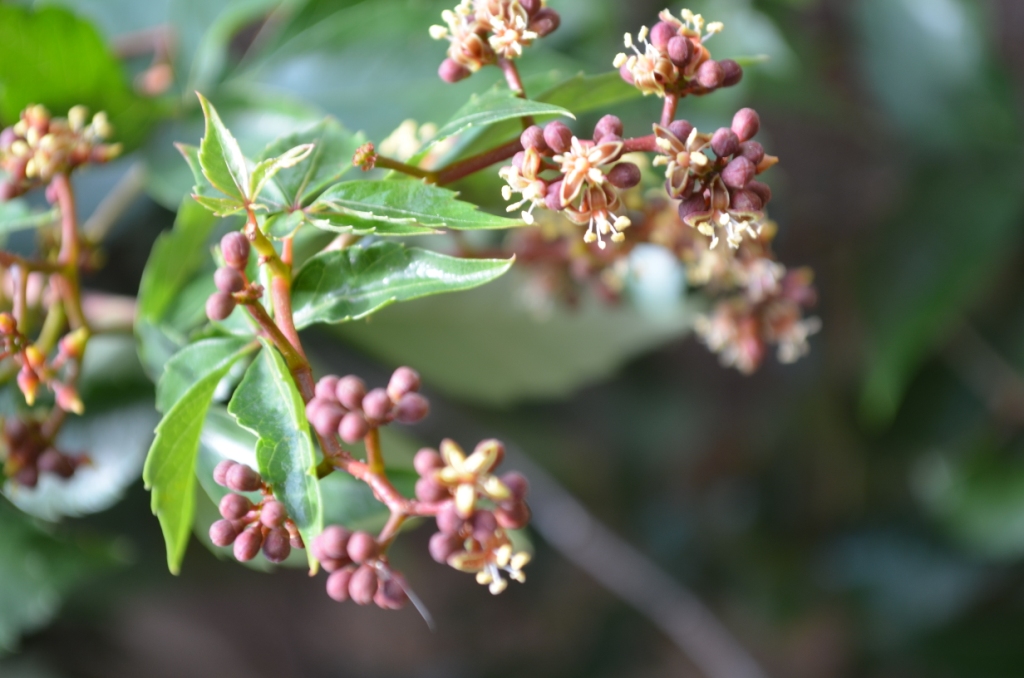
Virginia creeper flowers
In the garden today: I have started to limit my spending on plants, and so have started filching from my Mom’s garden, not quite without her knowledge. She’s been super sweet, and actually given me a lot of shade loving plants, and cuttings for my shady tropical garden, many with lovely variegated foliage. Chlorophytum – hen and chickens, Dieffenbachia, Aglaonema, lovely variegated Yuccas, a few cuttings of Hydrangeas and Impatiens, a Ti plant, Strelitzias, Anthericum and some Bromeliads. I want to add some orange and purple flowers to bring out the bronze foliage of the Dyckias, Alternanthera and Philodendrons, so I think Clivia, Liriope, Vinca and Cyclamen will work well, plus perhaps some Gerbera in the more lightly shaded areas. Our large African snails are back in the garden after the rains, and they’ve had babies… we have to be so careful when walking around. The Virginia creeper is in full flower, and is lovely to brush past when walking around behind the house.

Alternanthera 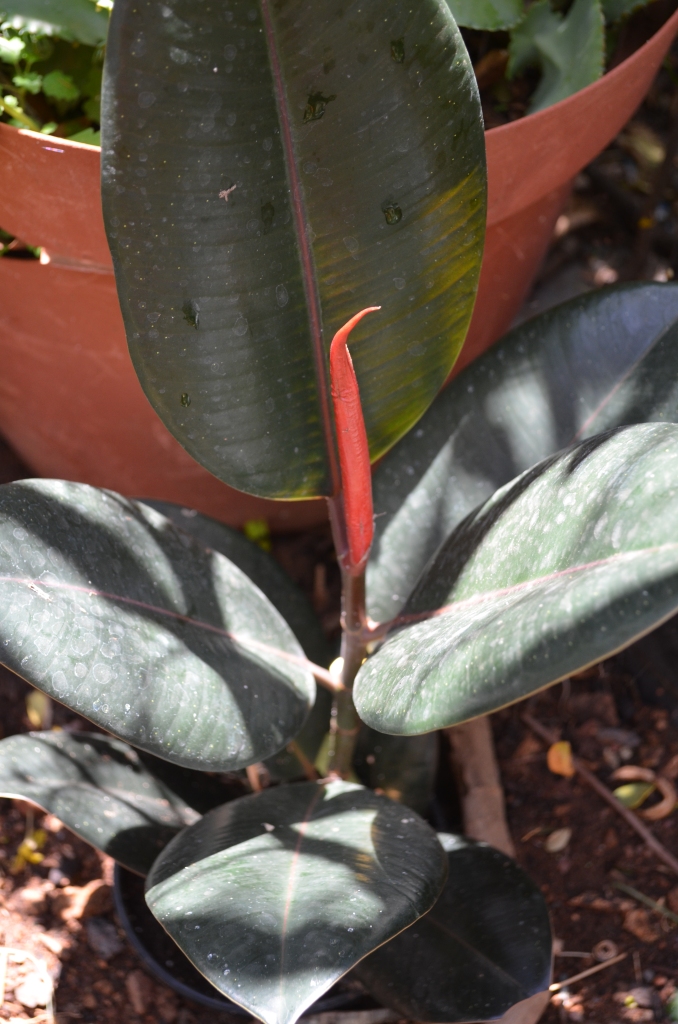
Ficus 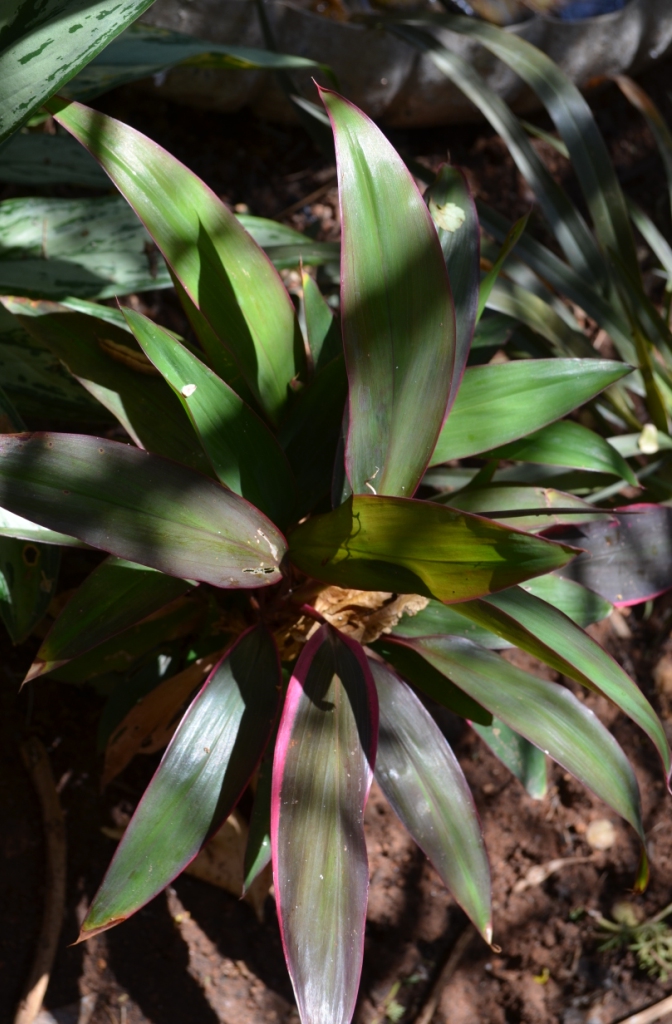
Ti Plant 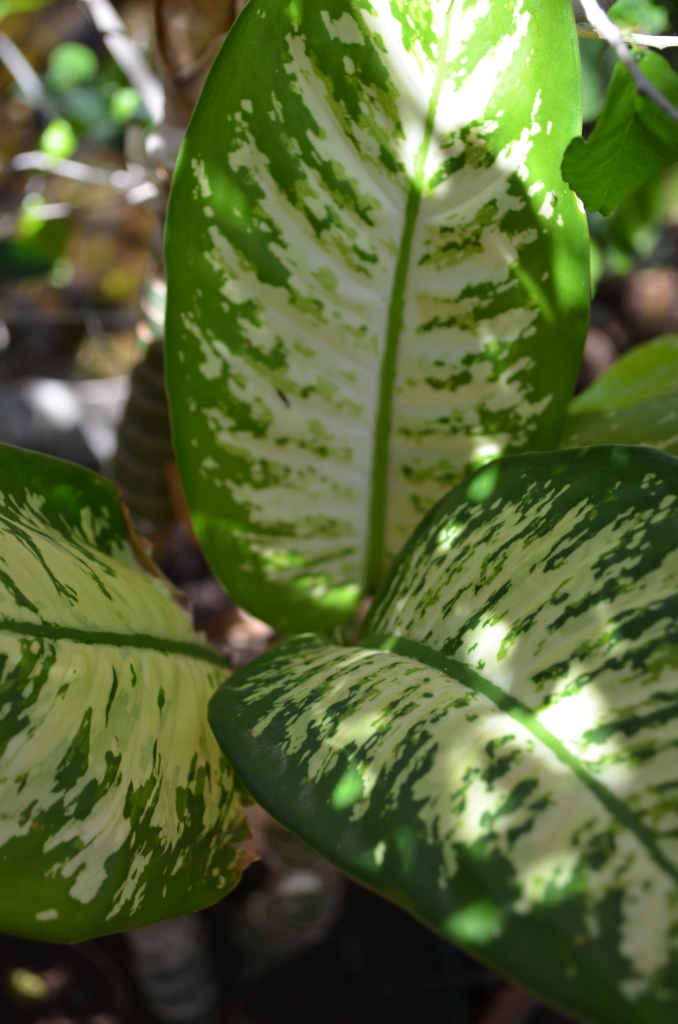
Dieffenbachia 
Aglaonema

Large African Snail
November 23 2019 – while I was away at the farm, we received 4mms of rain here in Matebeleng
Sad news and a valuable lesson: I was digging up an area of my rather long compost heap that’s inside my herb garden, and heard the birds getting a bit twitchy but didn’t pay them any attention, and unfortunately I dislodged an underground nest belonging to a white throated robin chat. I was so distraught! I put it all back as it was, and kept an eye on them to see if they could rebuild their nest, and they stayed all day fluttering around the eggs, but unfortunately this morning they are no longer in the garden. I have no idea if they can lay more eggs in one season, but I’ve learnt my lesson, and will have to be more careful about where I dig in the future.

White throated Robin Chat 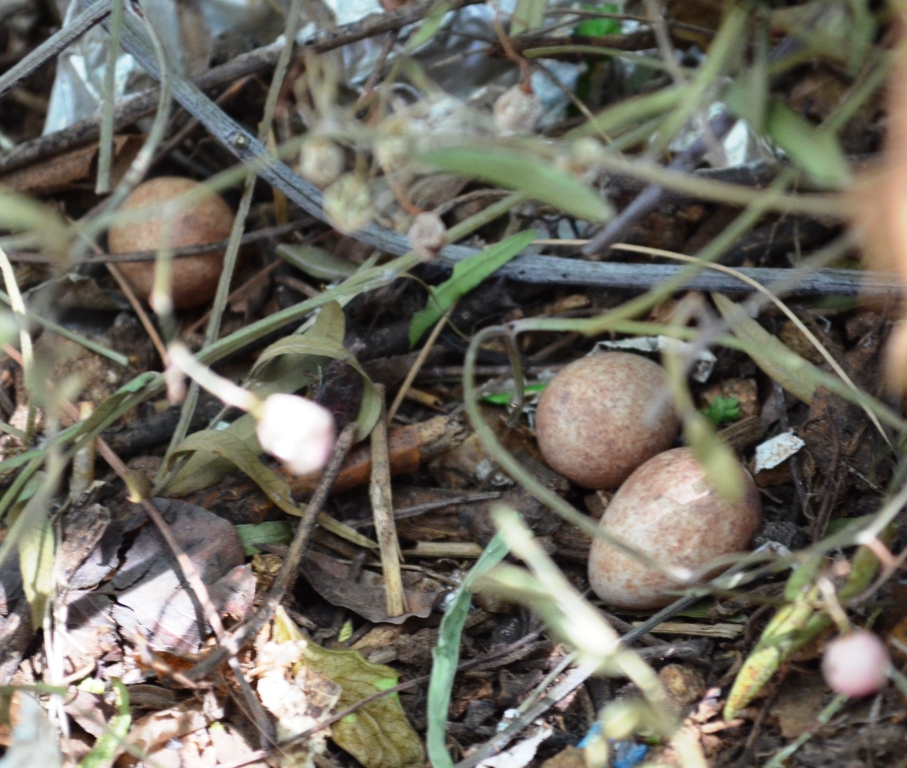
White throated Robin Chat eggs
In the vegetable garden today: the sugar beets are doing well, and I’m about to plant out celeriac seedlings. The Potato eyes I planted a few weeks ago have sprouted, I will wait until they’re a bit bigger and then start to bank them up with soil. The radiccios have sprung back, and have fought off the mealybug. I’ve been blocking hole after hole in the chicken coop, and hoping that this last time has seen the end of the naughty critters stealing into my garden, because they love radiccio leaves. The large sunflowers have just opened up, and the Jerusalem artichokes are just about to. Usually to get lots of good tubers you should cut back the flowers, however, I like the flowers, and I get quite a good crop of tubers anyway even if I do let them flower. The corns did so well in the rains, but now with this heat I think the cobs are going to be a little short on kernels. The courgette has fought off the powdery mildew and is enjoying a second sprurt of growth. Time to stake more of my tomato plants.

Large sunflower 
Sprouting Potatoes
In the herb garden today: I planted horehound for the first time, and its doing well, if a little straggly. The catmint which I hang in pots from tree branches to keep the cats from demolishing it, has filled the one pot, so I’ve propagated it by removing a stem with roots from the rest of the bunch, and have planted it in another pot. The feverfew is flowering, although the competition in the garden is fierce, and fewer plants self seeded this year.

Feverfew 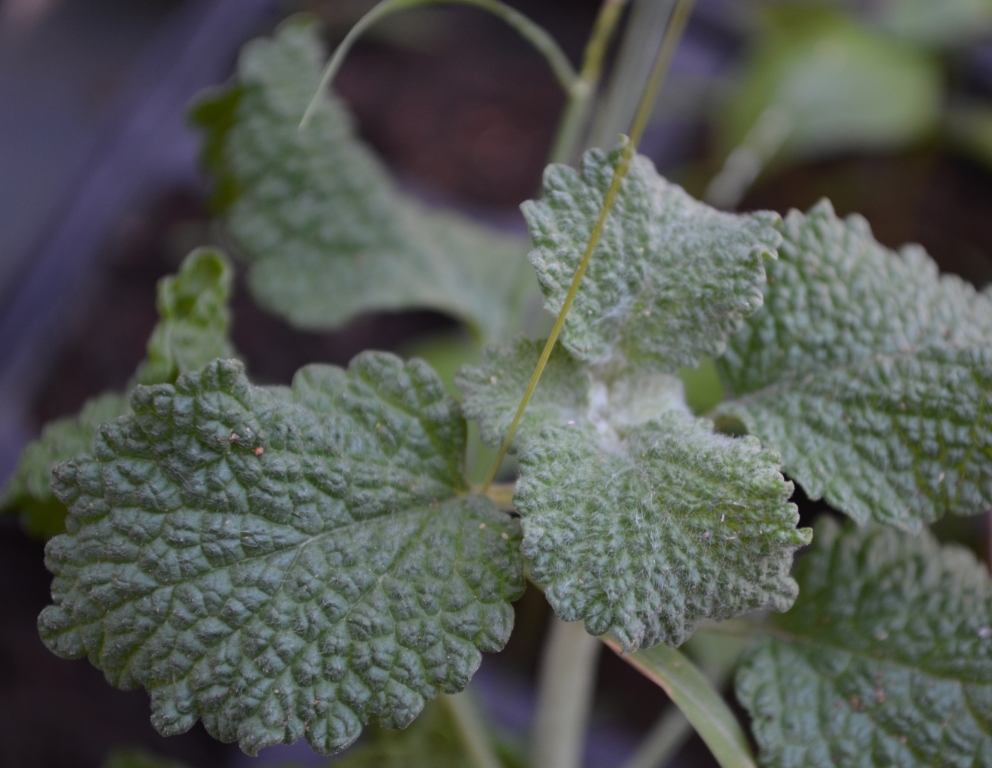
Horehound
In the fruit garden: The huckleberries still haven’t turned purple yet. Two gooseberries have flowered and the fruits are just starting to grow. The pomegranates and coffee beans are still doing well, just waiting for the fruits to ripen and the beans to grow. We have a dozen grape and papaya plants that grew from seed, so I’m busy puzzling where to plant them. The goji berry is doing well but being attacked heavily by mealy bug, just removing them by hand.. and a Kiwi plant has germinated, now I just have to keep the mealybugs off it and hope it makes it.

Cape Gooseberry
Rescued Shelduck: So our Cape shelduck called ‘Pidi’ took to the skies on Friday morning, he’s been getting stronger from when we first got him, and has had a couple of short flights, one ending up in a fence, however this one looked like he’d been flying for ages, and took him over the Notwane river onto the Oodi side, so we’re crossing fingers he makes it out there. And maybe one day, he might come back for our delicious cat nuts.
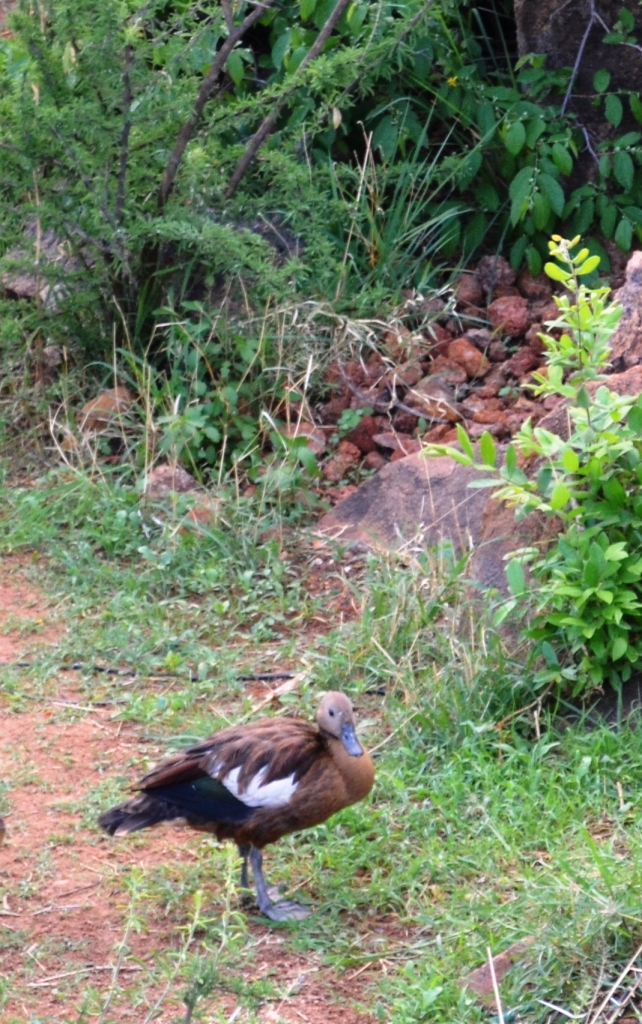
In the Indigenous garden: Evolvulus flowers are blooming, and so many Dipcadi plants, of which I didn’t realise we have quite a few varieties, Dipcadi marlothii, viride, platyphyllum, longifolium and possibly gracillimum, papillatum and crispum. Hirpicium bechuanense or gazanoides, Chascanum and Barleria are all in flower, Indigofera and Tephrosia, and the wild Portulacas, plus the unusual and gorgeously attractive Pterodiscus ngamicus are in flower.

Hirpicium bechuanense or gazanoides 
Dipcadi gracillimum possibly 
Pterodiscus ngamicus 
Evolvulus alsinoides 
Vernonia poskeana 
Indigofera cryptantha
Indigenous trees: Psydrax livida is in flower and our honeysuckle tree Turraea obtusifolia too! The wild medlar fruits (mmilo, vangueria infausta) are still green, and the Bridelia mollis trees are a little out of sync on their flowering, as the male tree is in flower, but the female tree hasn’t a flower on her. The Wattle trees still have a few flowers but are also setting seed, and the lovely bicoloured chinese lanterns of Dichrostachys cinerea are beginning to show.

Psydrax livida 
Turraea obtusifolia 
Dichrostachys cinerea 
Bridelia mollis (male) 
Bridelia mollis (female) 
Vangueria infausta
Indigenous grasses & sedges: The grasses are taking over! This year they are looking so abundant, probably as the goats are no longer around to eat them.

Melinis repens 
Urochloa mosamibicensis 
Eragrostis lehmanniana 
Unknown Fescue like grass 
Schmidtia 
Perotis patens 
Cyperus rupestris 
Cyperus erythrorhizos 
Cyperus obtusiflorus
In the garden: Anthuriums and other lovely reds coming through the green this week. Hypericum berries are turning from red to black, and the Bromeliads continue to flower. Zephyranthes, the rain flowers have been blooming off and on from the start of the rains, and this week I planted an Iceberg rose from my Dad in the garden, plus a miniature, and both look like they’re doing well.

Anthurium 
Hypericum 
Zephyranthes
In the pond gardens: All the water lilies are flowering, Alisma plantago is just about to flower, Pontederia cordata is still flowering and so is the Amazonian sword (Echinodorus). The lovely Nymphoides indica has just started to flower, and I’m going to add it to the new refurbished catfish pond. The catfish pond was emptied of plants and water in order to find the leak, the pond liner cleaned and dried, and we found 2 holes. One was definitely due to Termites! The other to a bad join when it was first laid. So we cut a few squares of extra liner, put one each on the bottom of each hole, and on top, then using the heat gun we sealed it all together, laid the liner back, over a layer of clay to try and seal any future Termite holes and filled the pond to just above the holes. The water only evaporated a little, so we added in the 12 catfish who have grown to about 70cm now, and they seemed to be very happy, plus having removed the Pontederia they now have a much larger space to swim around. I’ve decided water lilies only from now on in the ponds, as its too backbreaking removing the huge Pontederias.

Nymphaea indica

